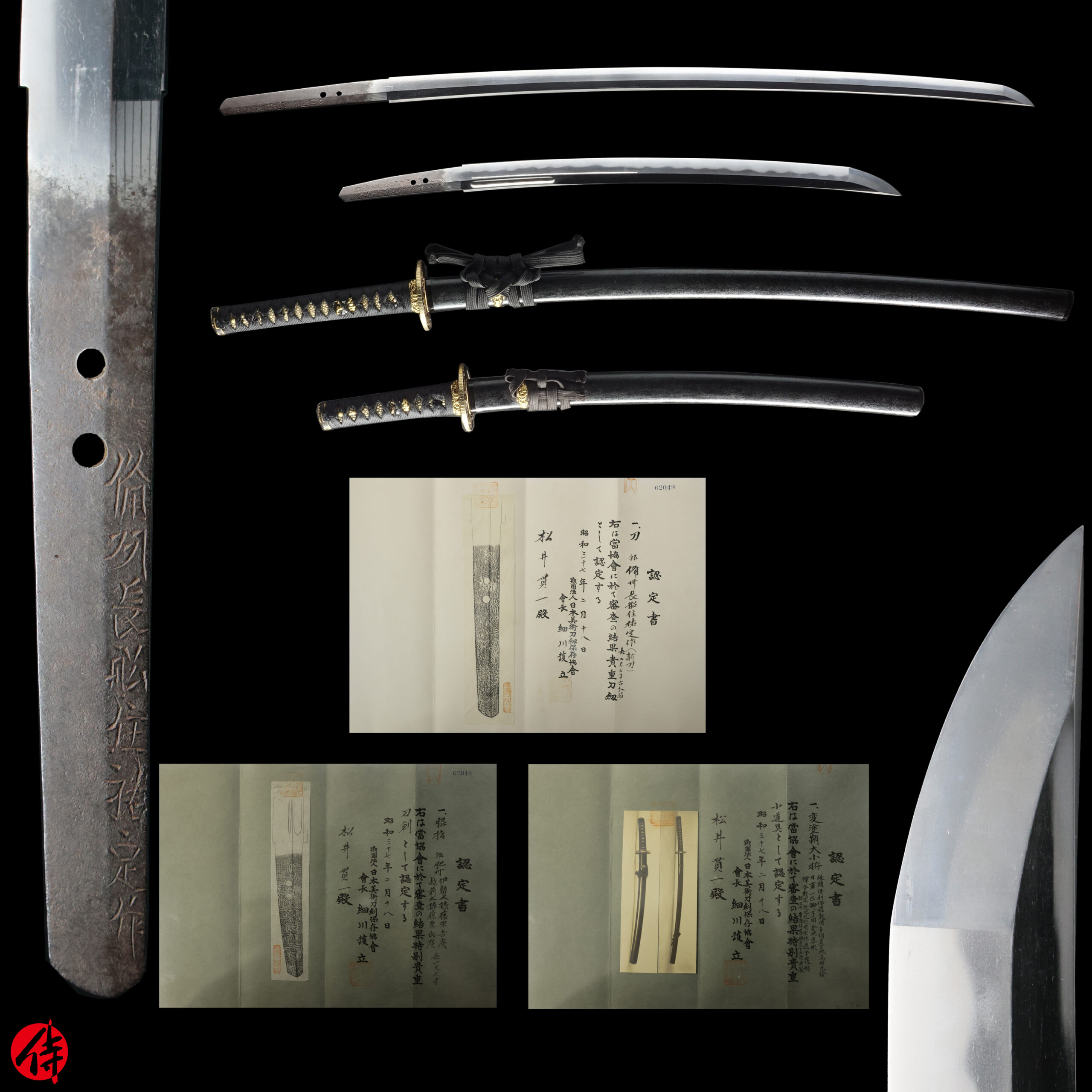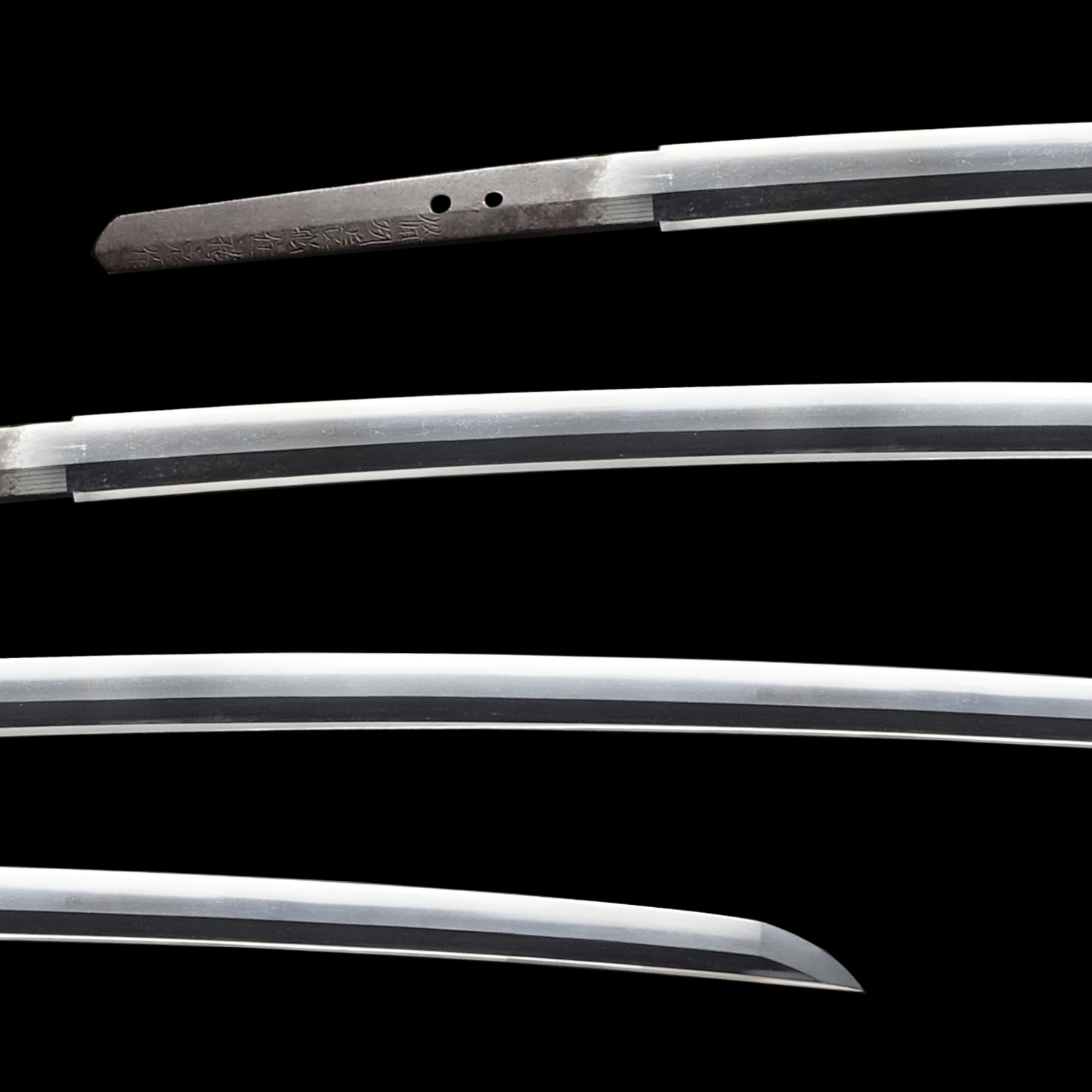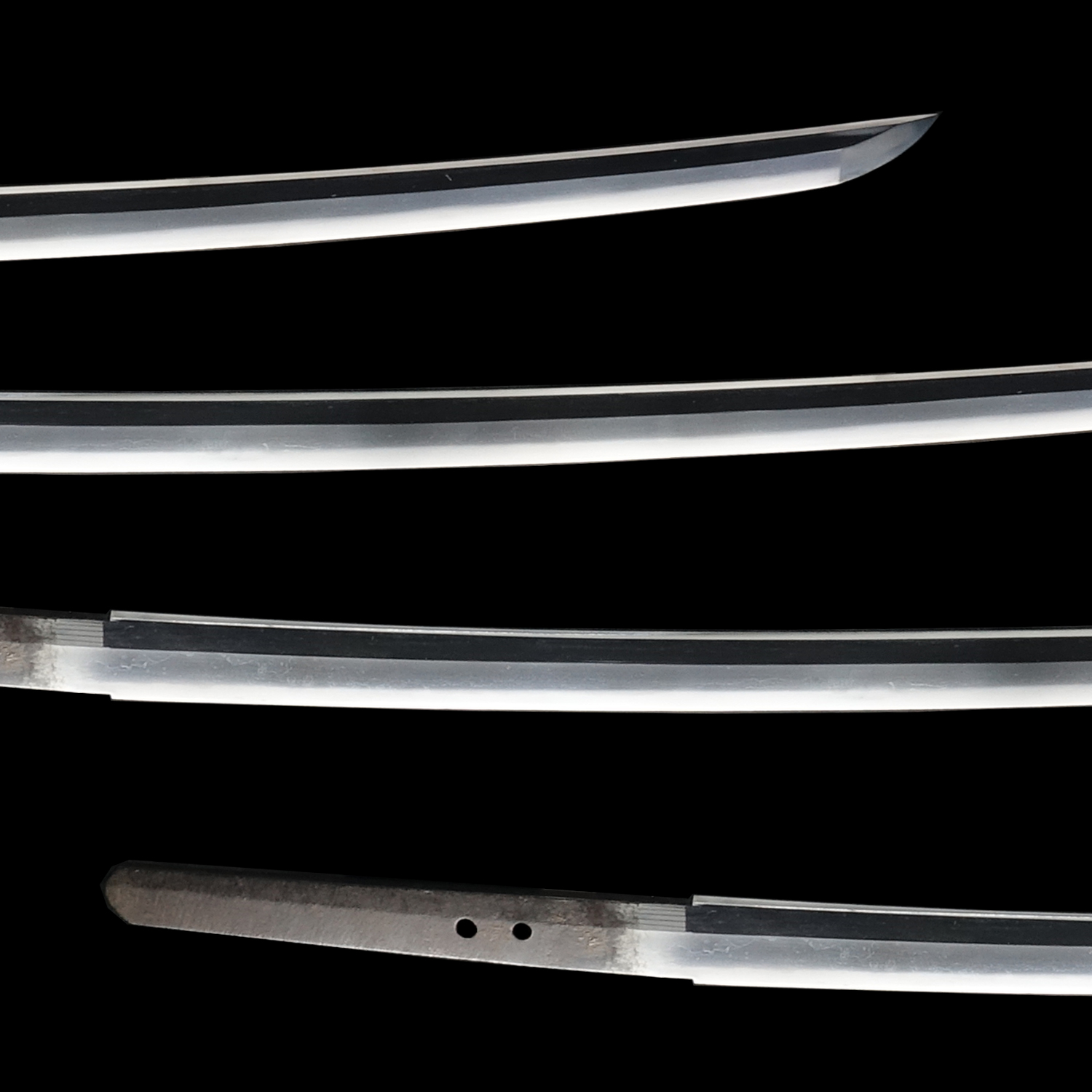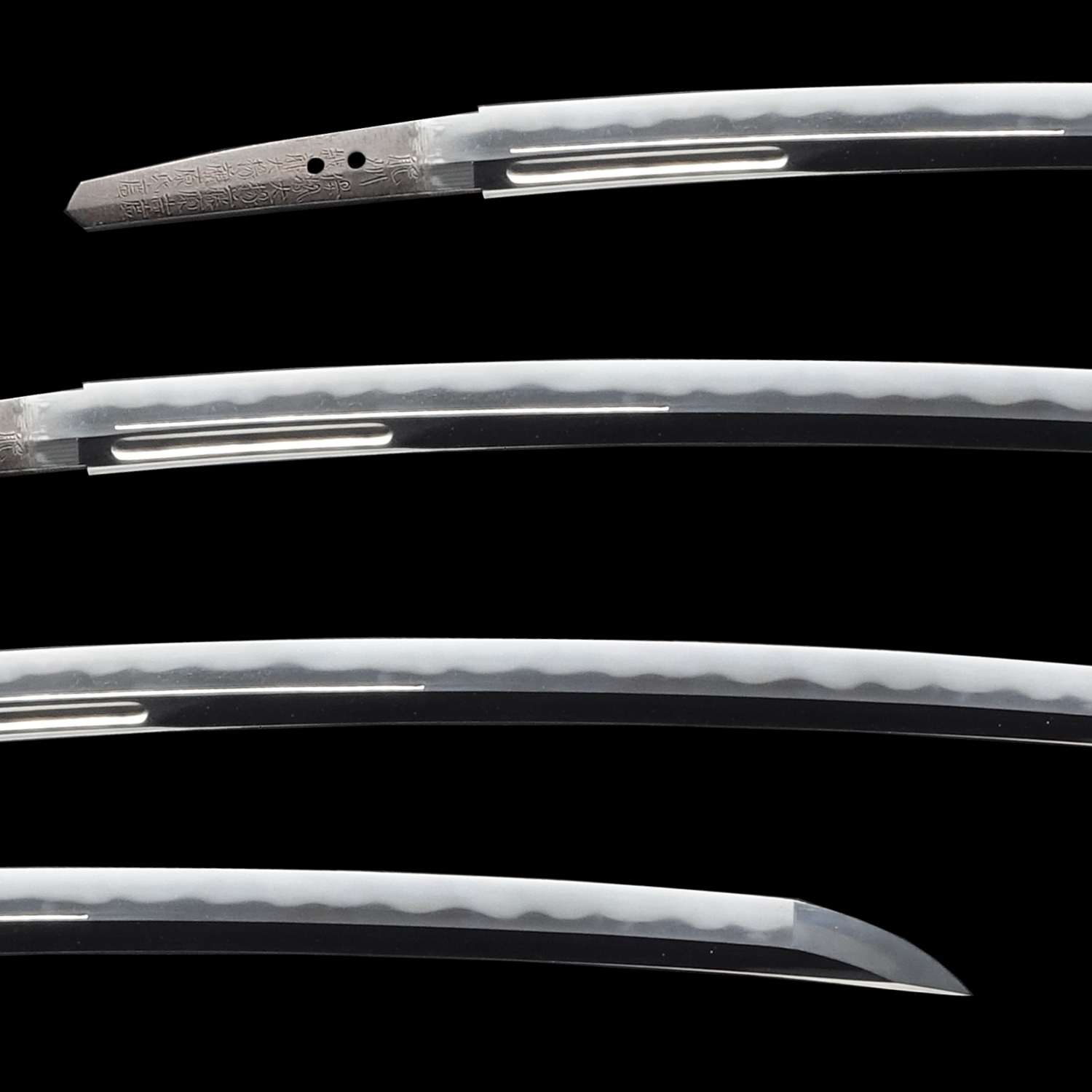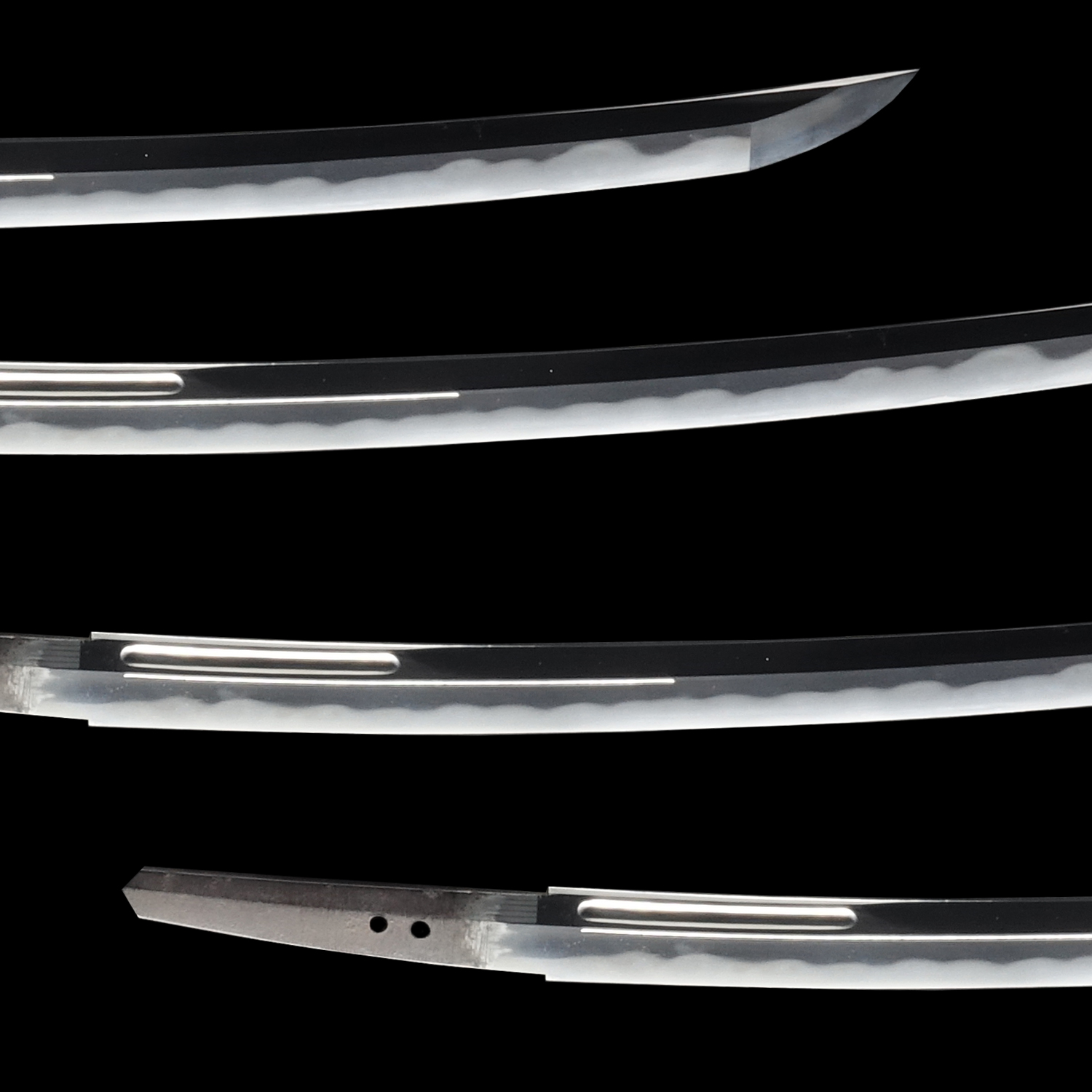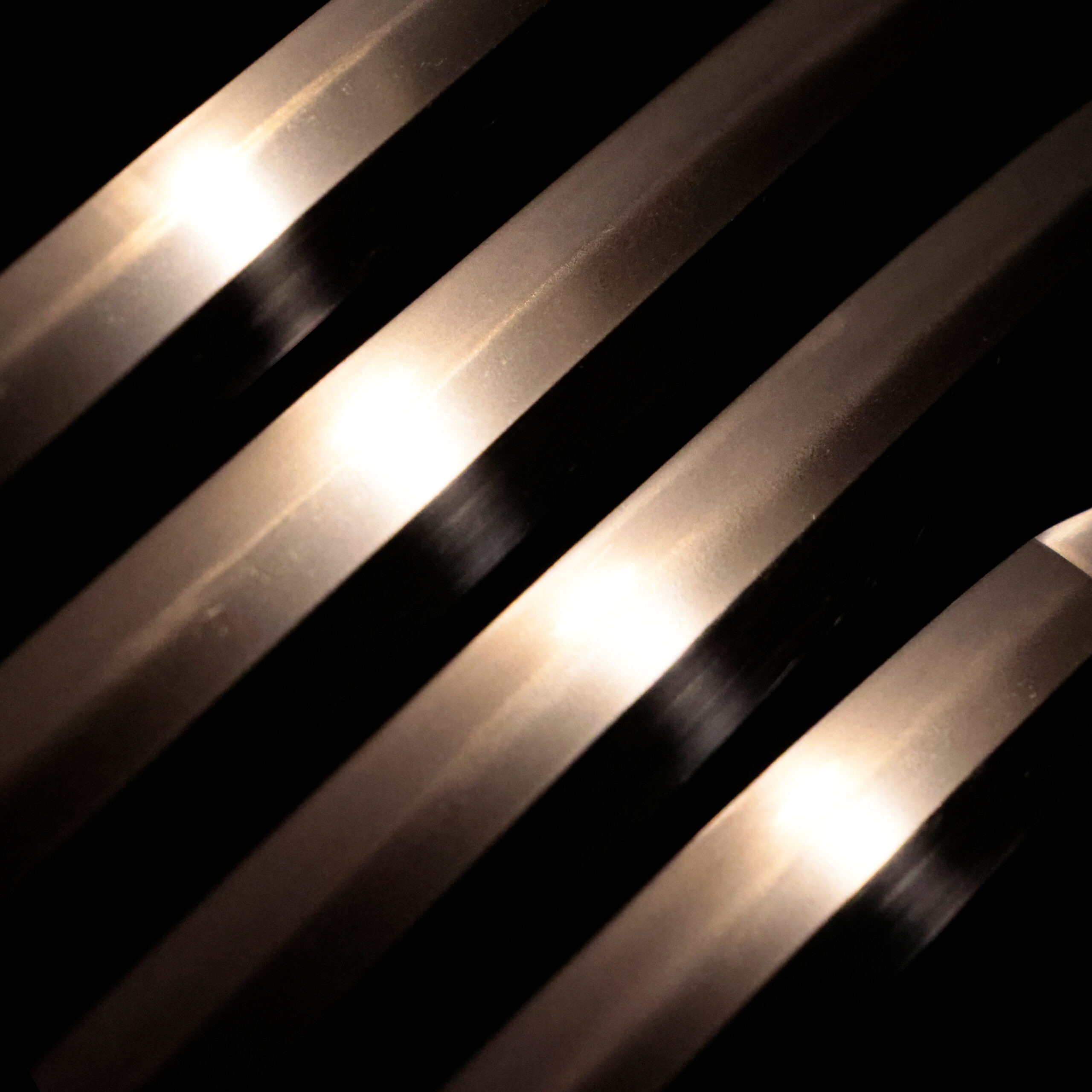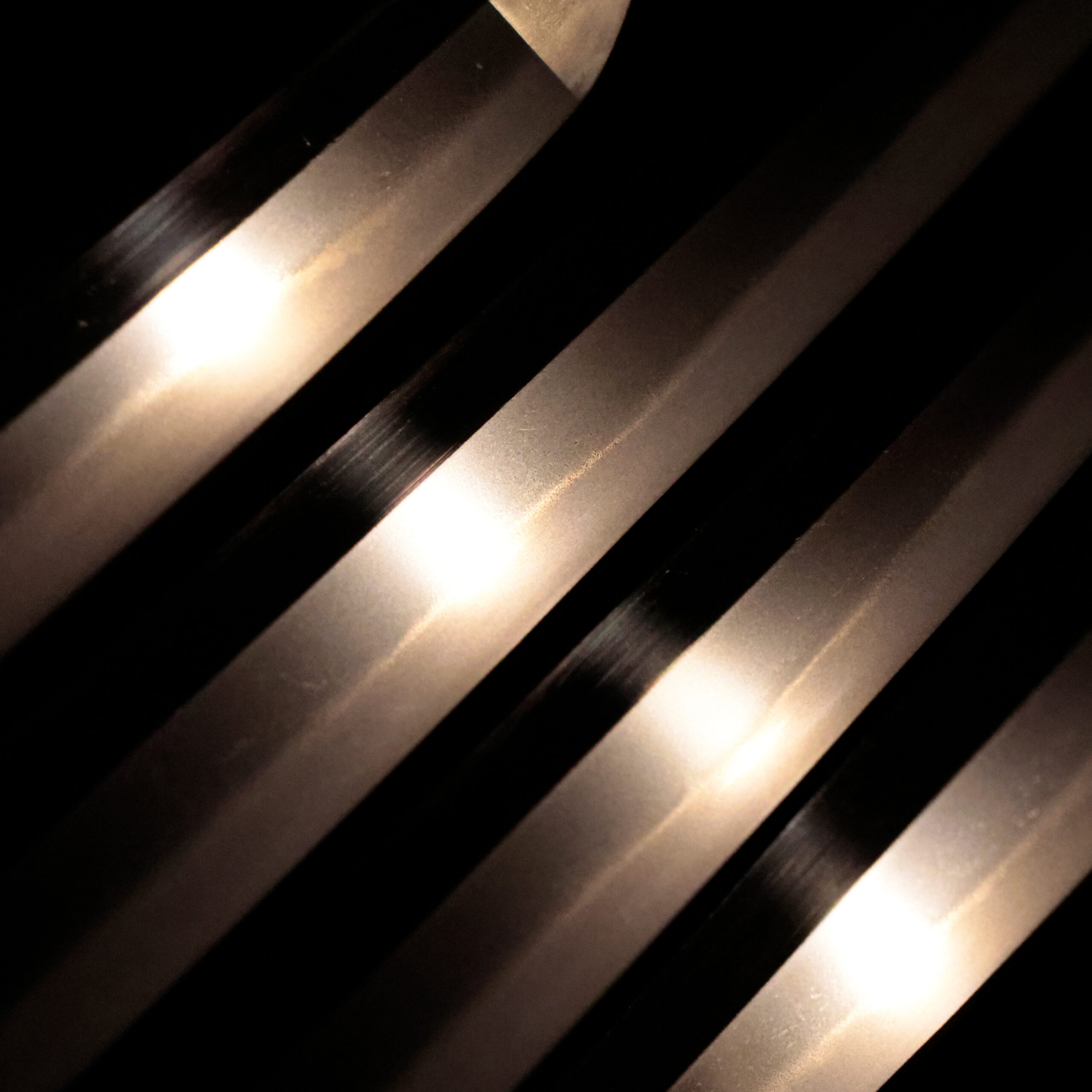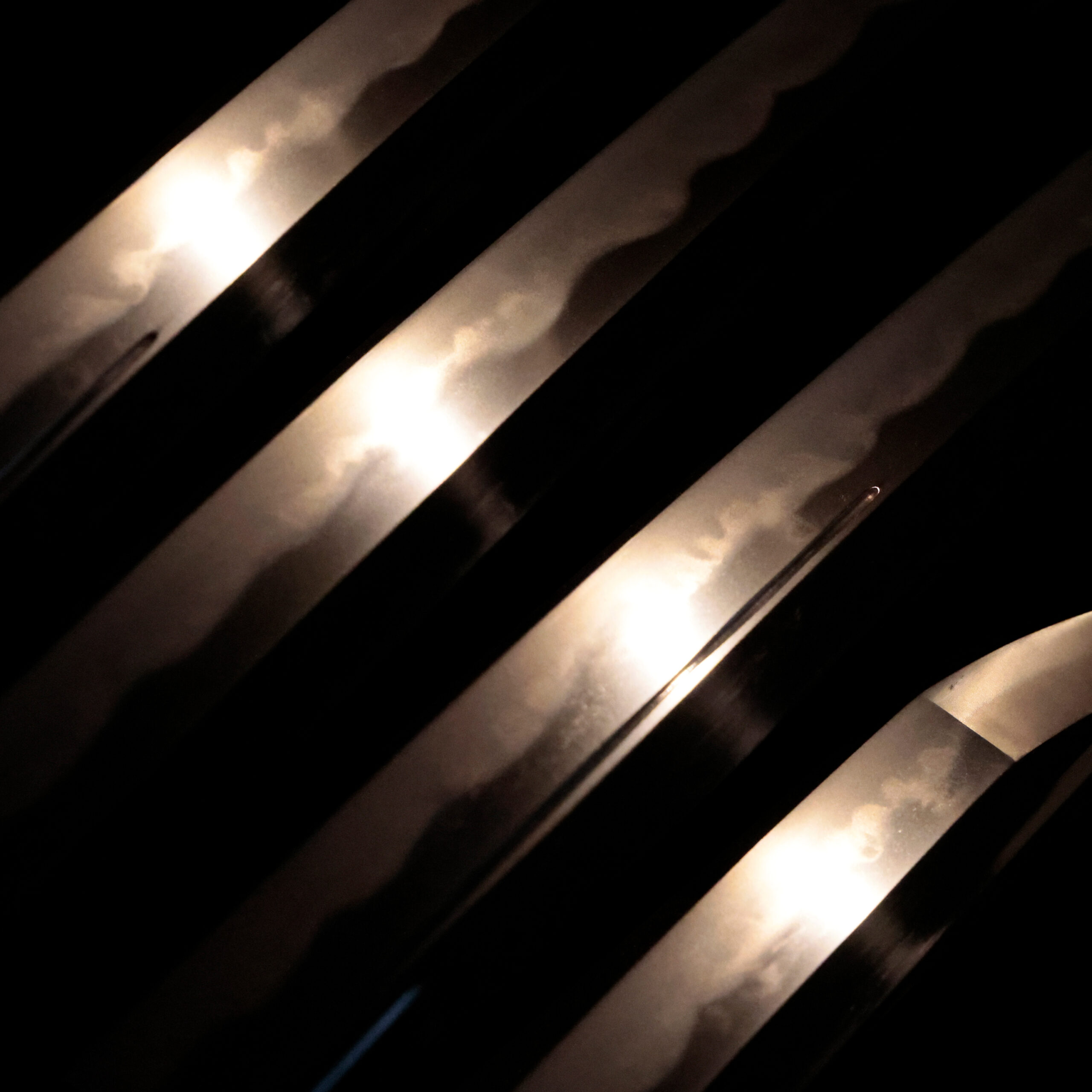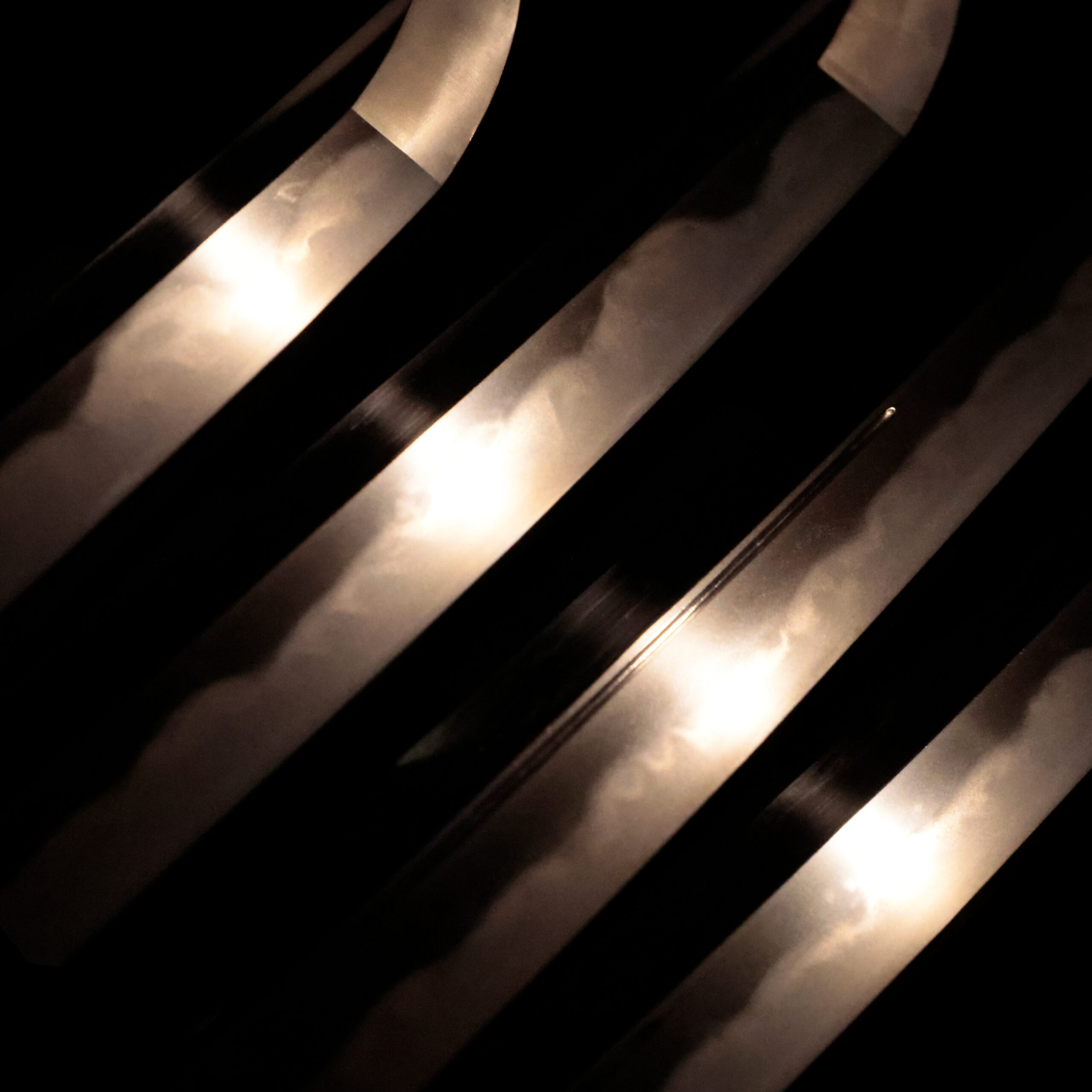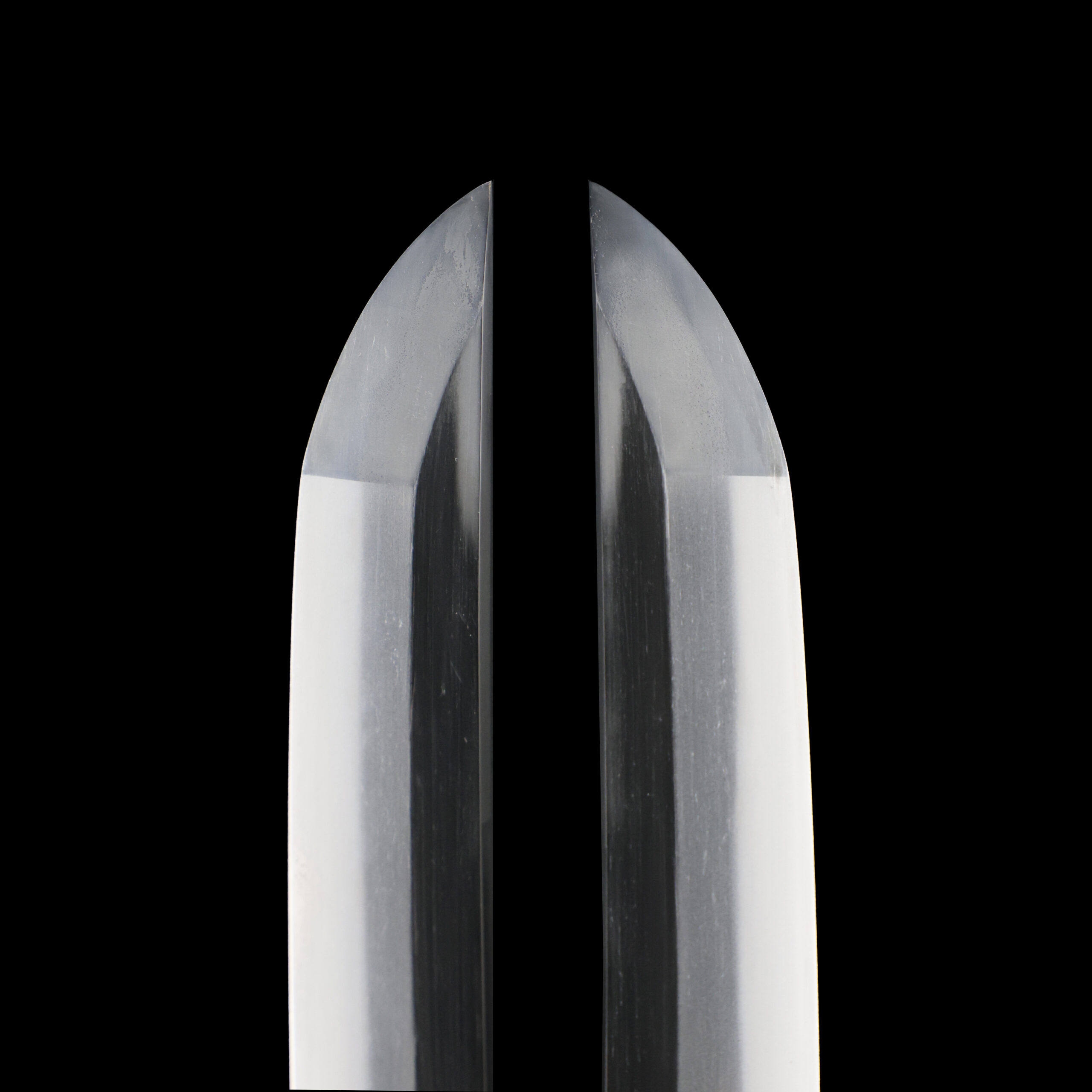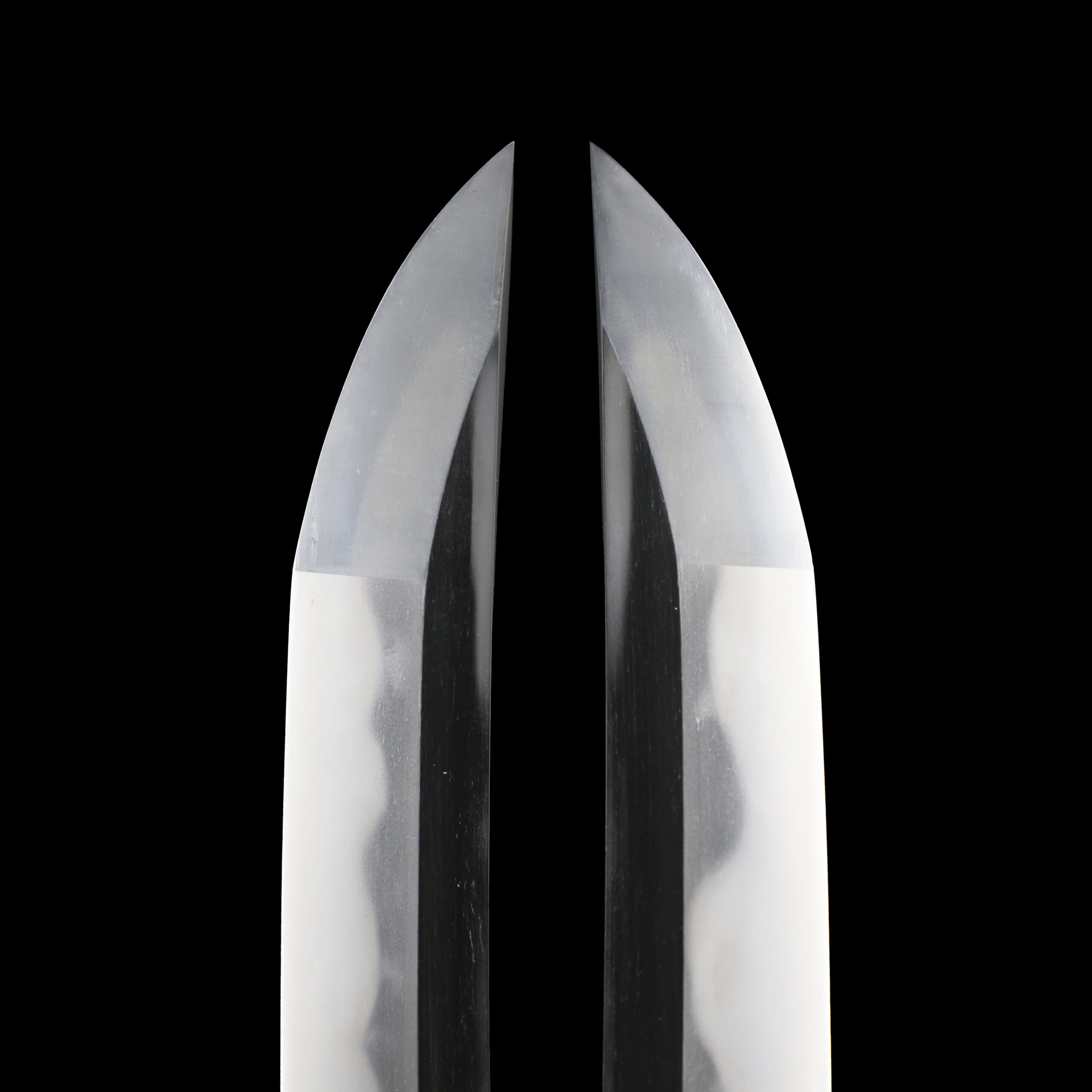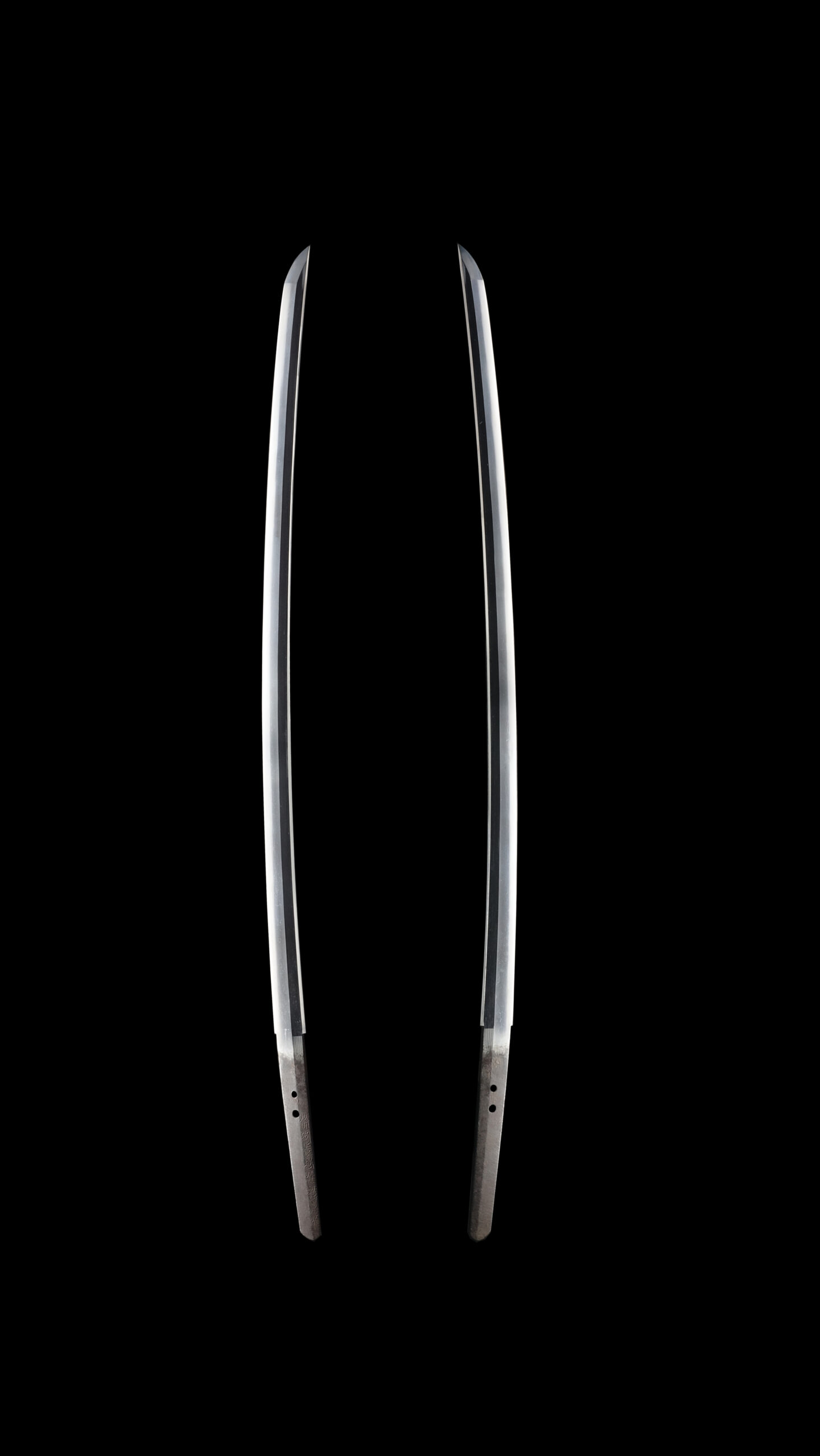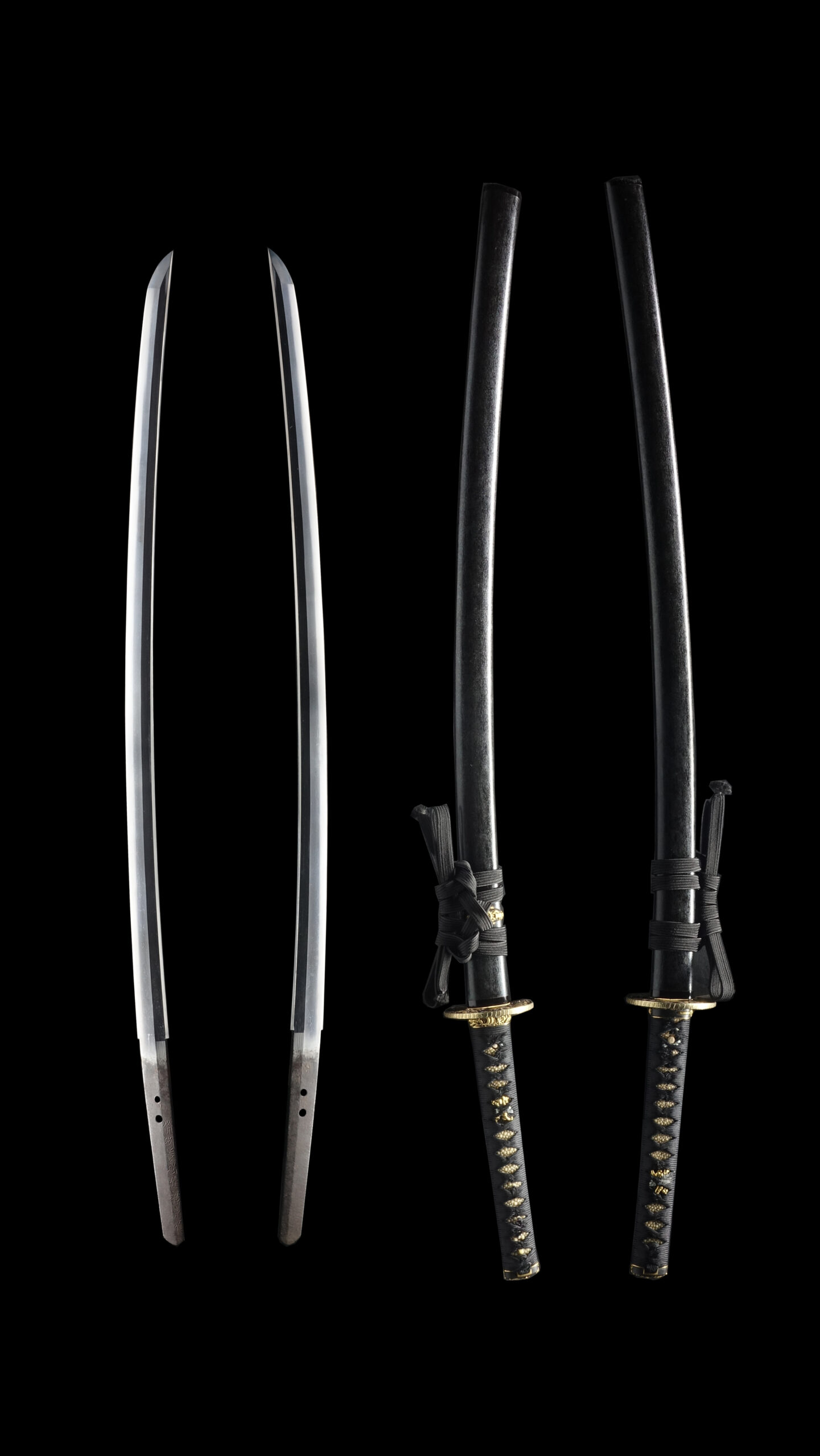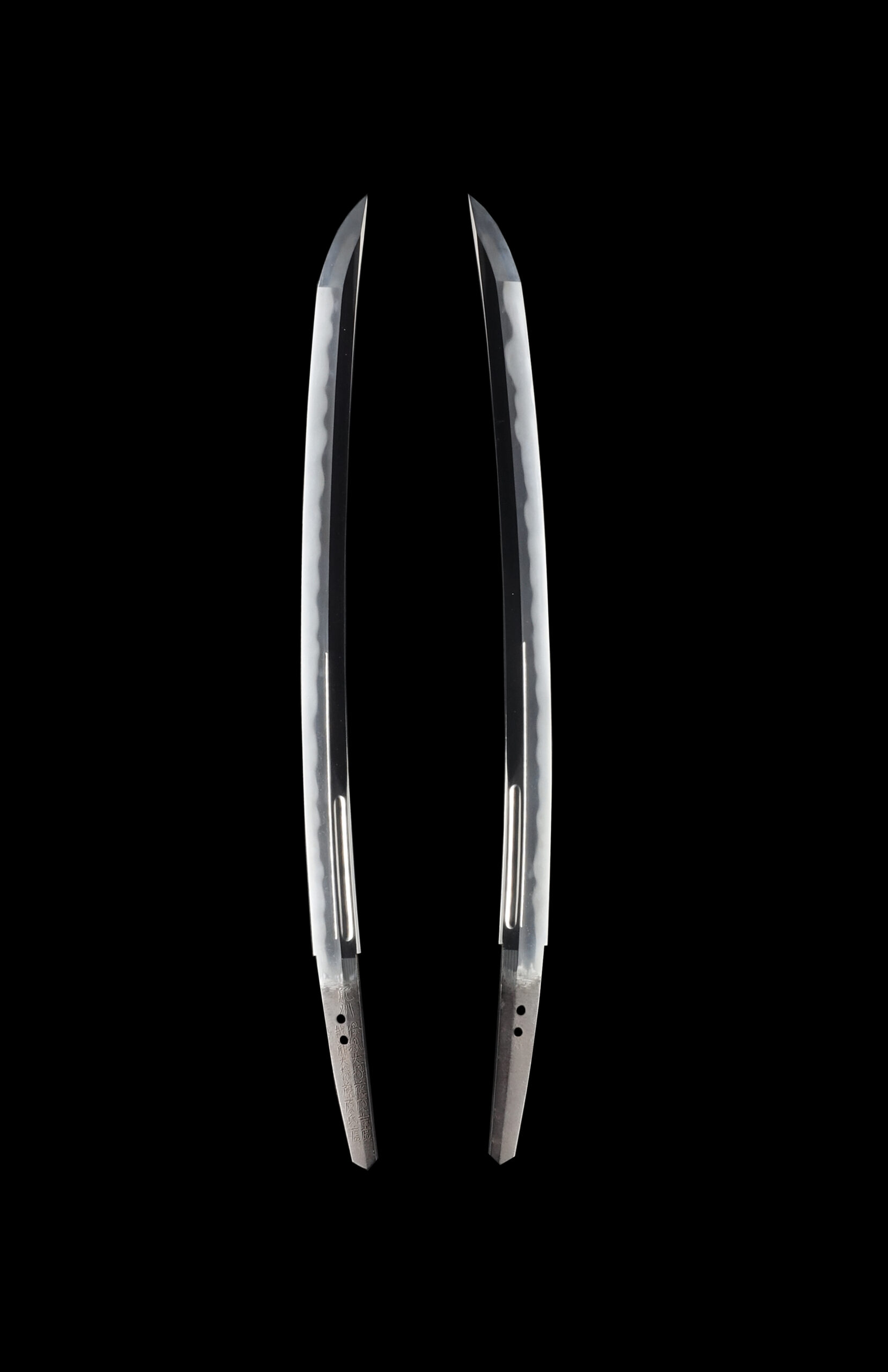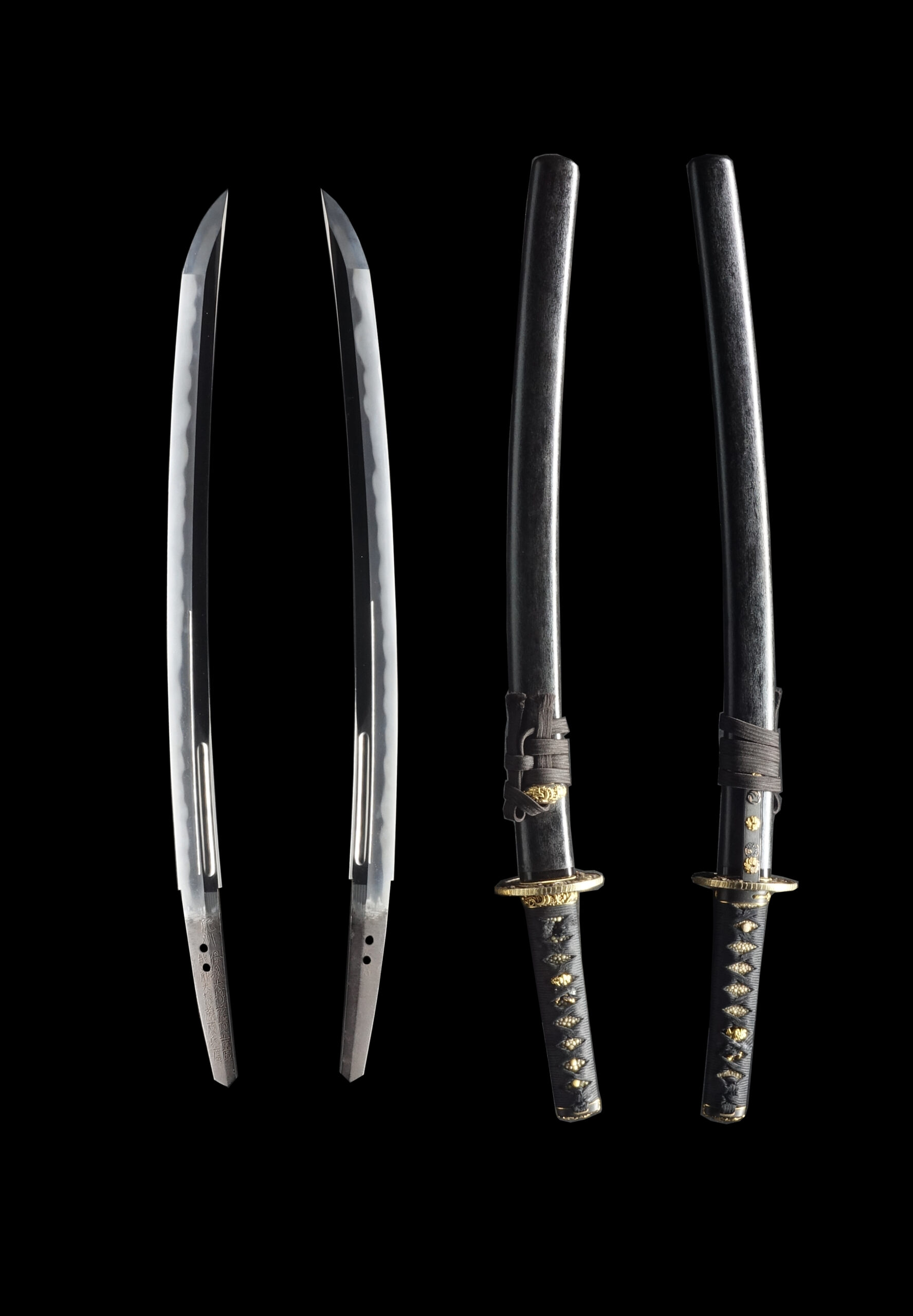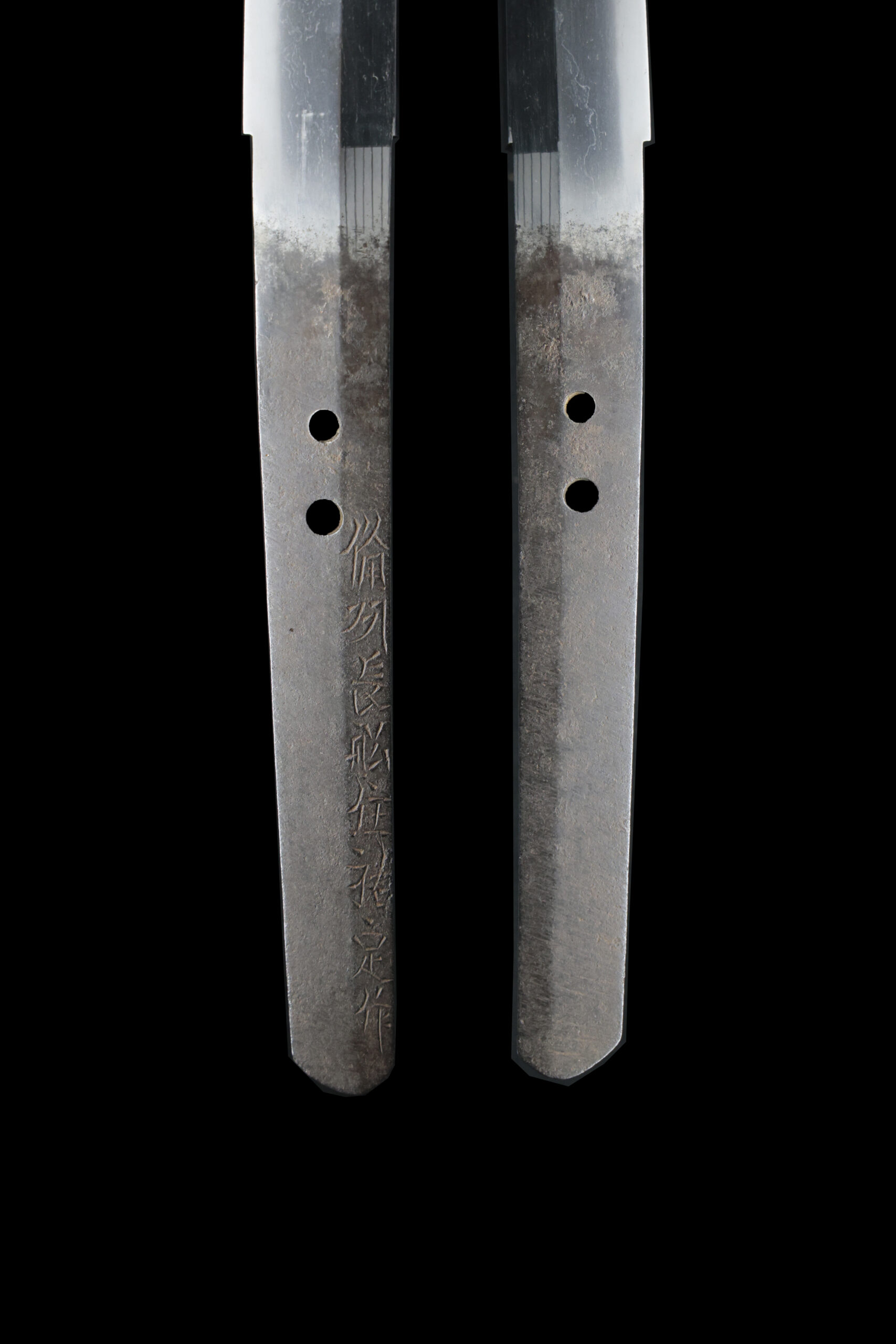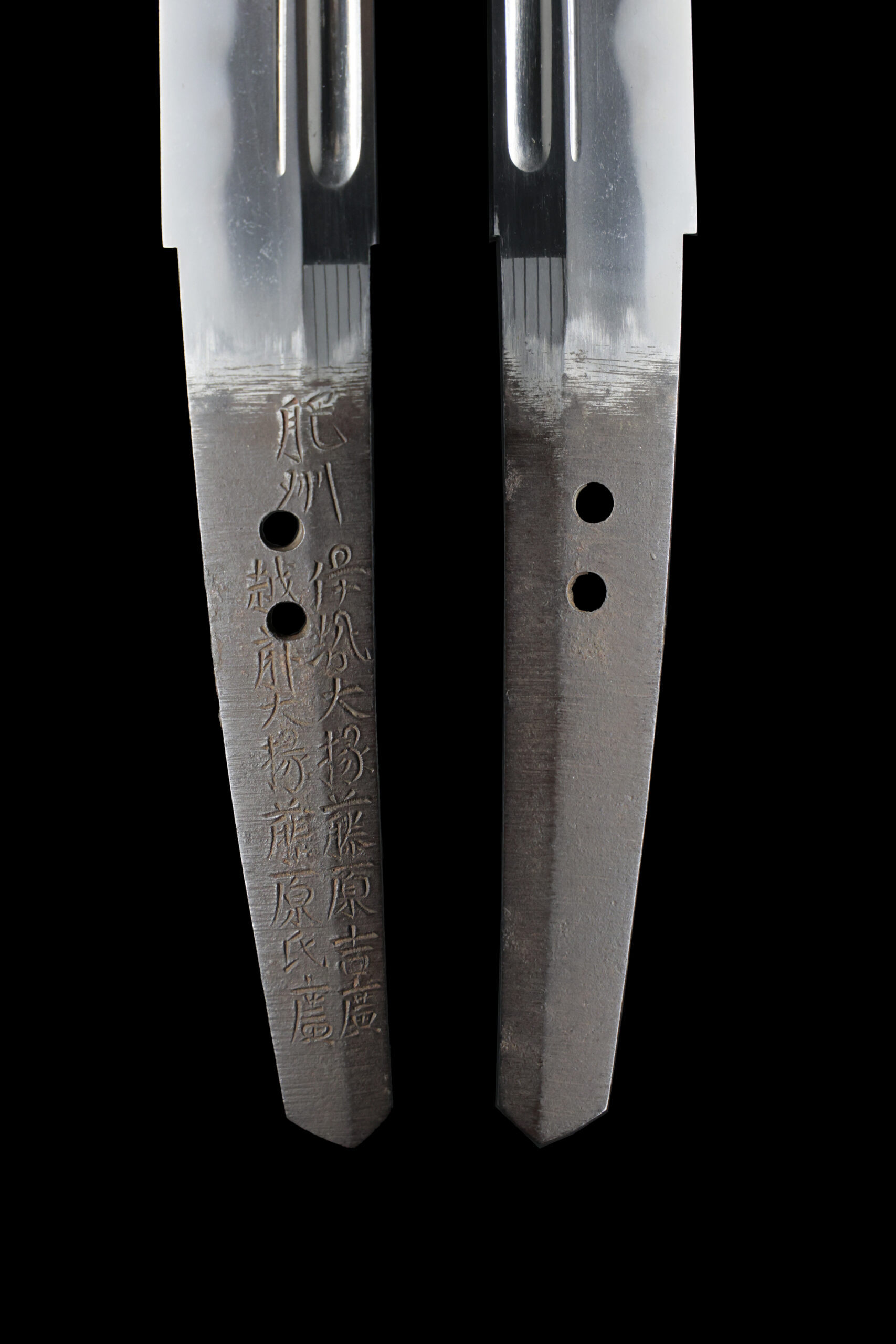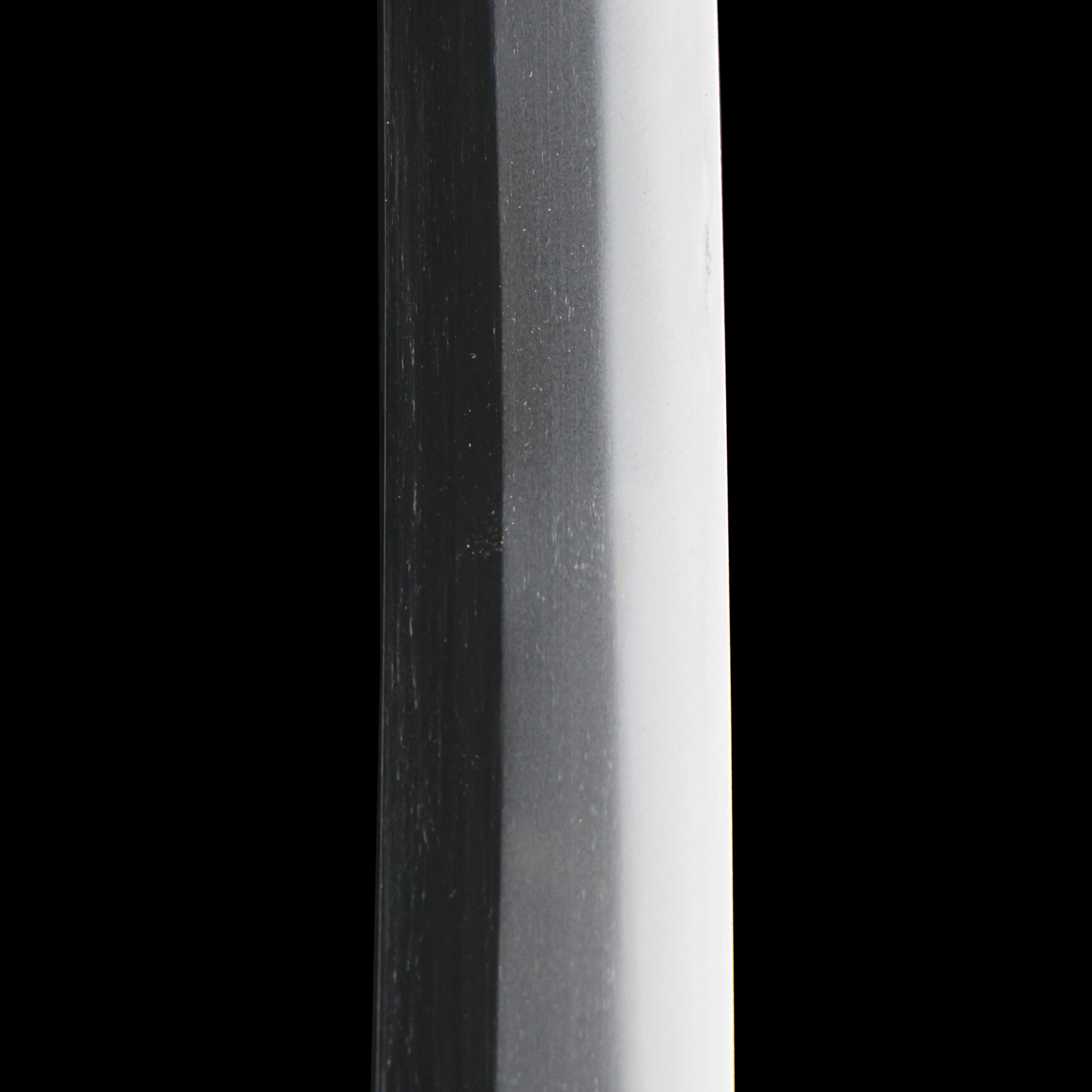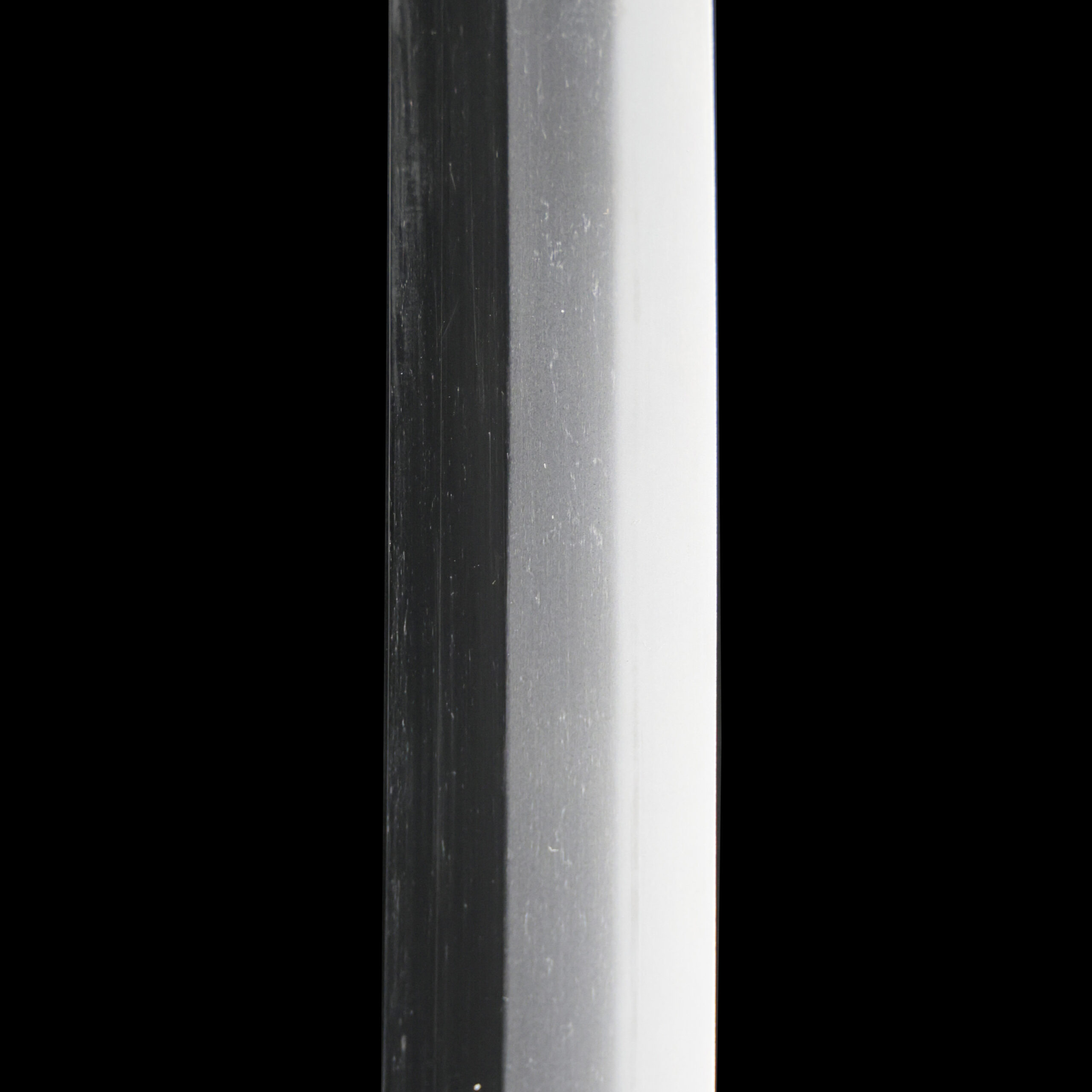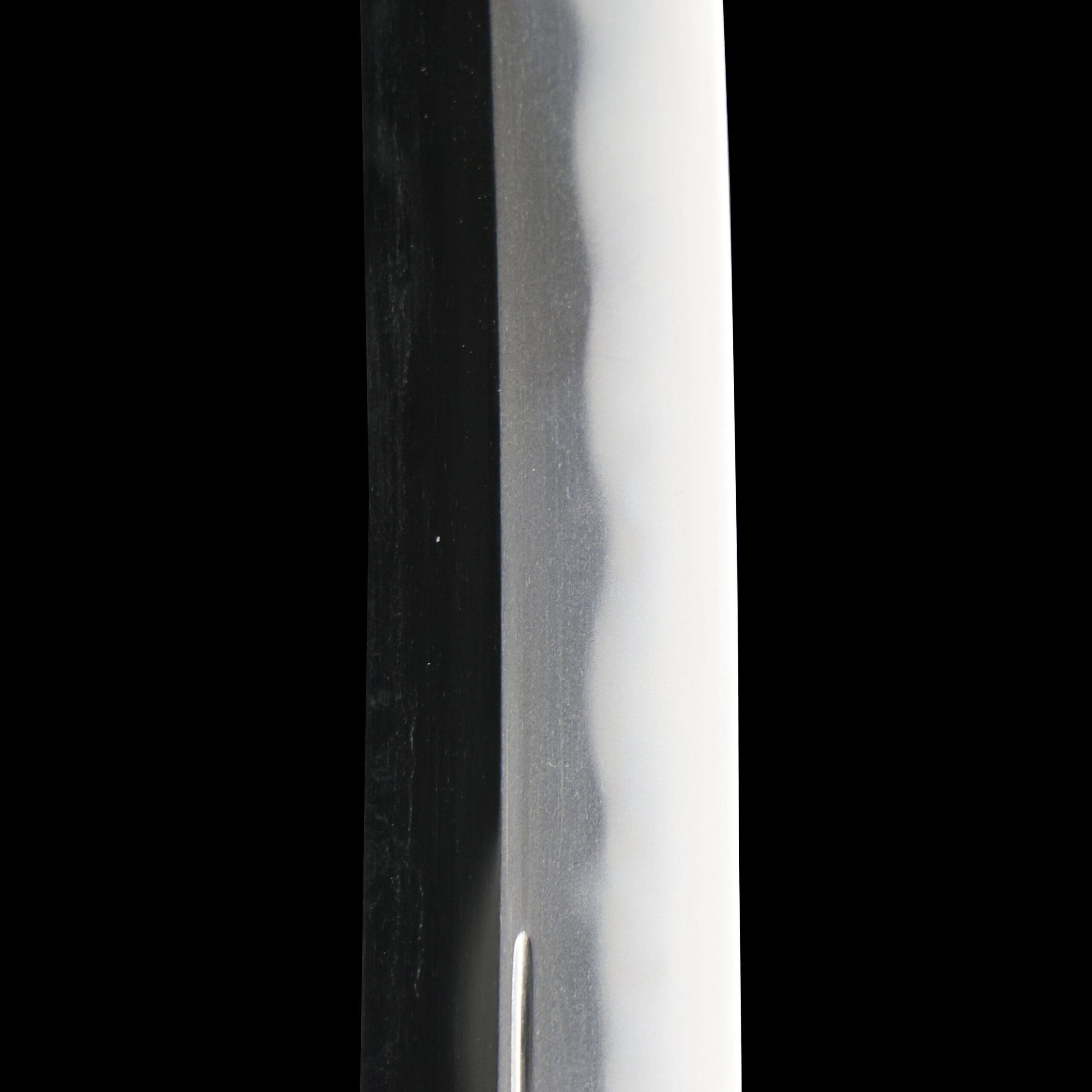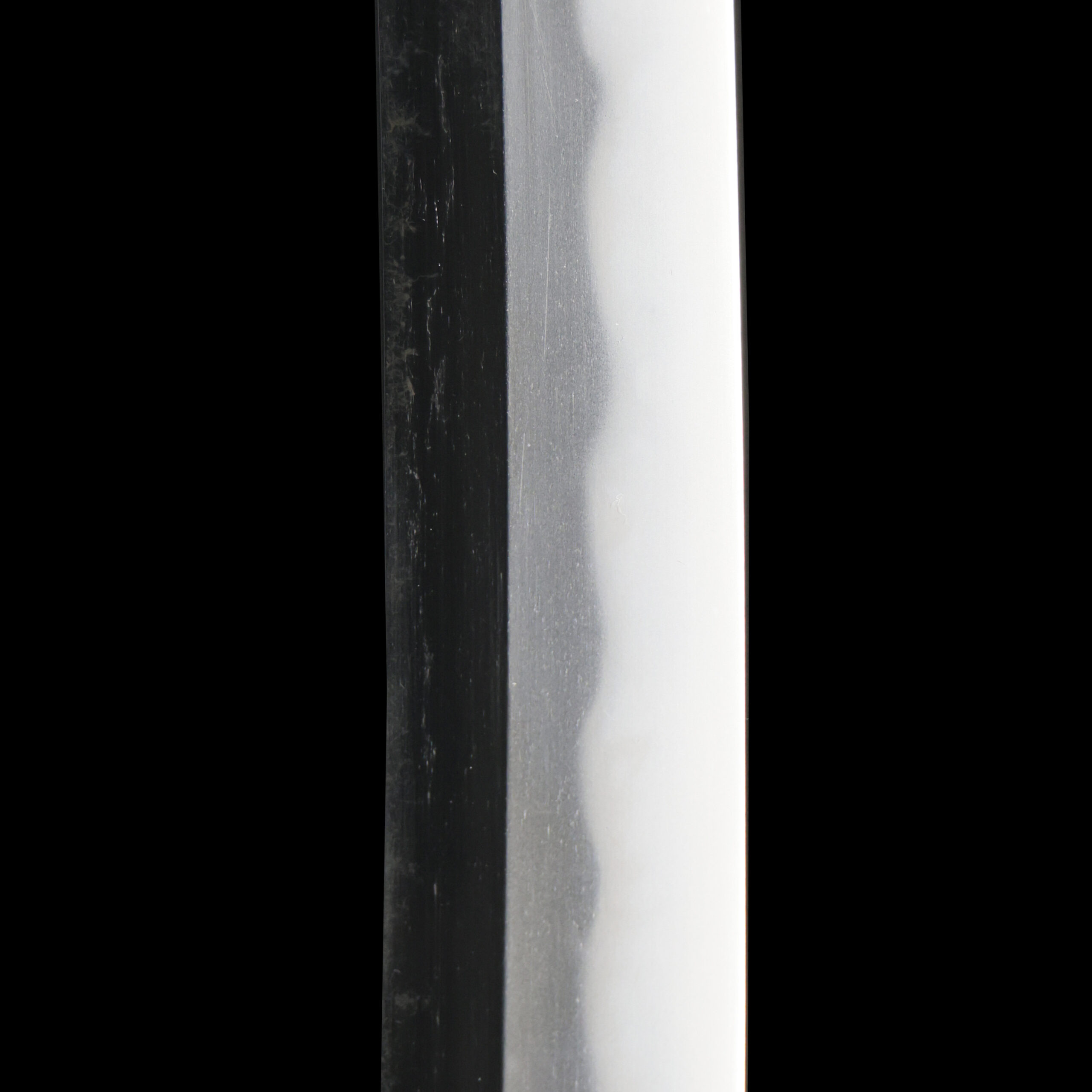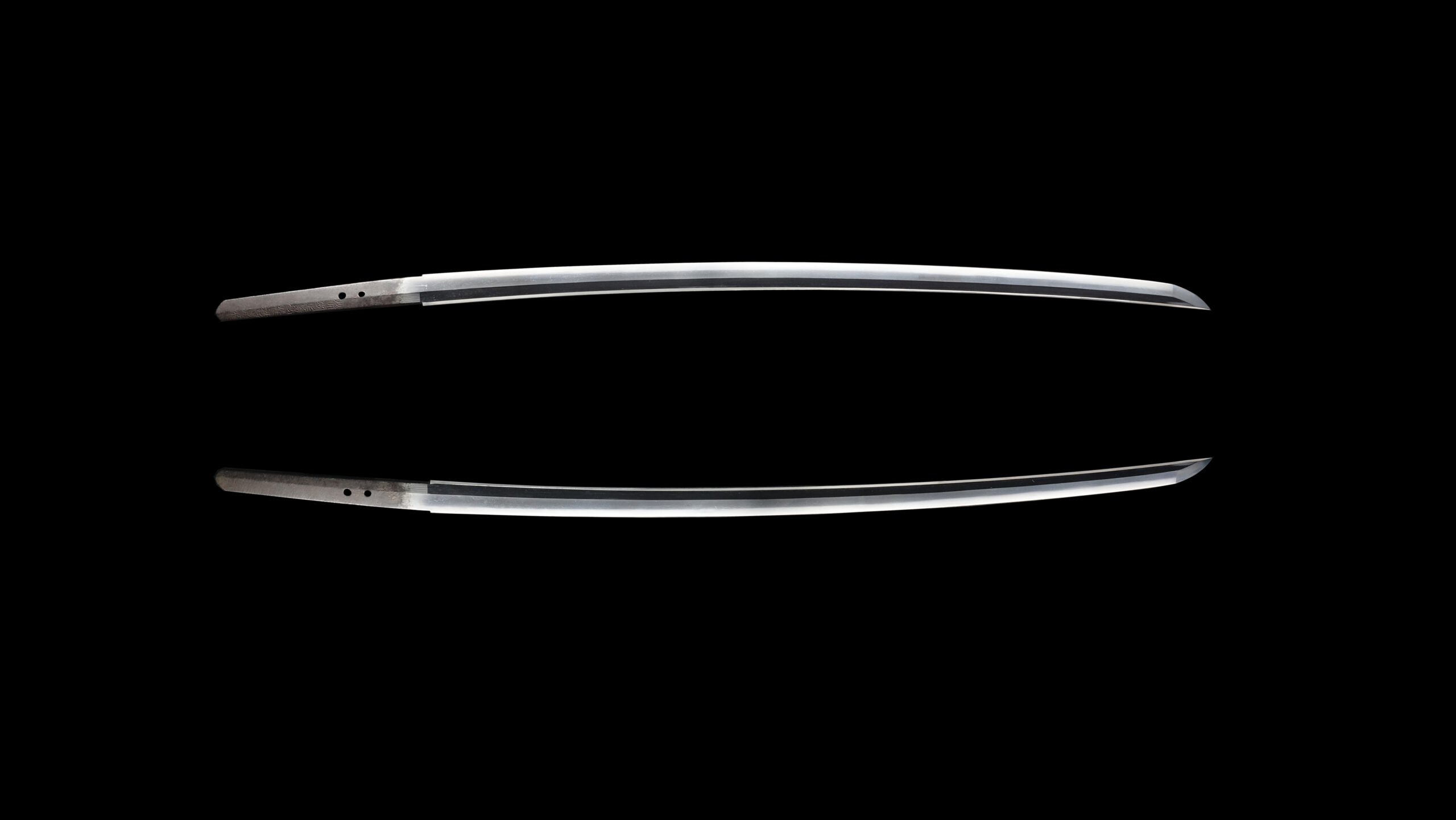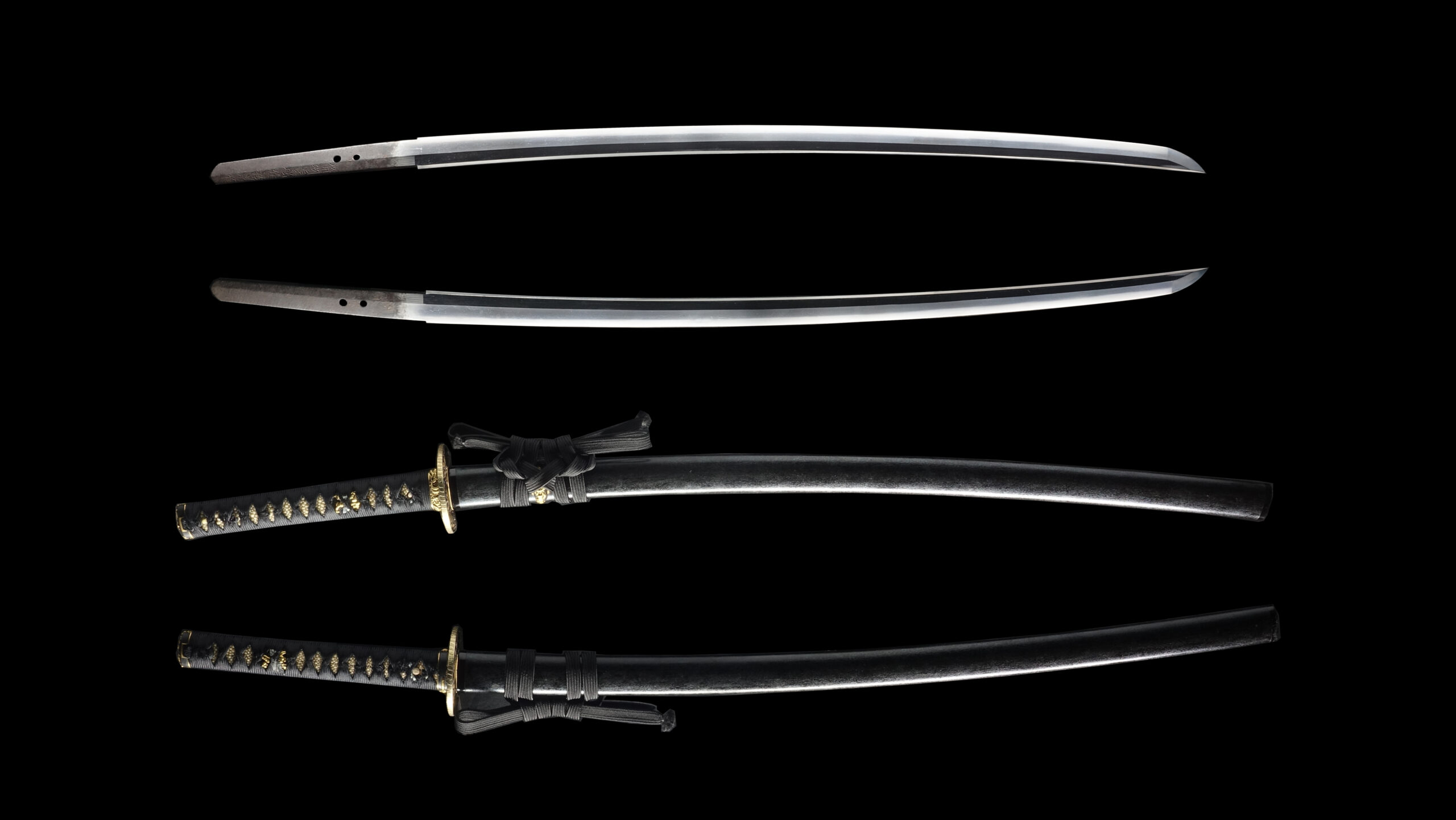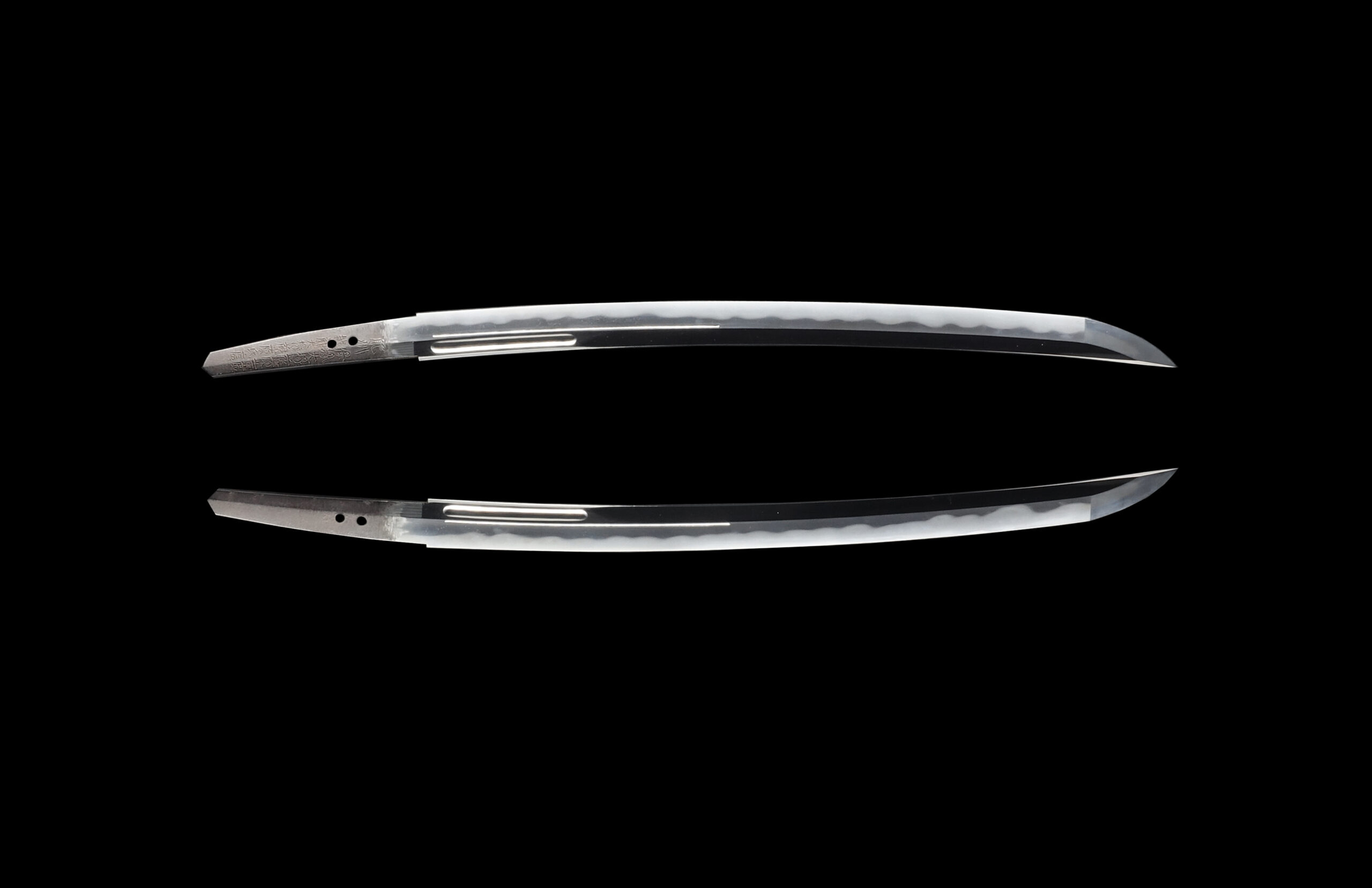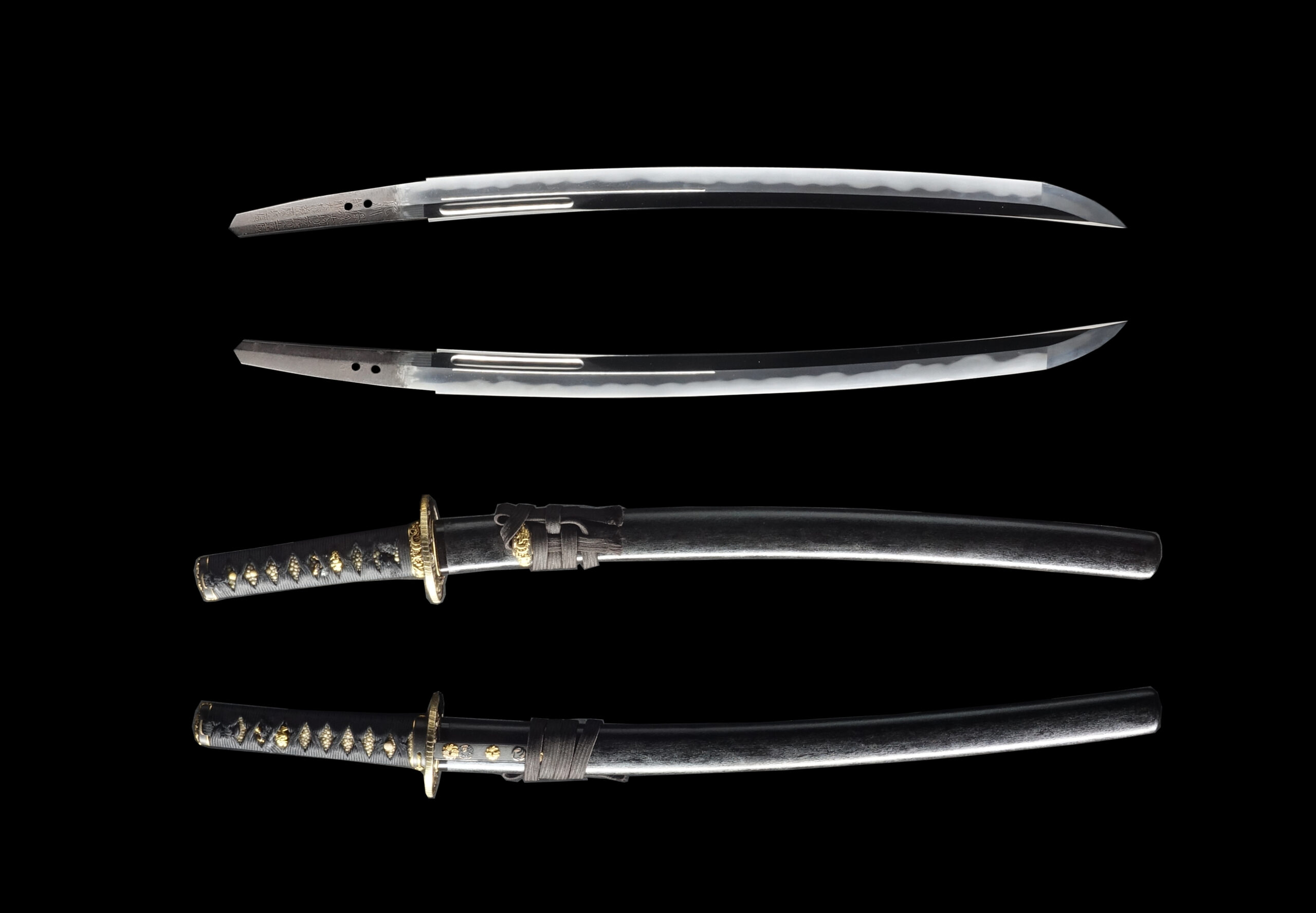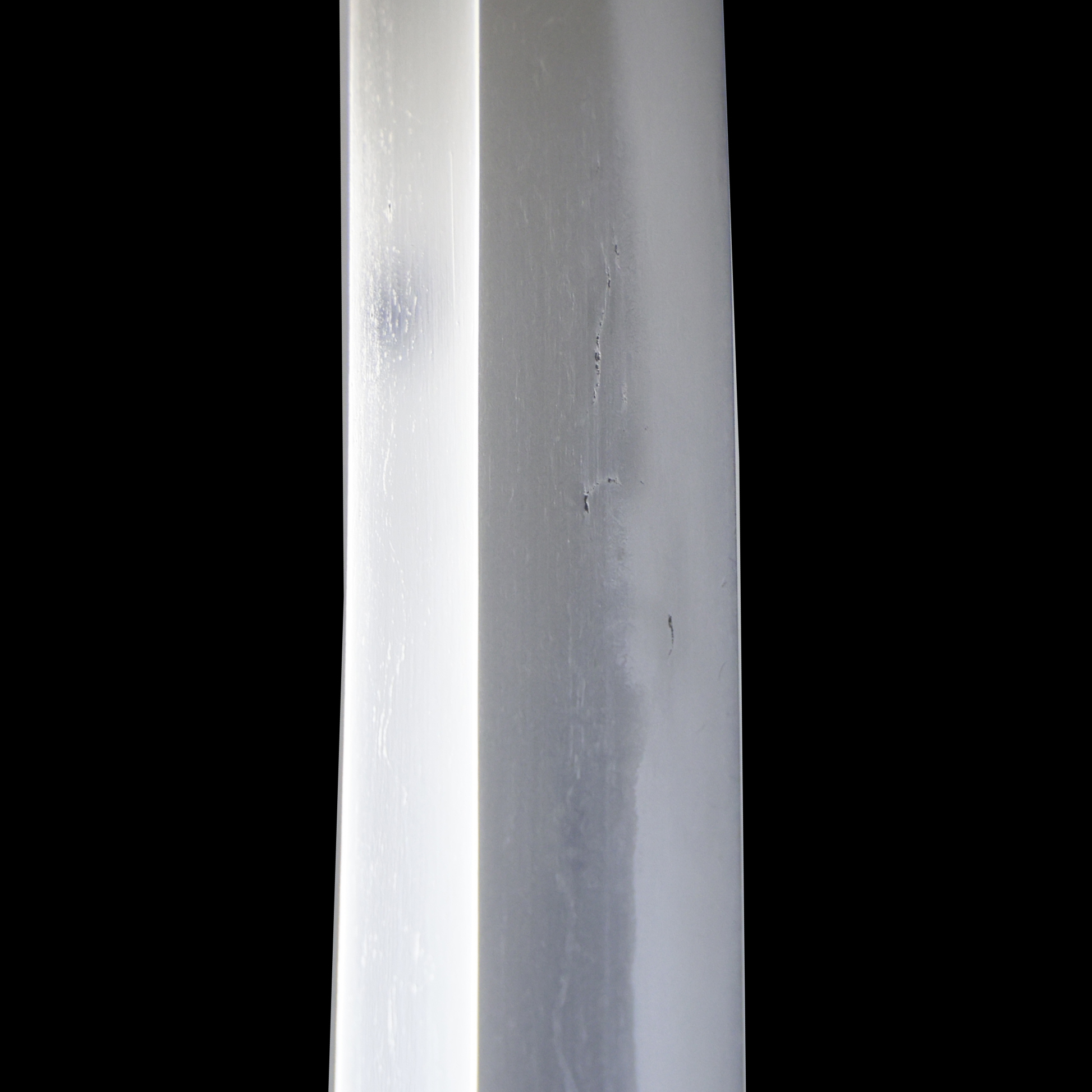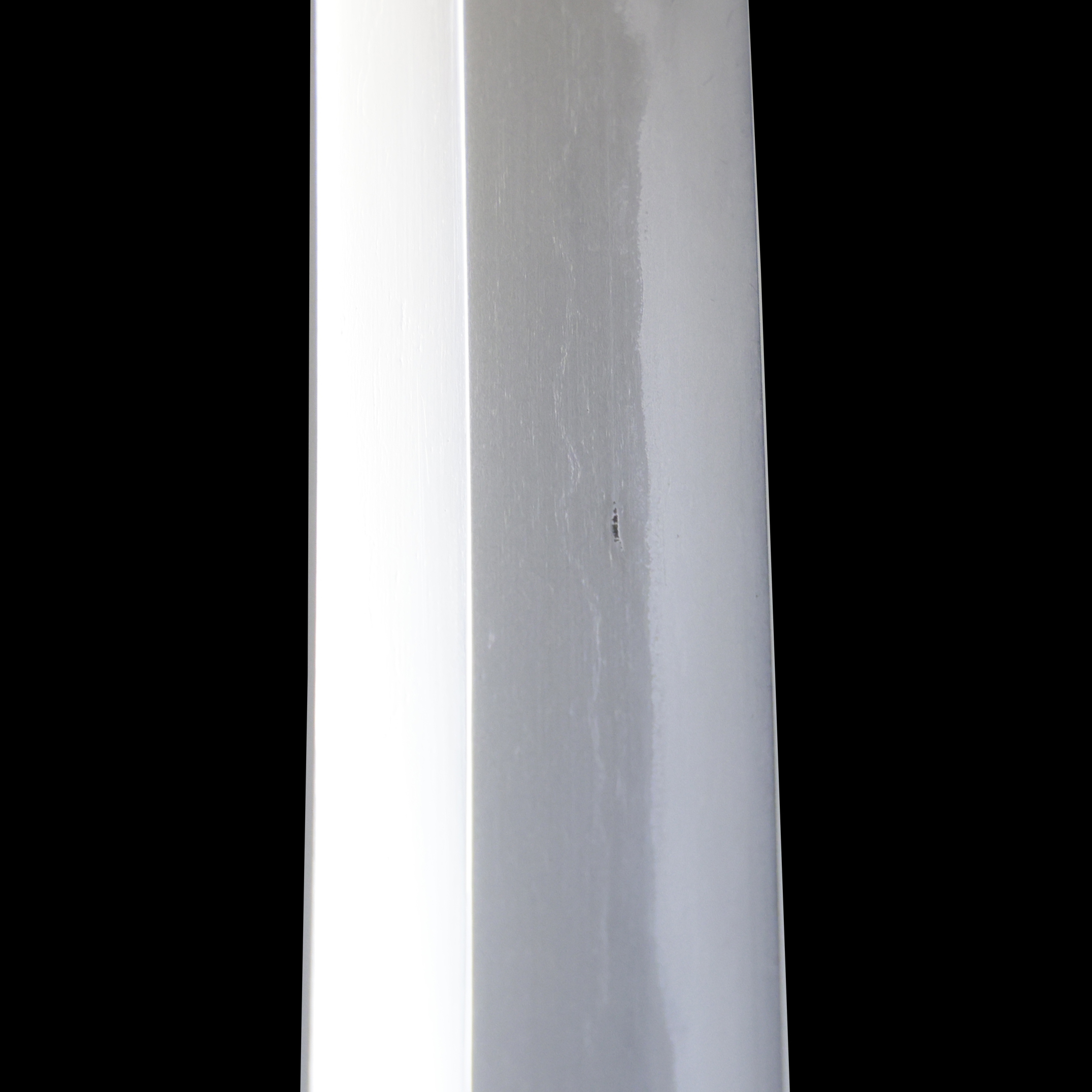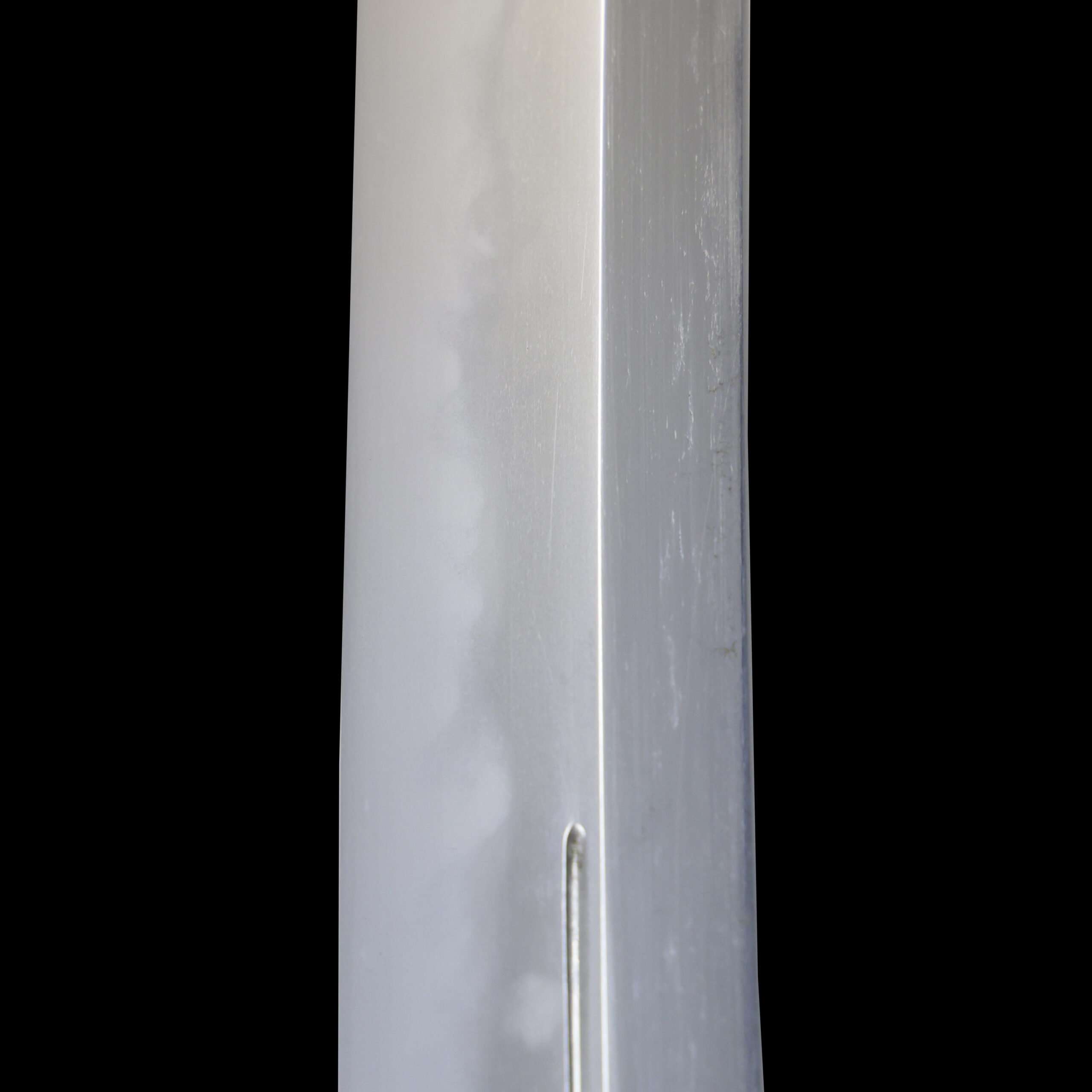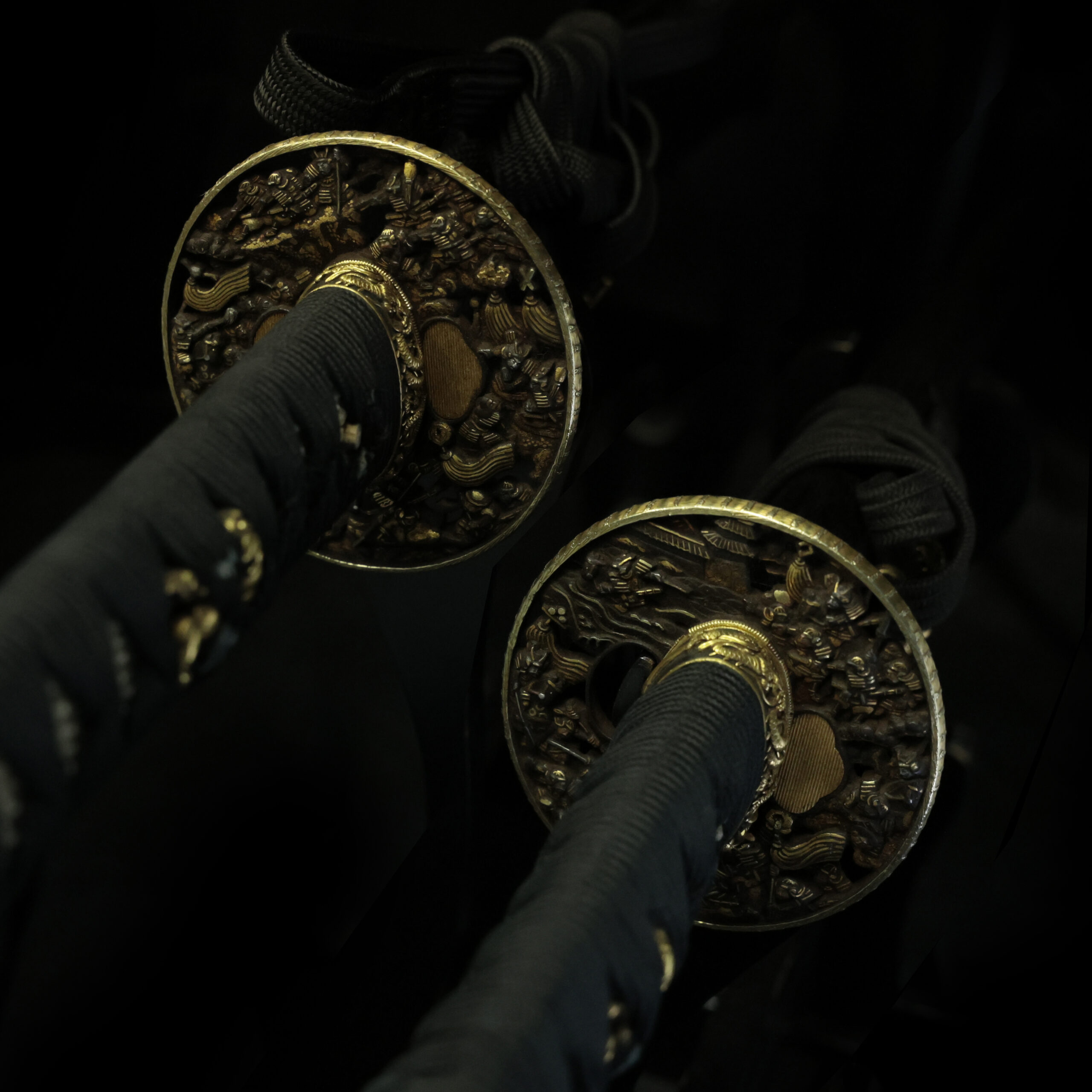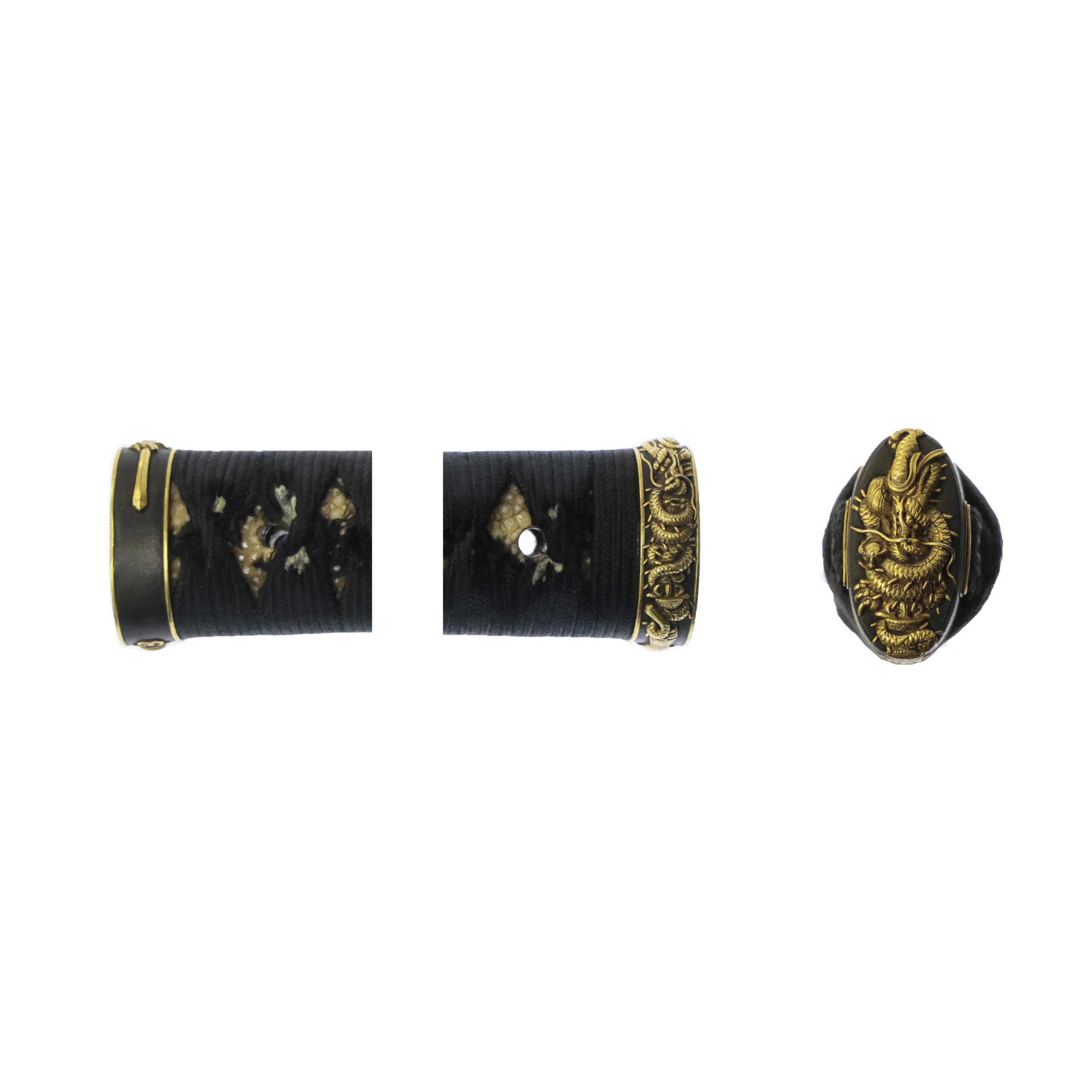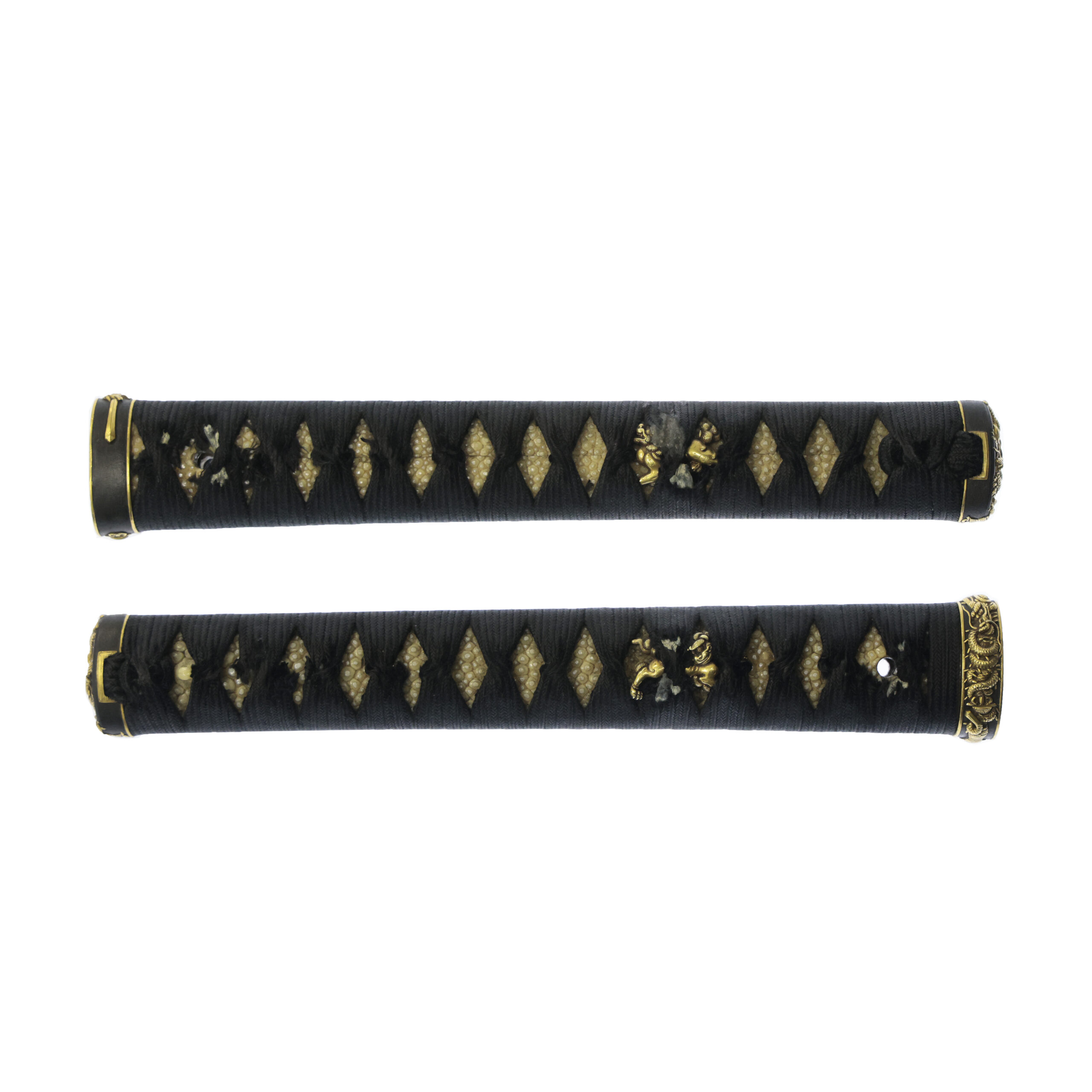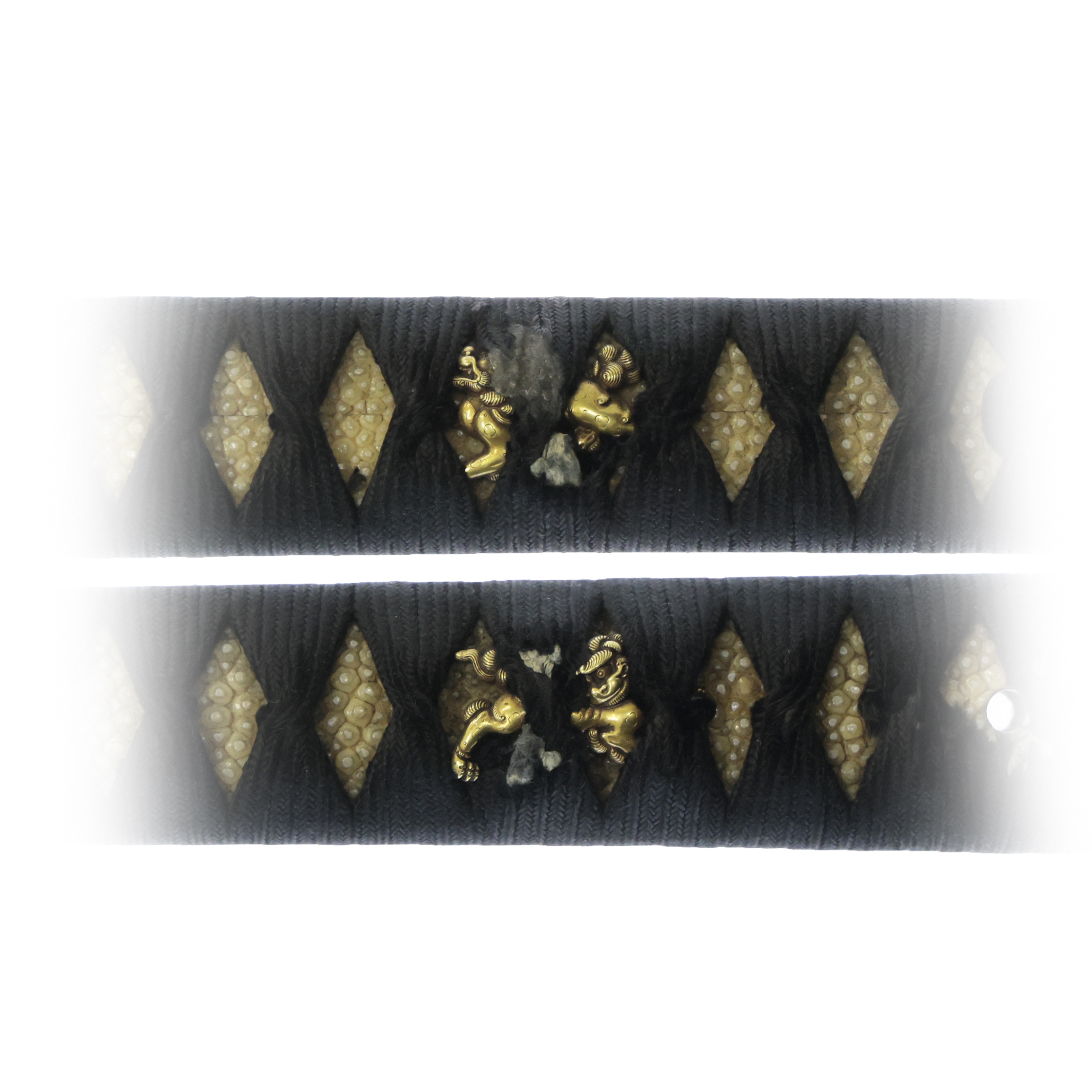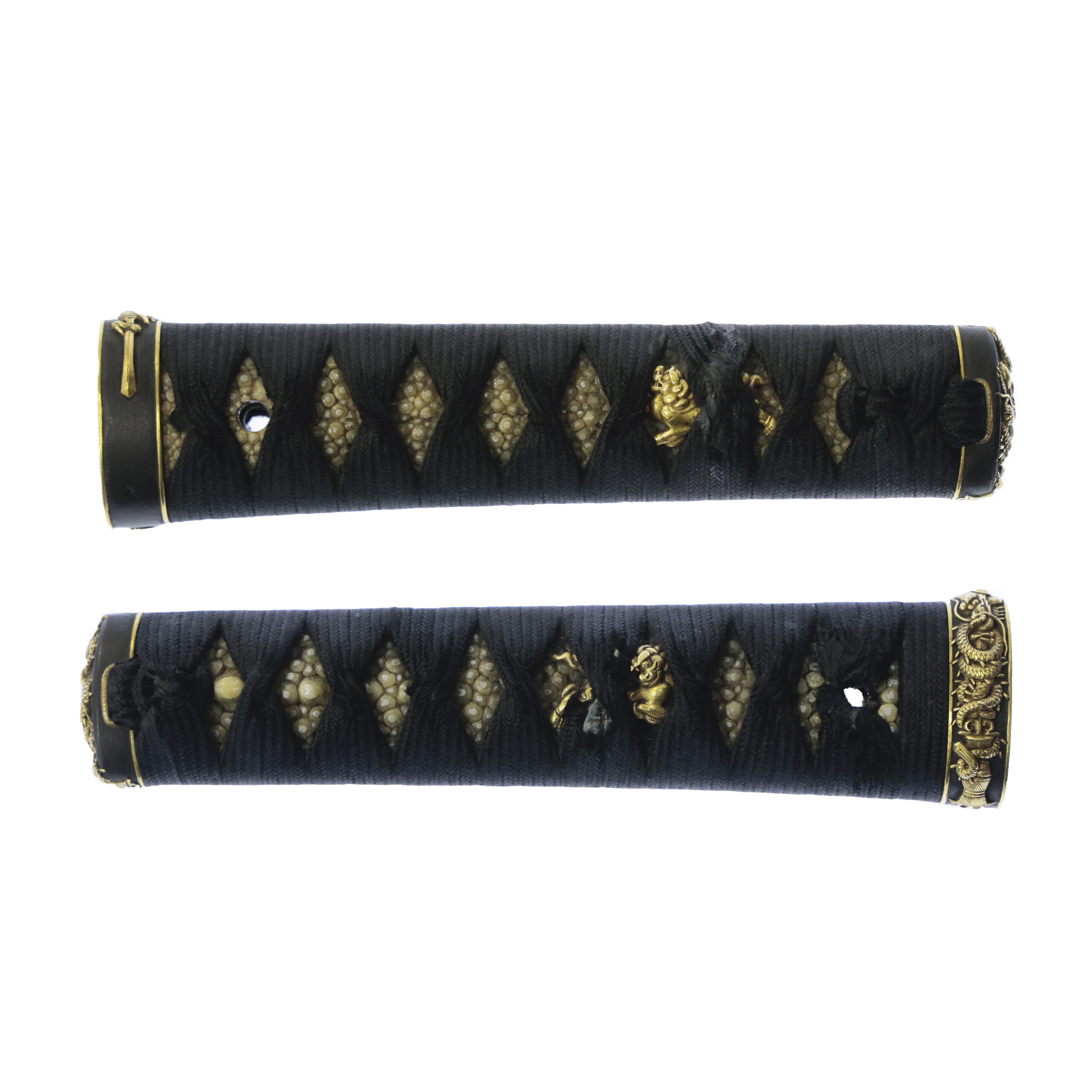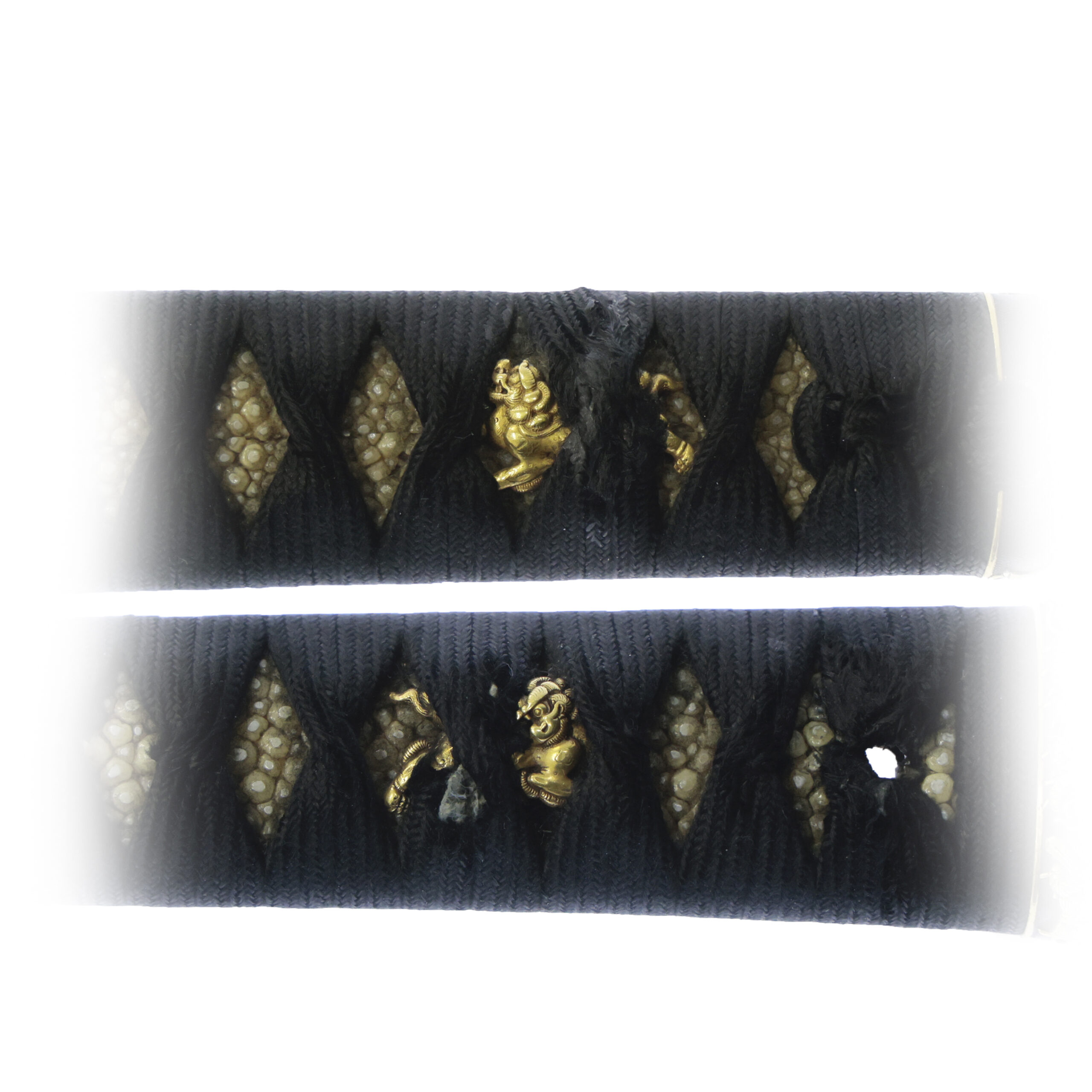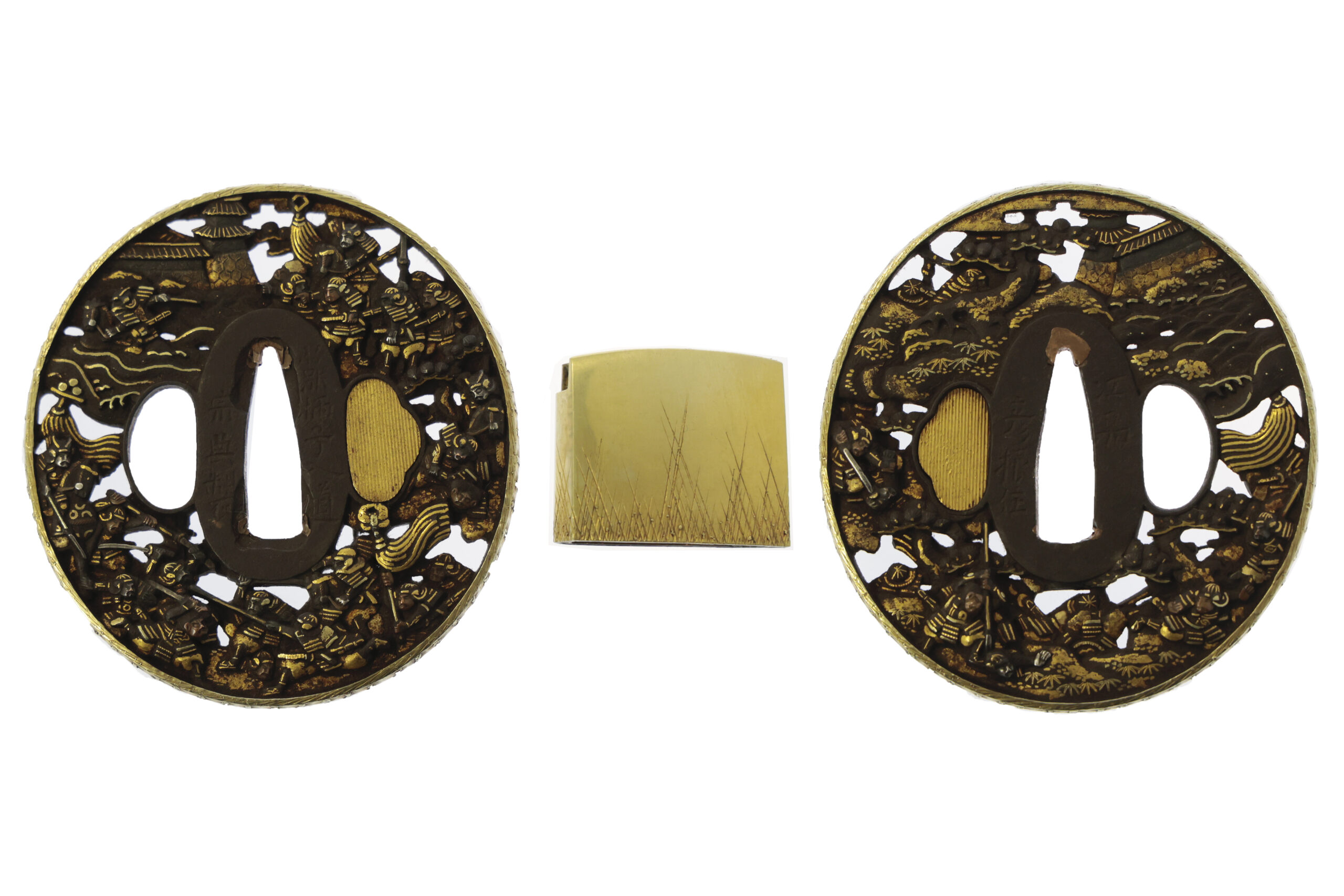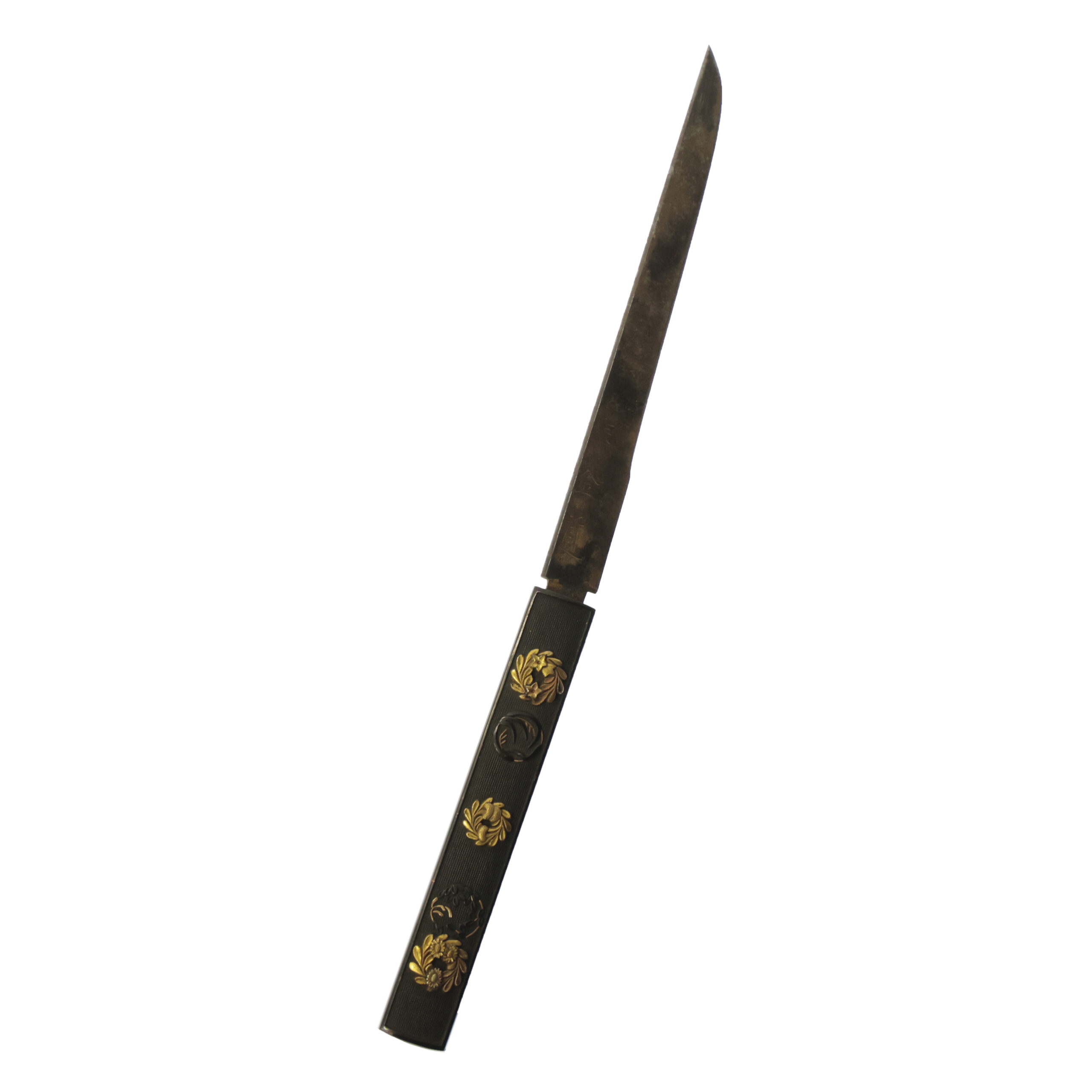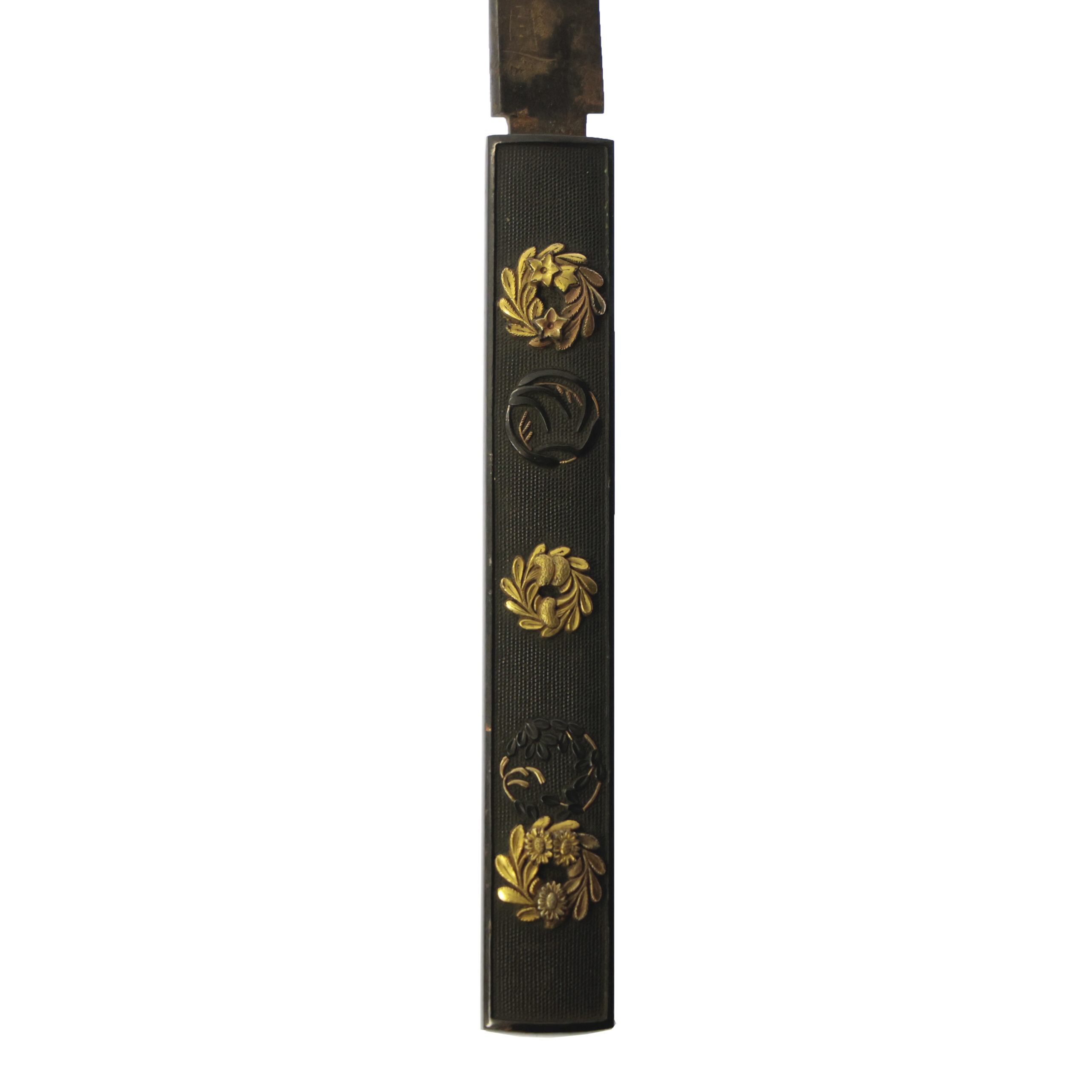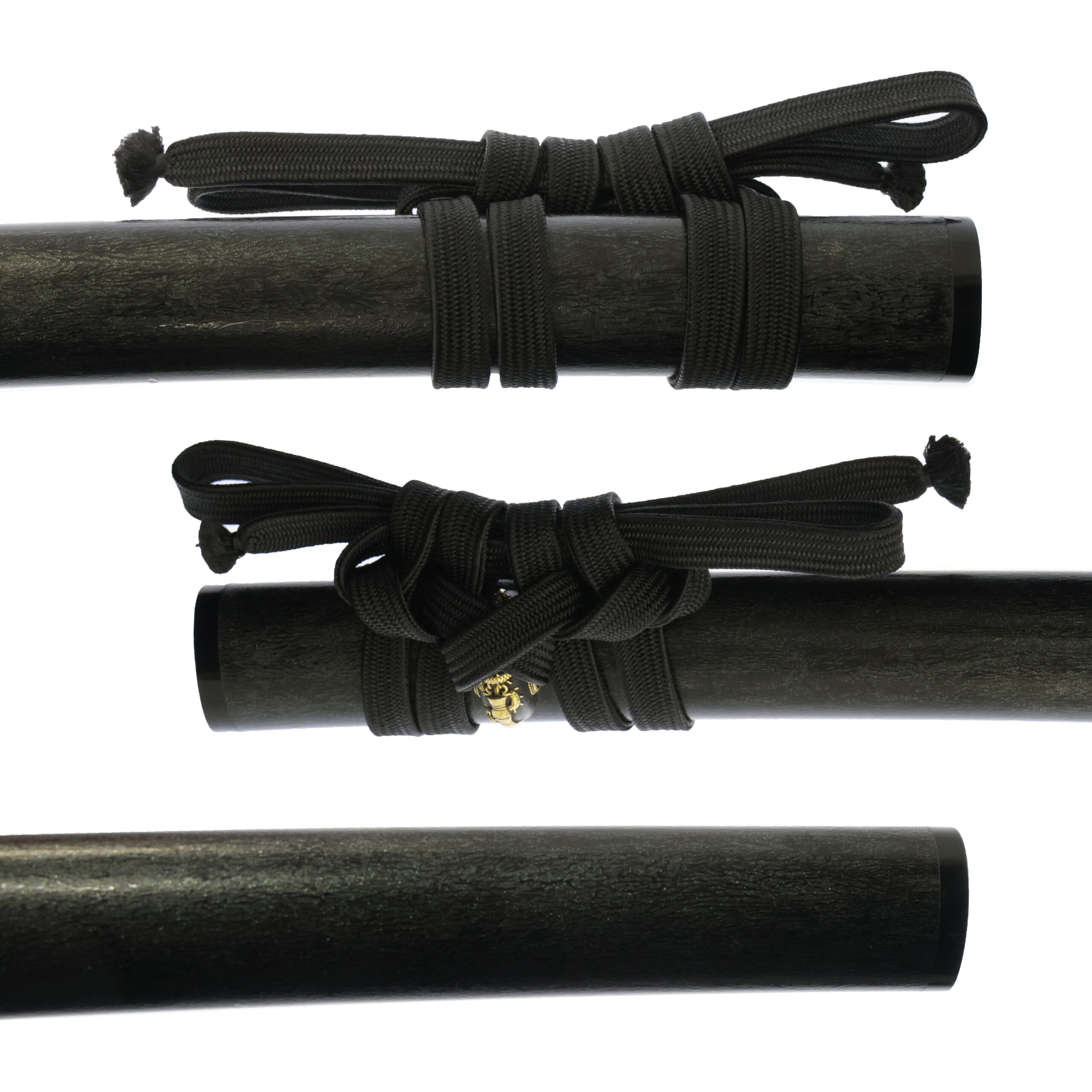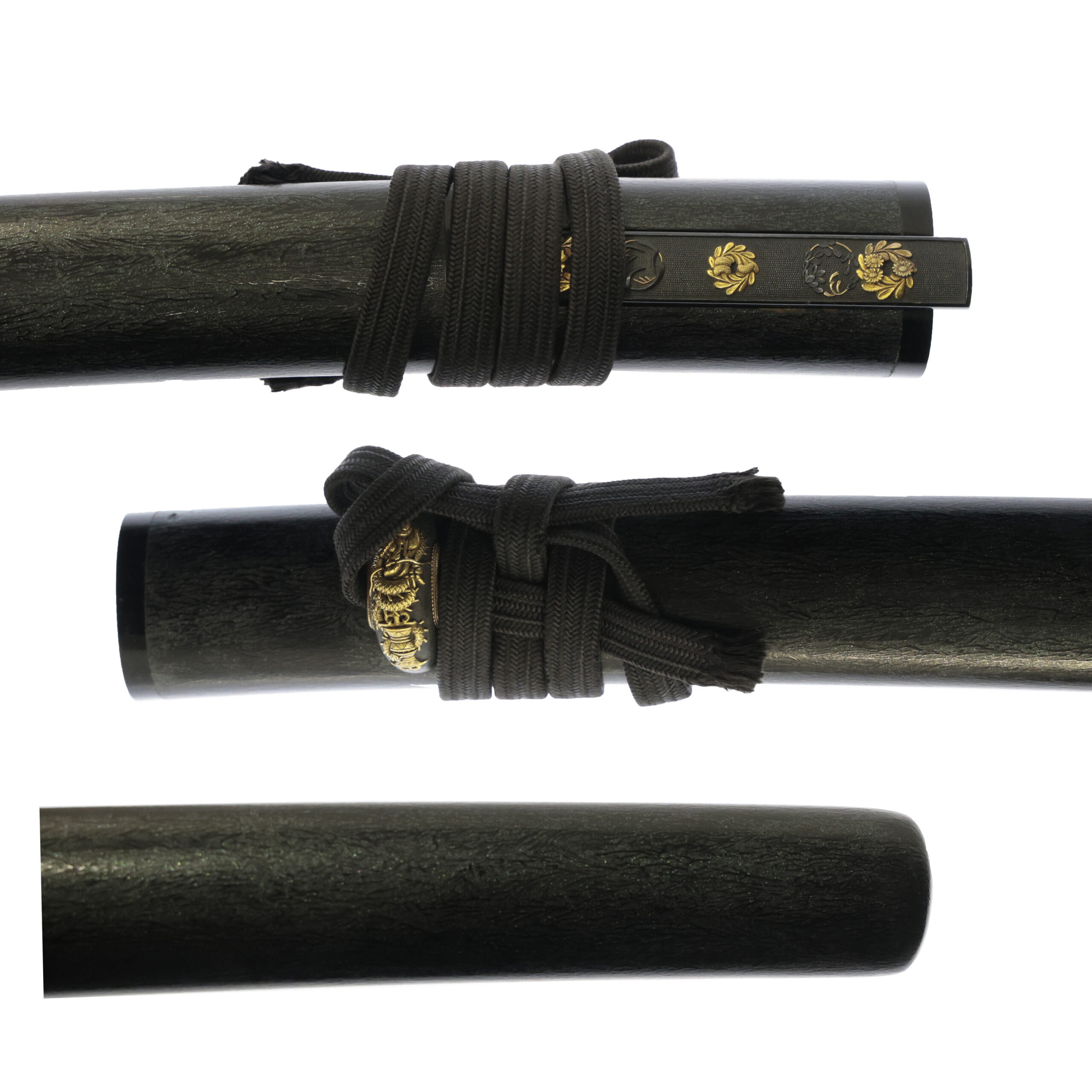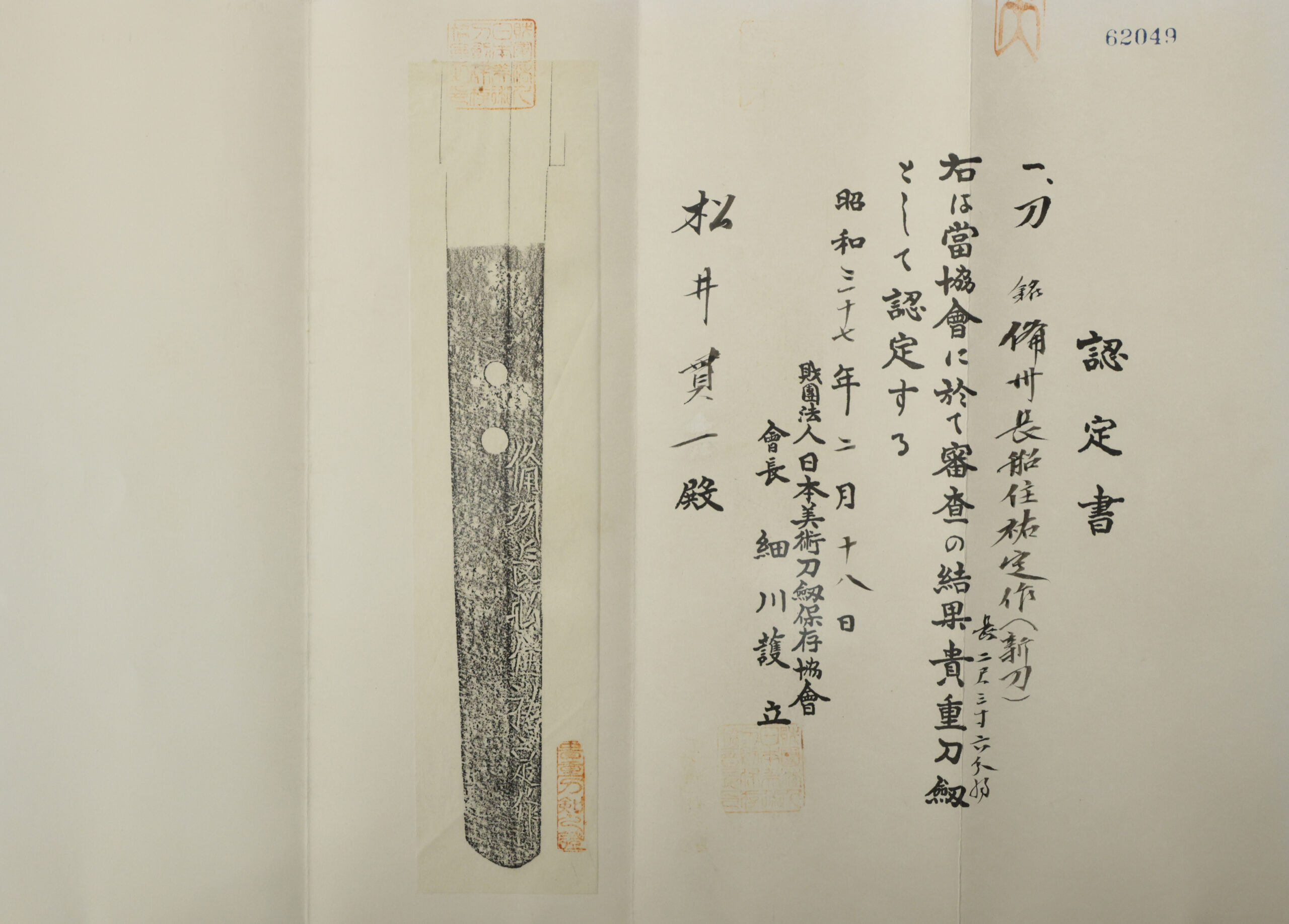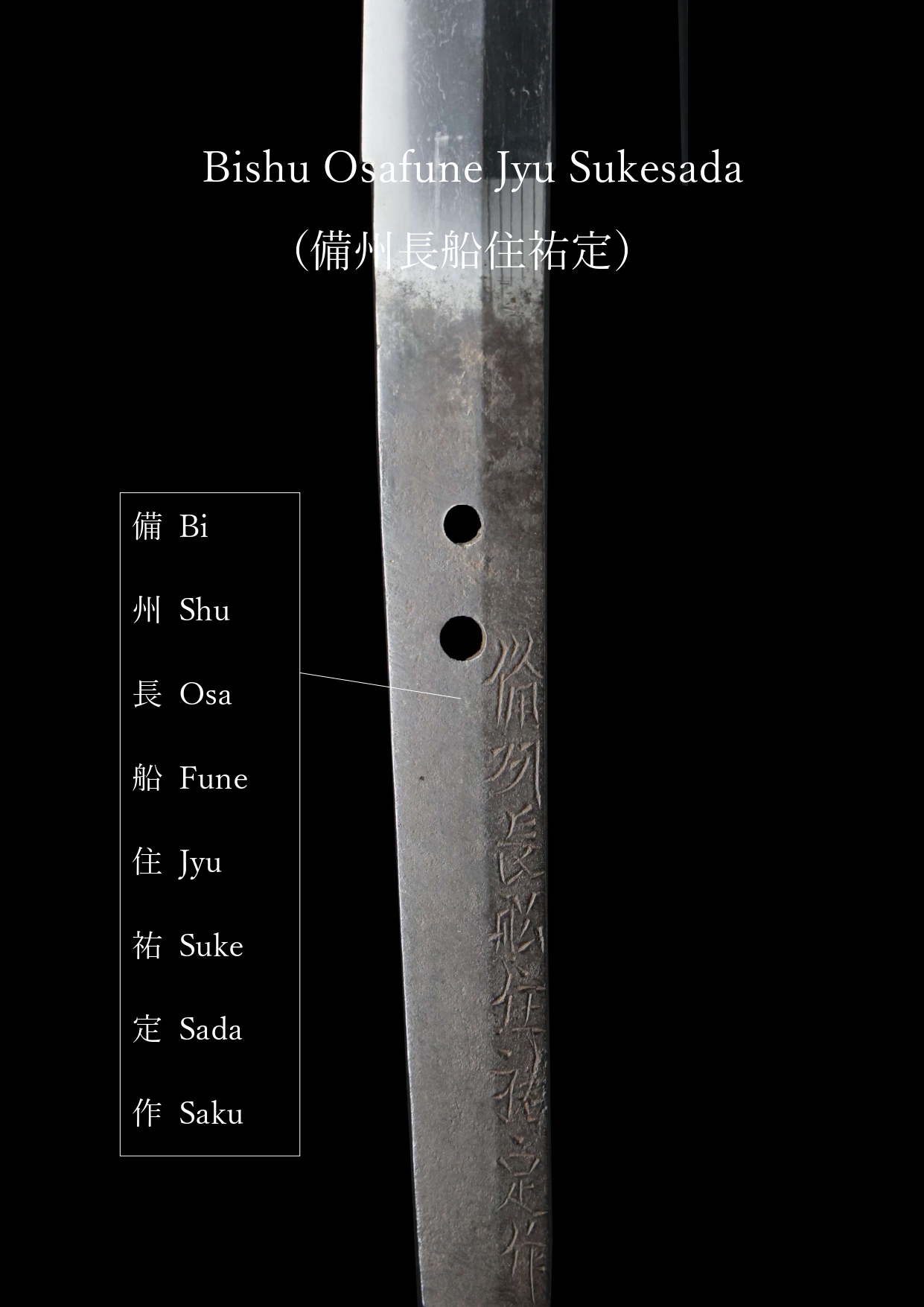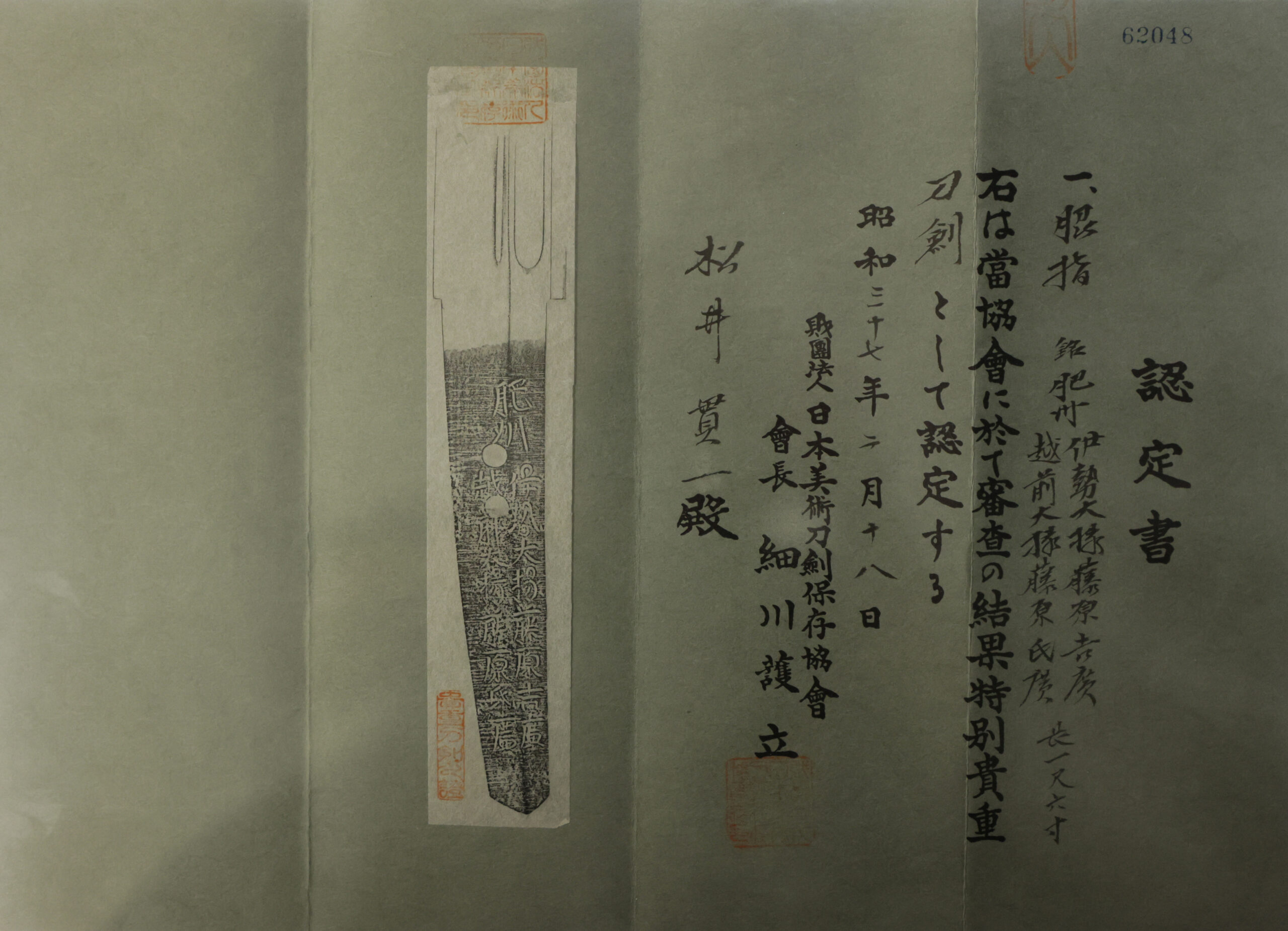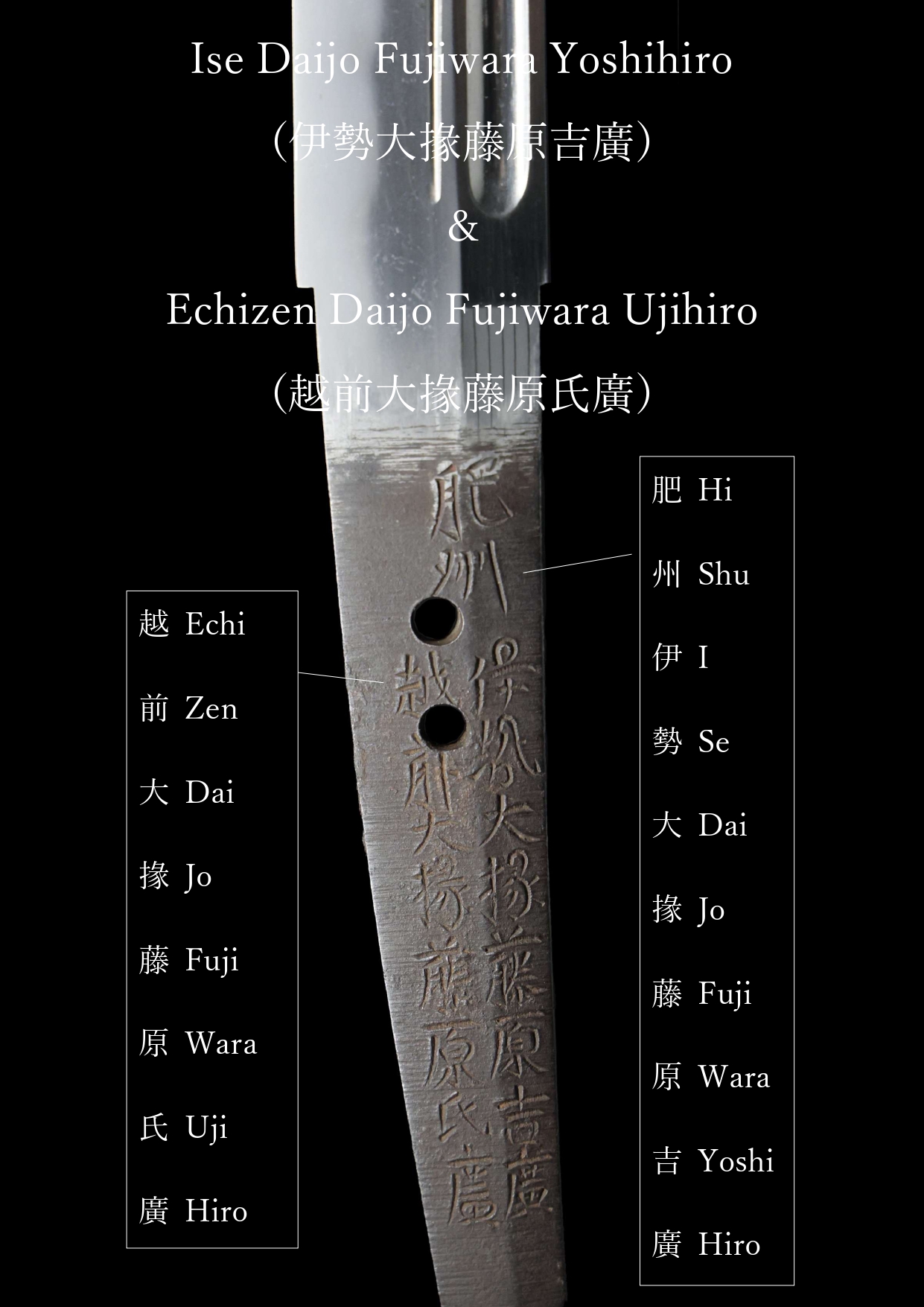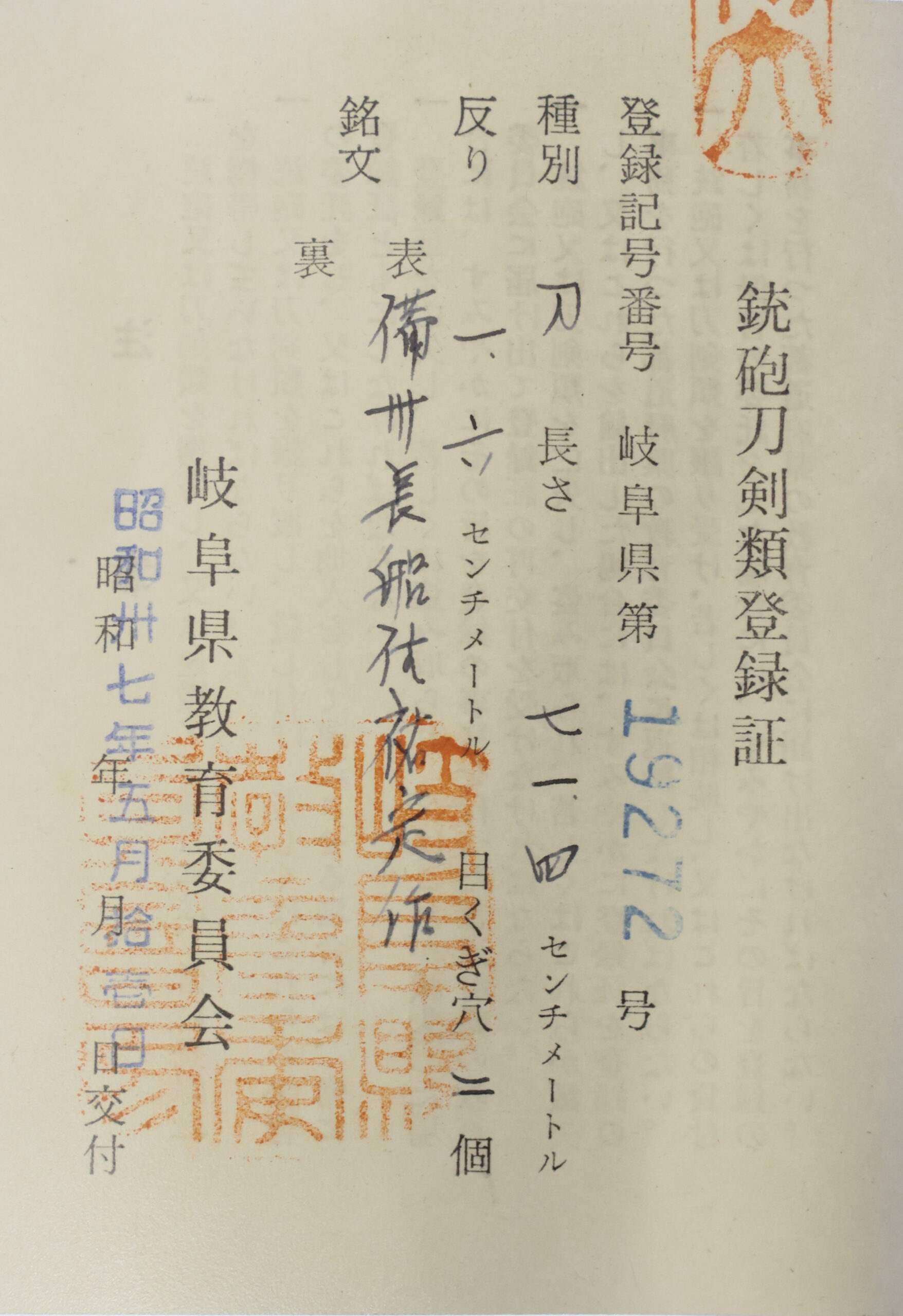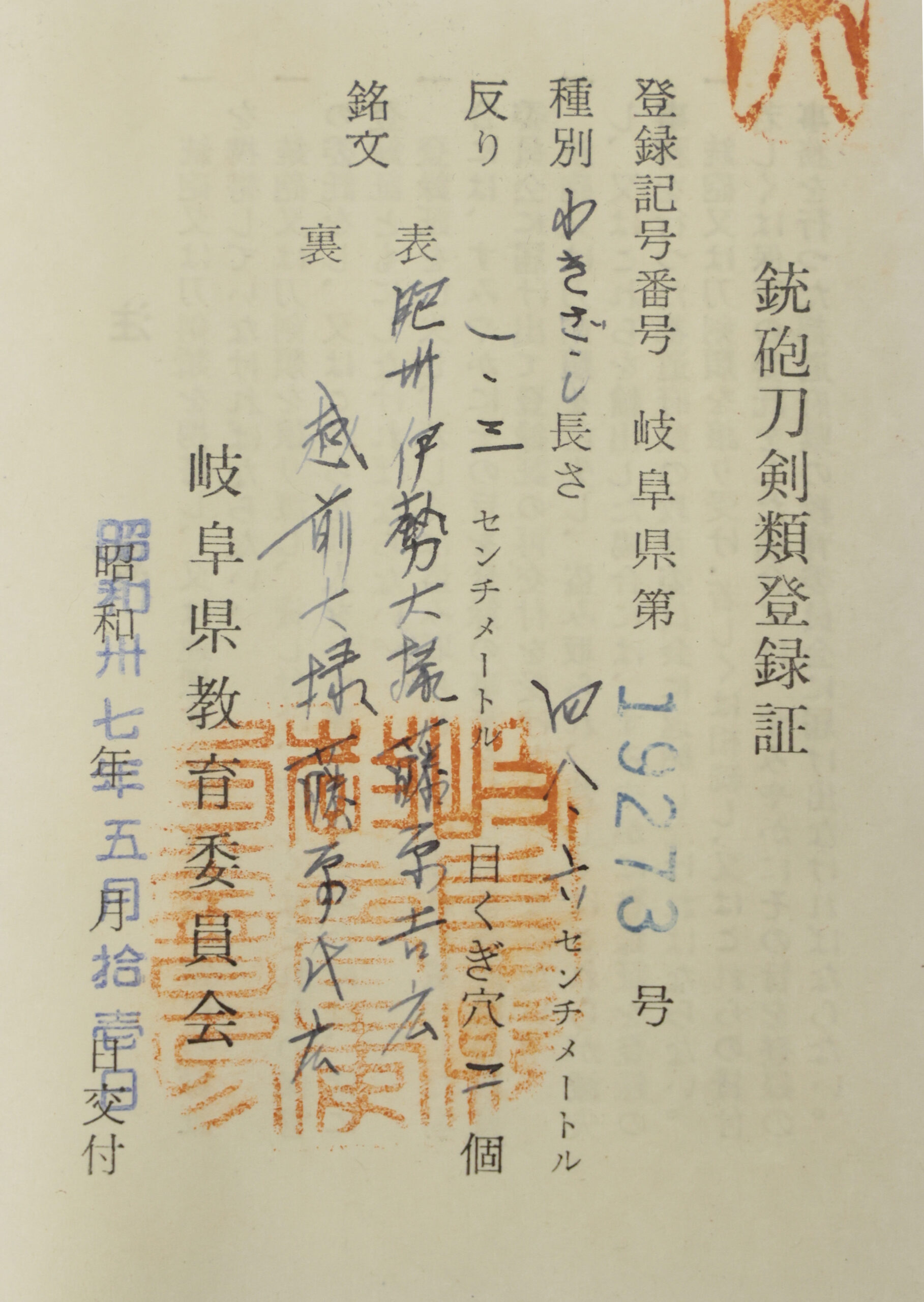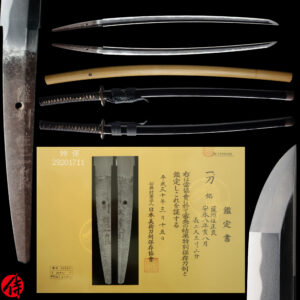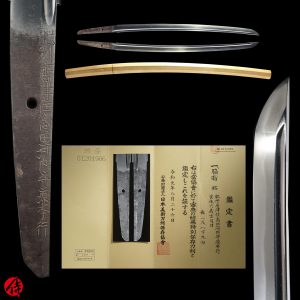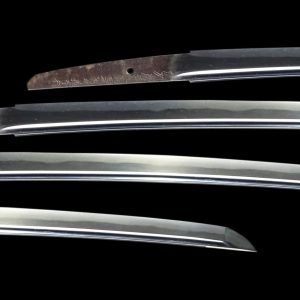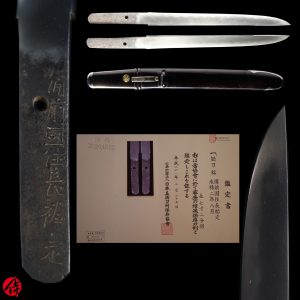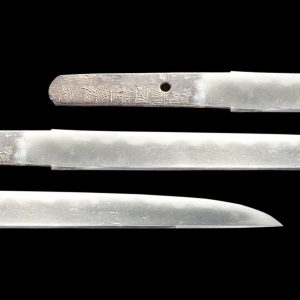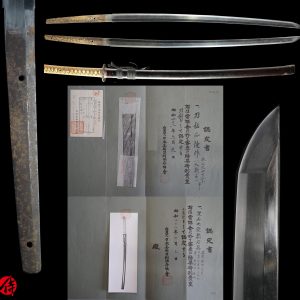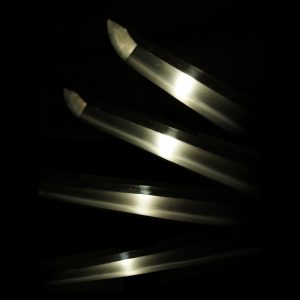Antique Japanese Sword Daisho Signed by Sukesada / Signed by Yoshihiro and Ujihiro with NBTHK Kicho Certificate and Tokubetsu Kicho Certificate
【Description】
–Katana
【Description】
This Katana is signed by Bishu Osafune Sukesada (備州長船祐定) during the early-mid Edo period (early 17th-early 18th century). Bishu, also known as Bizen, is the name of the province located in Today’s Okayama prefecture. Osafune is one of the most prosperous schools in this province during the Muromachi period. Sukesada is his maker’s name.
During the Muromachi period, Bizen swordsmiths produced a large number of blades due to the constant warfare of the Sengoku (Warring States) period. However, in 1591 (Tenshō 19), a catastrophic flood of the Yoshii River devastated the Osafune area, causing widespread destruction to swordsmith communities and facilities. As a result, Bizen’s sword-forging tradition temporarily declined.
Despite this setback, a few surviving swordsmiths preserved and continued the craft. Among them, the Sukesada lineage played a central role in its revival. One especially important figure was Yokoyama Tōshirō Sukesada, the fourth head of the Sukesada school. His descendants included Shichibei-no-jō Sukesada, grandfather of Yosōzaemon-no-jō Sukesada. Through their efforts, the tradition of Bizen swordsmithing experienced a remarkable revival during the Edo period.
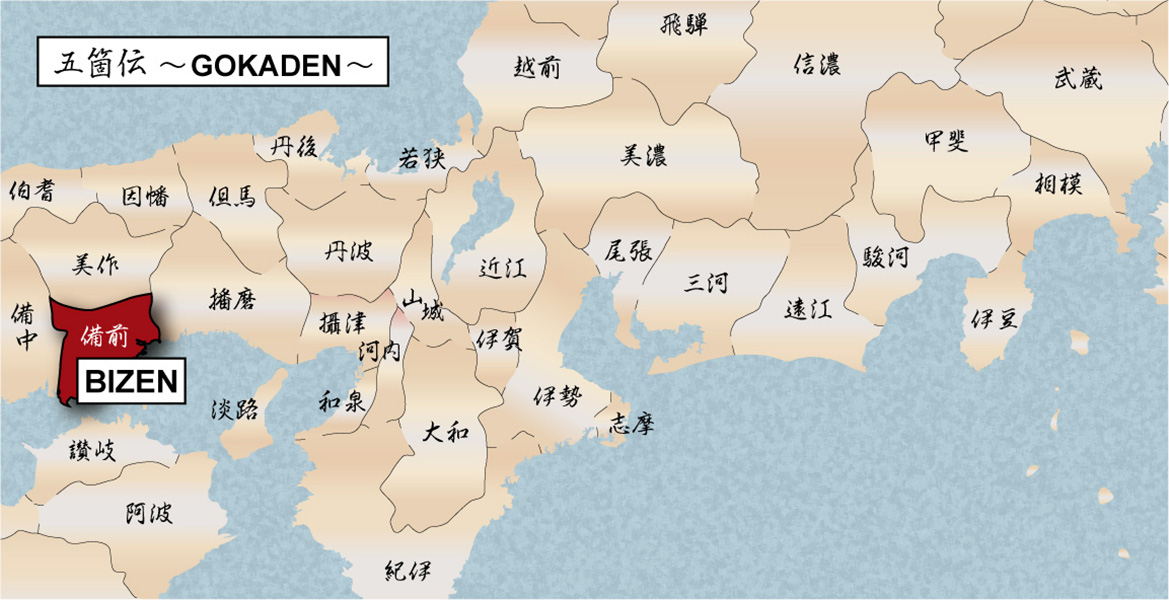
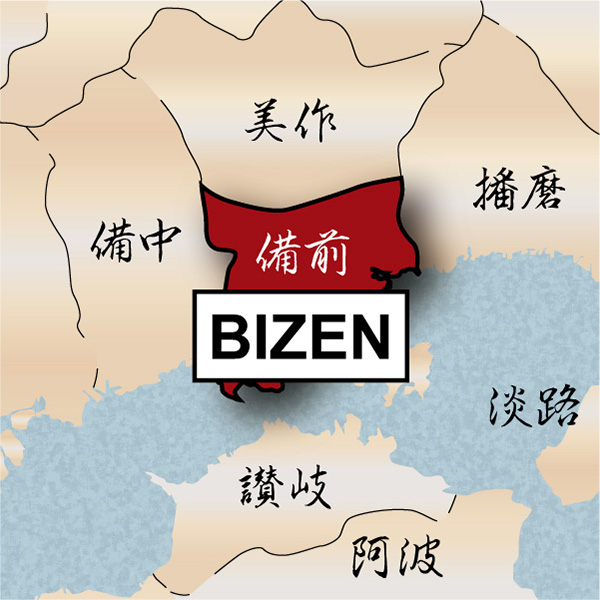
This History of Bizen Osafune School
It is said that Osafune school was founded by Mitsutada (光忠), who was active during the mid-Kamakura period. Bizen Osafune school was the biggest one of all other schools in Bizen province, and they received many orders from feudal lords or renowned Samurai. They were called Osafunemono and were beloved by Samurai warriors.
Among the swordsmiths who belonged to this school, Nagamitsu, Sanenaga, and Kagemitsu are known as Osafune Sansaku, the three renowned Osafune swordsmiths. There are also four other prominent swordsmiths who were from Bizen Osafune school. They are called Osafune Shiten-no, the four masters of Osafune school. Their names are Nagamitsu, Kanemitsu, Nagayoshi, and Motoshige.
BIZEN is located near the Chugoku Mountains, where iron sands, one of the essential materials for making Japanese swords, were abundant. Furthermore, BIZEN swordsmiths had close access to the Yoshi River, where they could find water and charcoal. This geological location contributed to the swordsmiths forging high-quality refined blades. We presume BIZEN was quite active in sword-forging from ancient times. It is said that BIZEN DEN was created by groups of swordsmiths there during the late Heian era (Late 12th century). These ancient swordsmiths in Bizen province are called Ko-Bizen (Old Bizen) swordsmiths. By inheriting the sword forging techniques from Ko-Bizen swordsmiths, the Bizen Osafune school flourished from the mid-Kamakura period.
-Wakizashi
This blade was signed by Ise Daijo Fujiwara Yoshihiro (伊勢大掾藤原吉廣) and Echizen Daijo Fujiwara Ujihiro (越前大掾藤原氏廣) during the mid Edo period (late 17th century). The signature also says they lived in Hishu (Today’s Saga and Nagasaki prefecture) when they created this blade together. Hishu is also known as Hizen no Kuni(肥前国).
Ise Daijō Fujiwara Yoshihiro (伊勢大掾藤原吉廣), also known simply as Hizen-jū Minamoto Yoshihiro (肥前住源吉廣). His first name was Yoshizaemon (吉左衛門), and his early signature was Yoshisada (吉定). He was a direct disciple of the famous master Hizen Tadayoshi (肥前忠吉), the founder of the renowned Hizen school, which laid the foundation for swordsmithing in Hizen Province (present-day Saga and Nagasaki Prefectures).
Yoshihiro inherited not only his master’s forging techniques but also his refined sense of beauty in sword-making. His works often reflect the graceful and well-balanced style typical of the Hizen tradition, characterized by a clear jigane (steel surface) and an elegant hamon (temper line).
When two swordsmiths collaborate to create one work, it is called Gassaku (合作). It was generally done by a master and his apprentice or his son. Masanori is Yoshinori’s son. They served Utsunomiya domain and belonged to Hosokawa school, initially founded by the first-gen Hosokawa Masayoshi. We believe Yoshihiro and Ujihiro had a close relationship, and the father must have acknowledged the craftsmanship of his son.
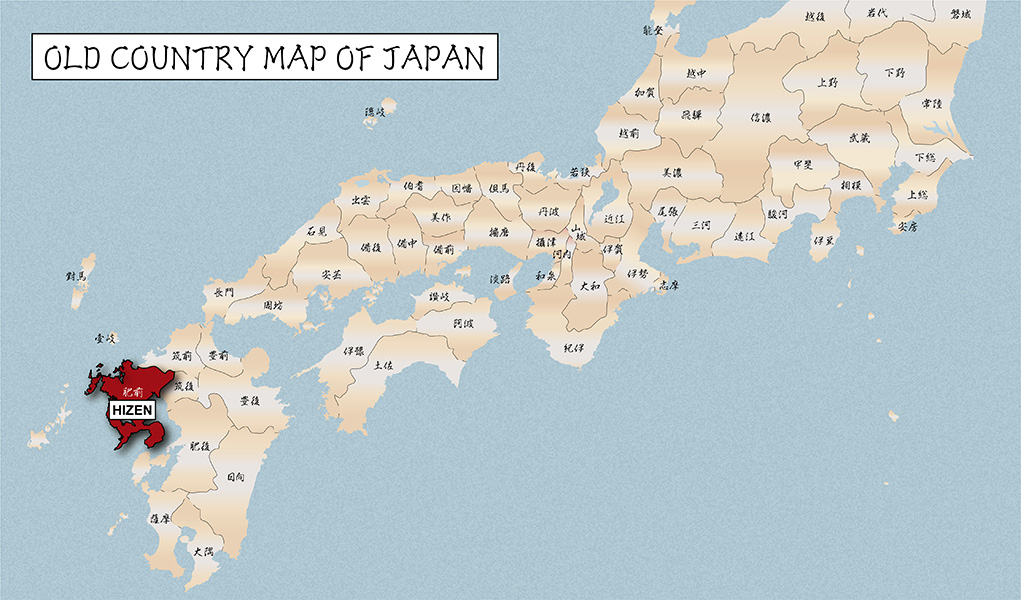
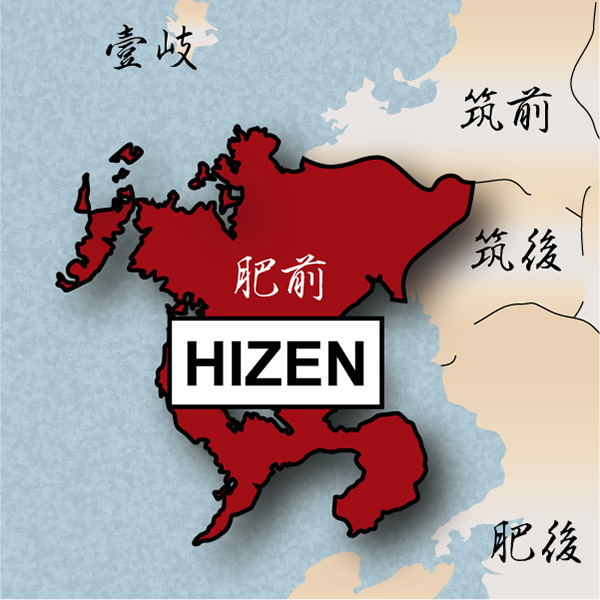
What is Daisho?
Daisho is a pair of two Japanese swords Samurai carried. During the Edo period, having Daisho in public places was considered social status for Samurai. Furthermore, Samurai were required to wear them under the law back then. Daisho is written as 大=Big and 小=Small. Dai part means Katana, and Sho part means Wakizashi. We are confident you would find this pair of Daisho Koshirae gorgeous.
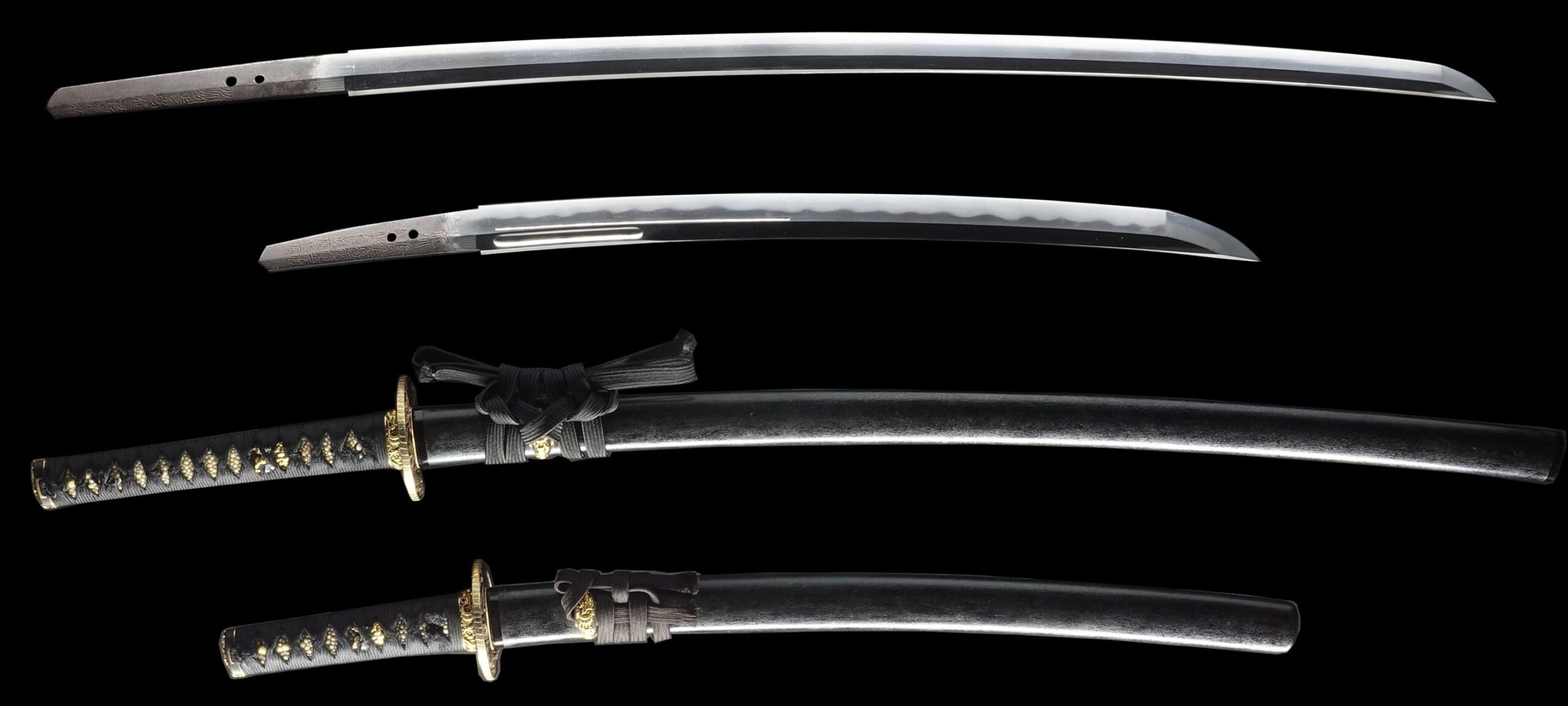
Appraisal
This Katana blade is appraised as a Hozon Token (保存刀剣) and this Wakizashi is appraised as a Tokubetsu Hozon Token (特別保存刀剣). They were issued by NBTHK (Nihon Bijutsu Touken Hozon Kyokai:日本美術刀剣保存協会). These authentication papers were only given to authentic Japanese swords well preserved and high quality with artistic value.
*Please keep in mind that there are a couple of Kitae Kizu and black rusts on the blade of this Katana and Wakizashi. If you like to see the detailed condition, please feel free to contact us.
【Blade】
–Katana
Cutting Edge Length(Nagasa):71.4 cm (28.11 inches)
Curvature(Sori):1.6 cm (0.62 inches)

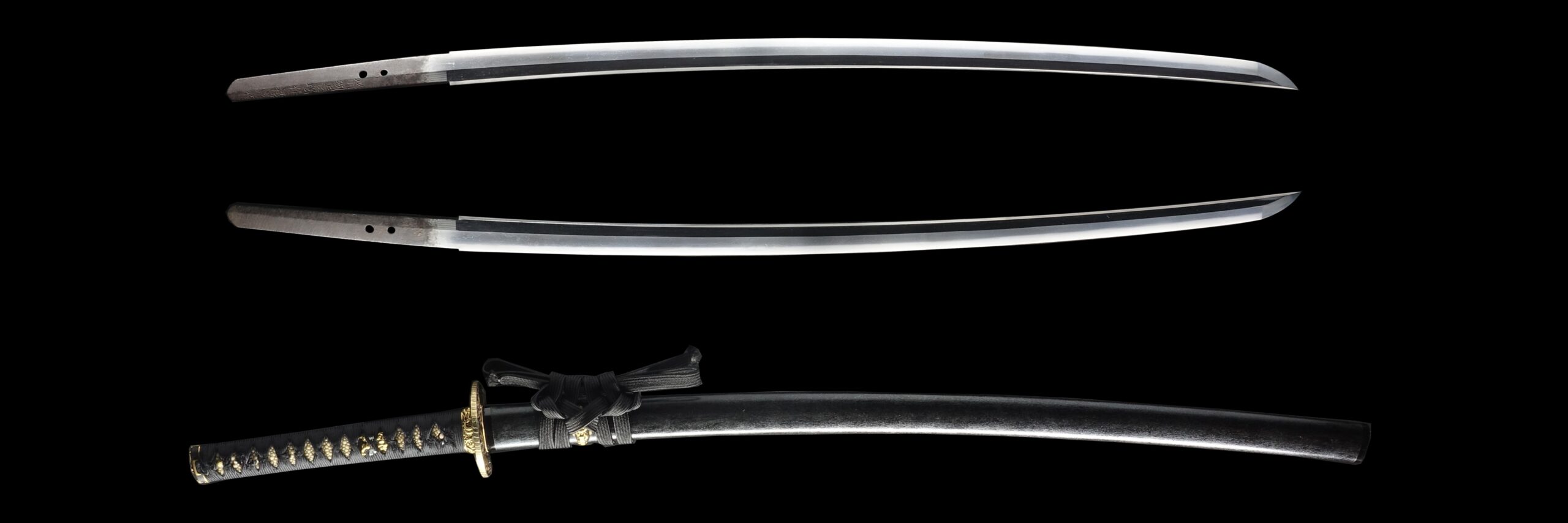
-Wakizashi
Cutting Edge Length(Nagasa):48.6 cm (19.1 inches)
Curvature(Sori):1.3 cm (0.51 inches)

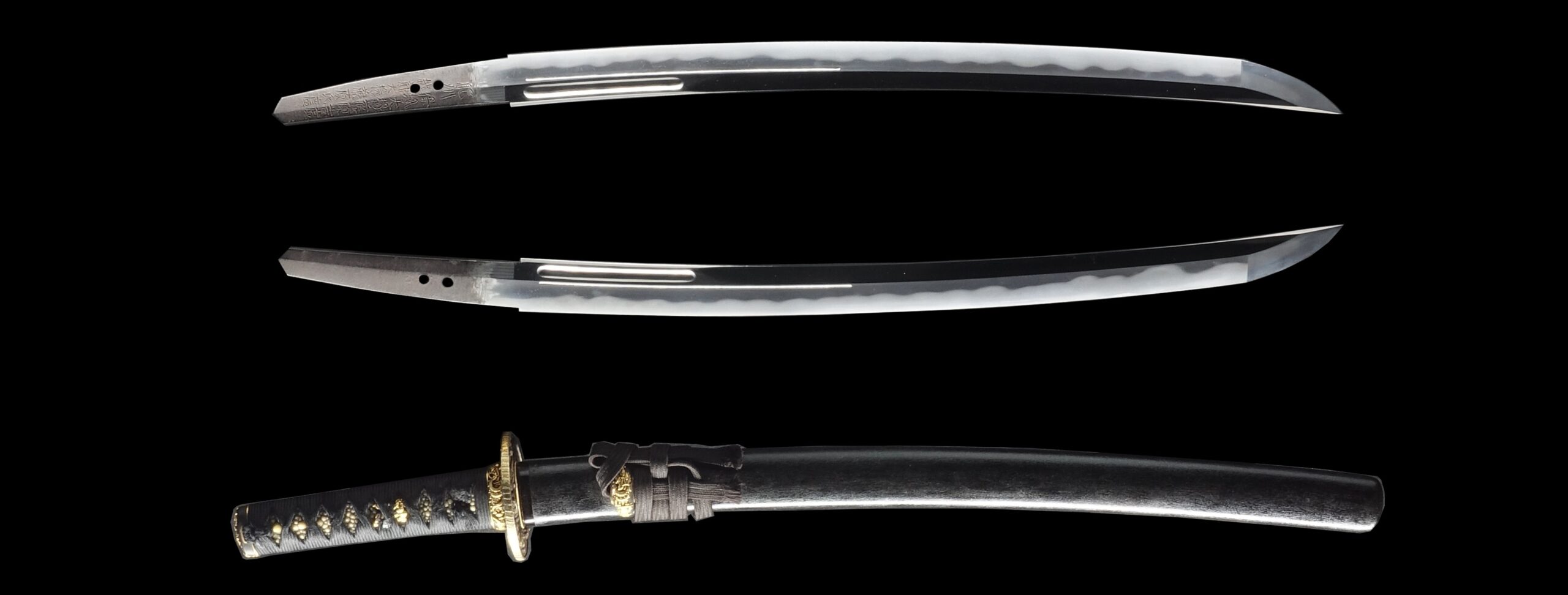
Hamon:
The crystalline structure which forms along the cutting edge of a blade as a result of the hardening process
Jimon(Jihada):
visible steel surface pattern created by folding and hammering during forging process
–Katana
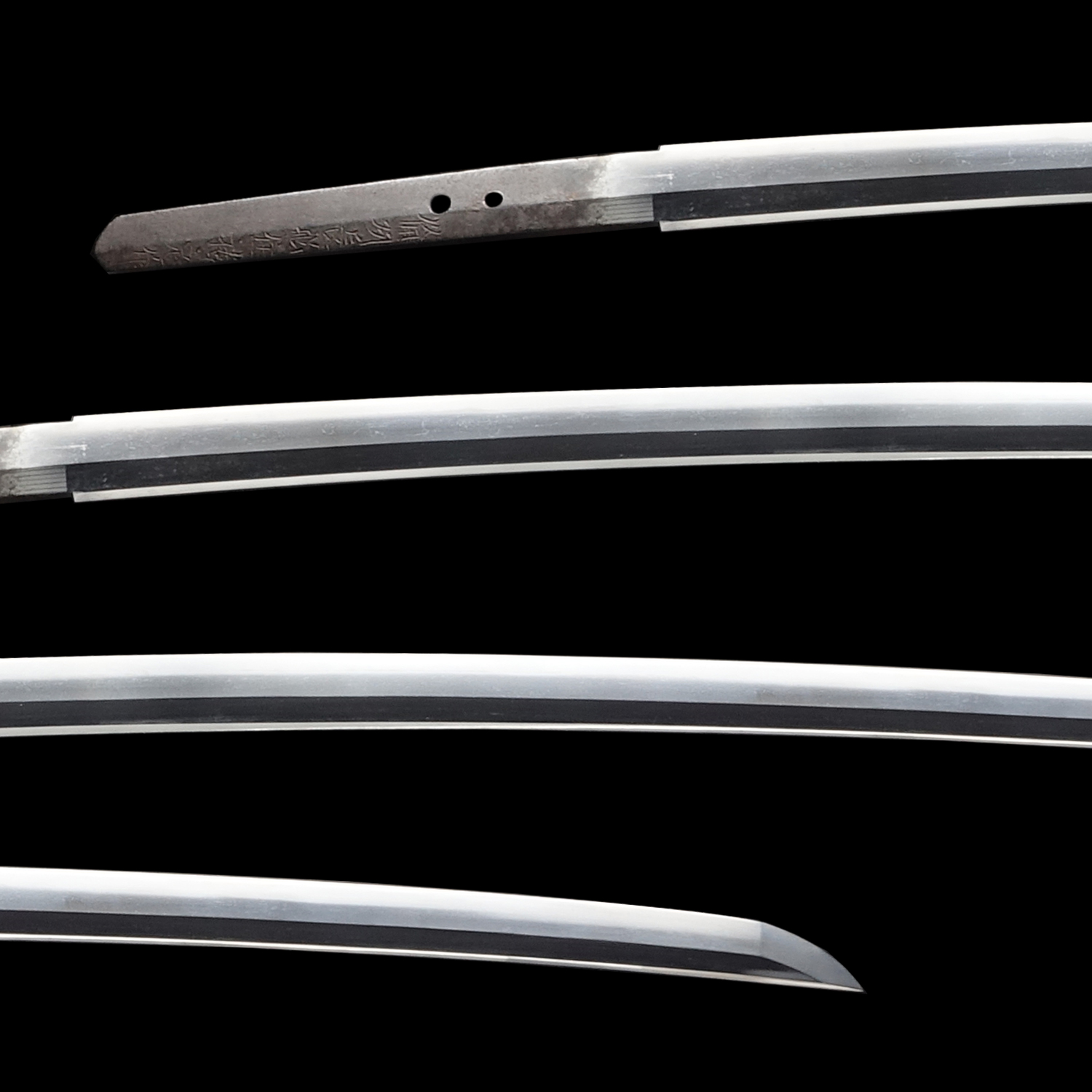
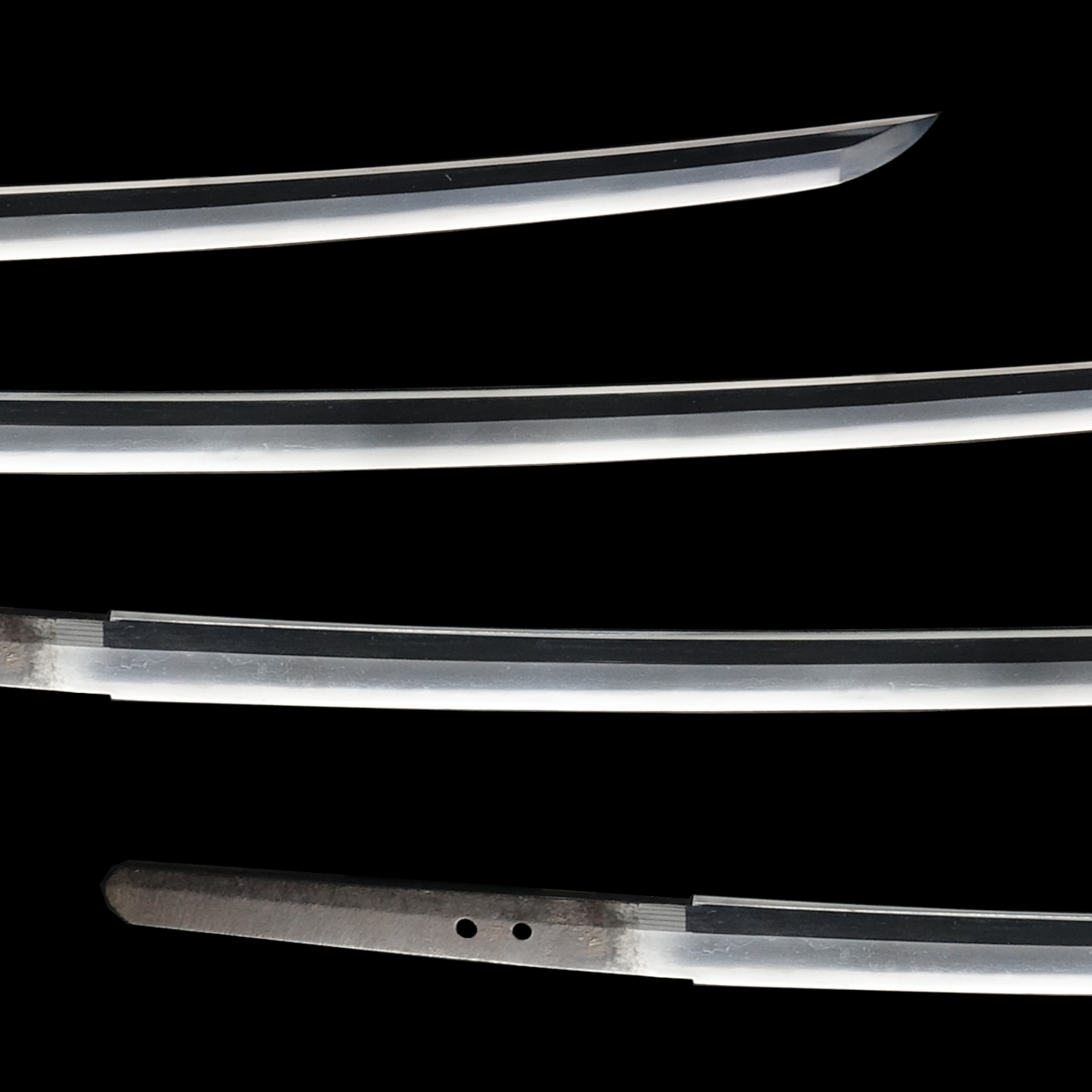
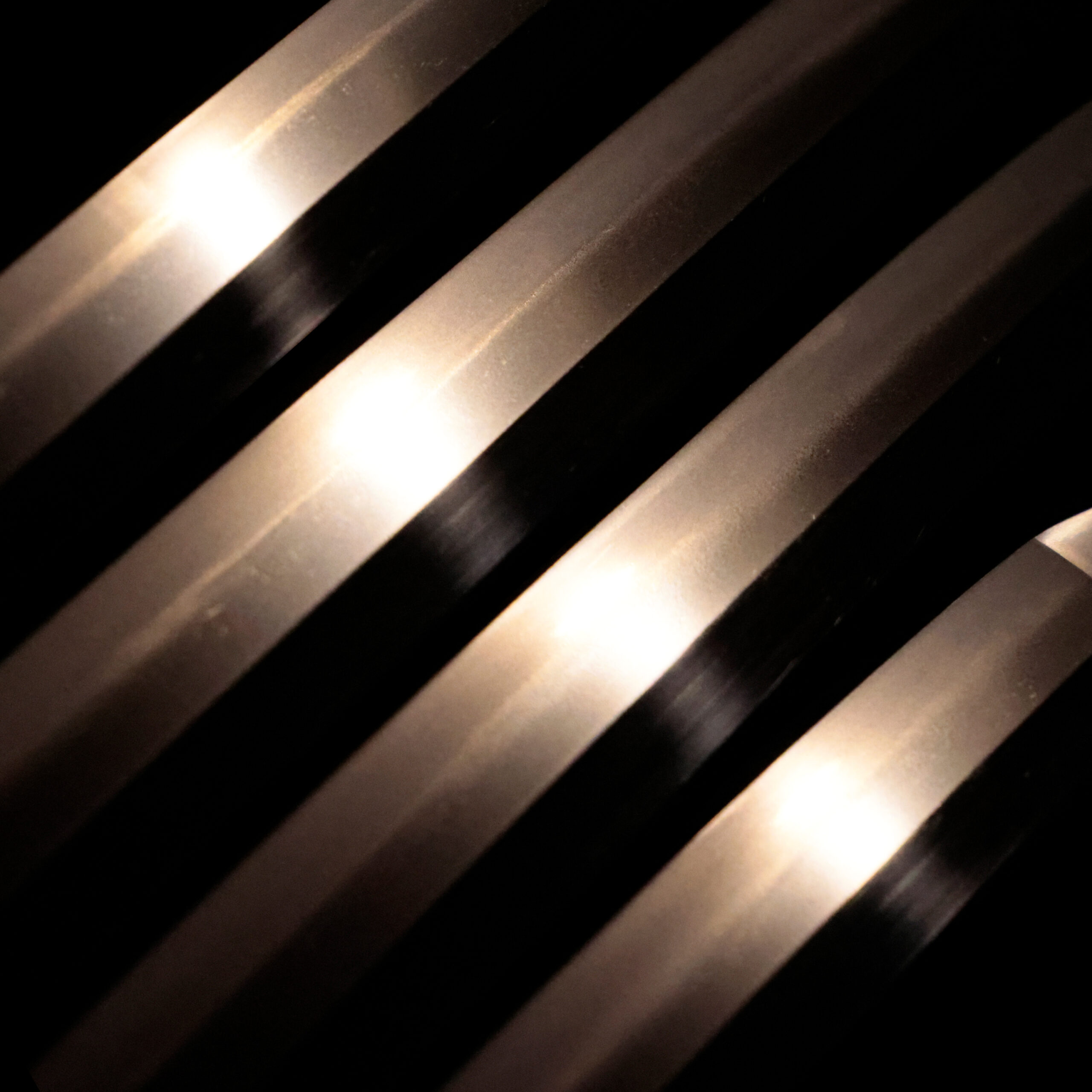
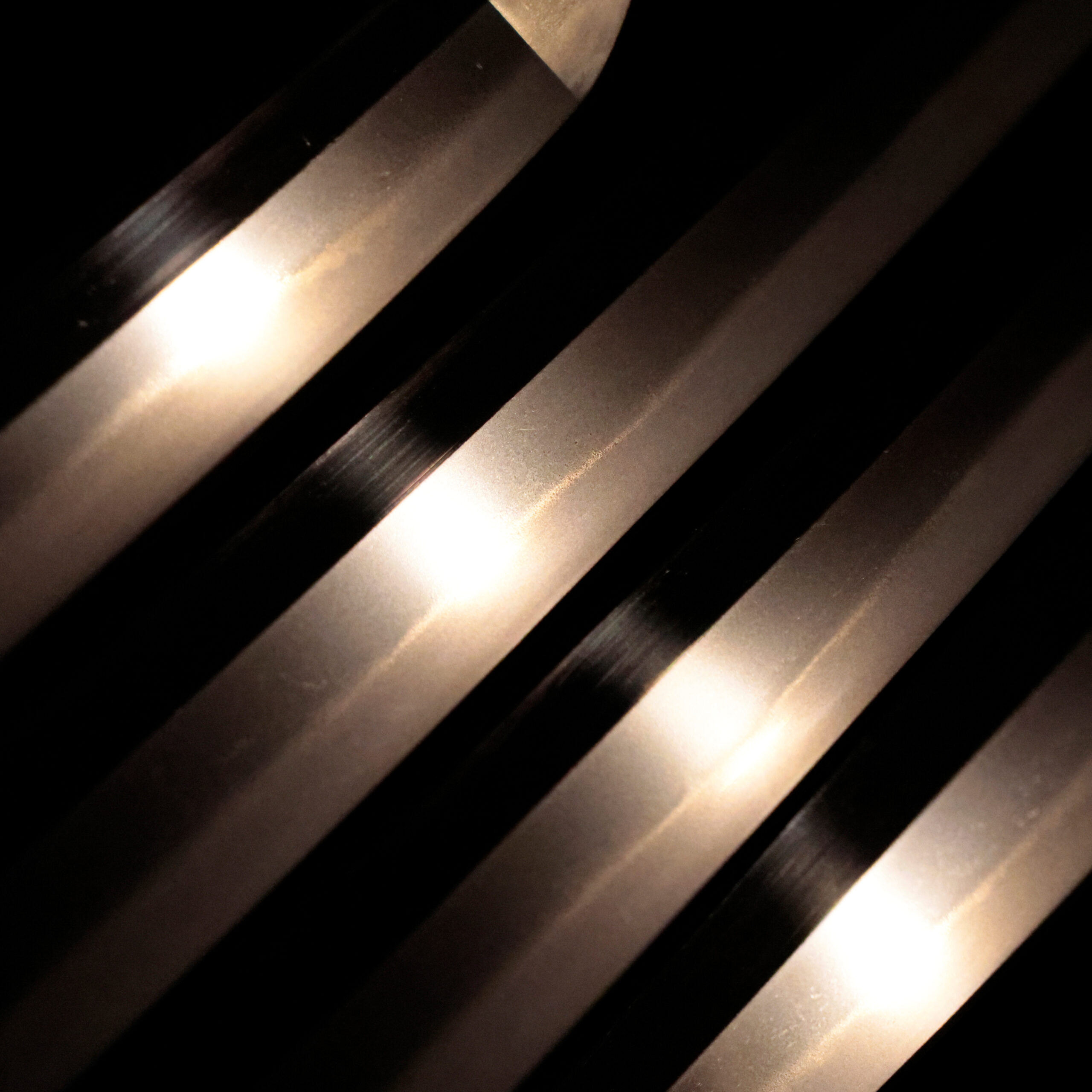
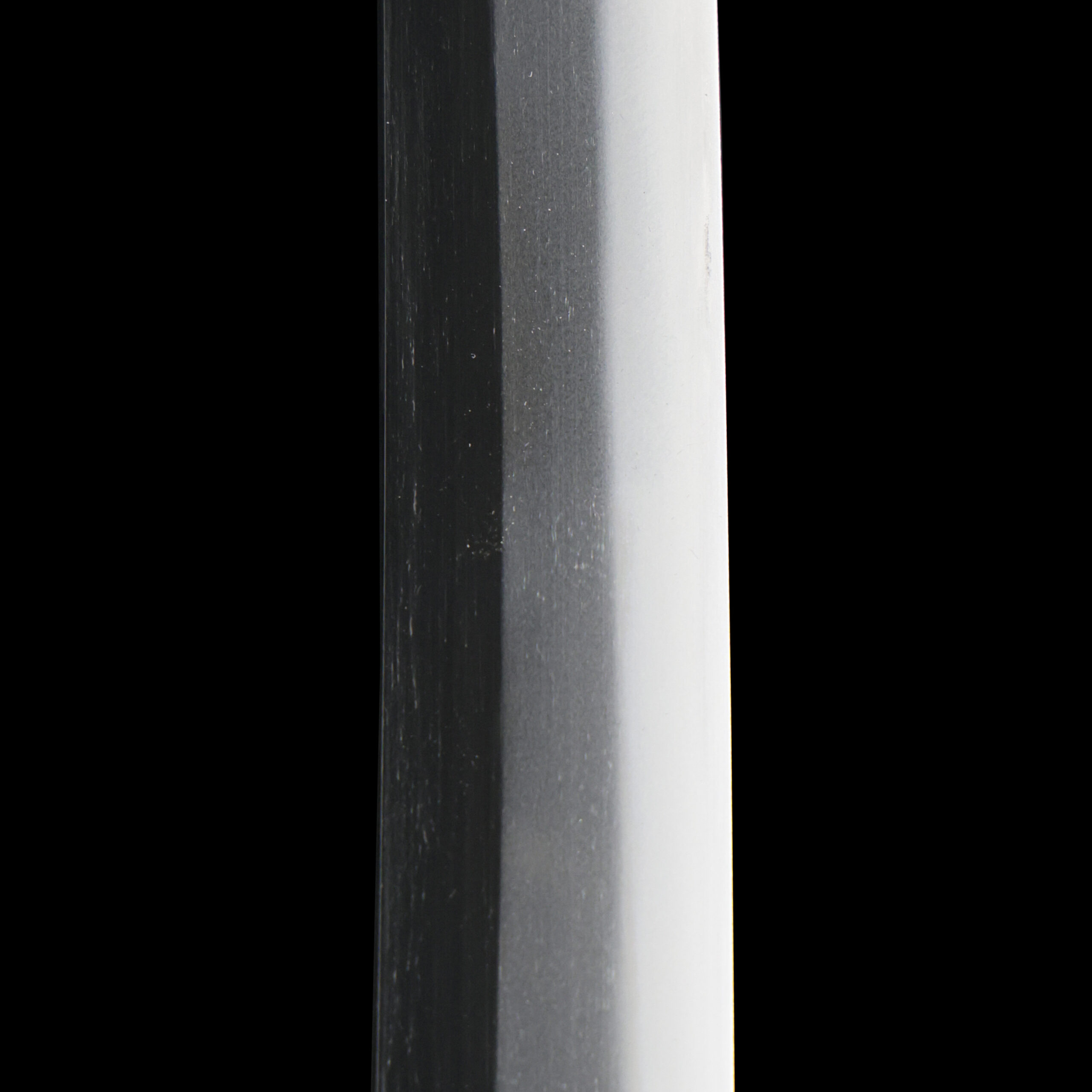
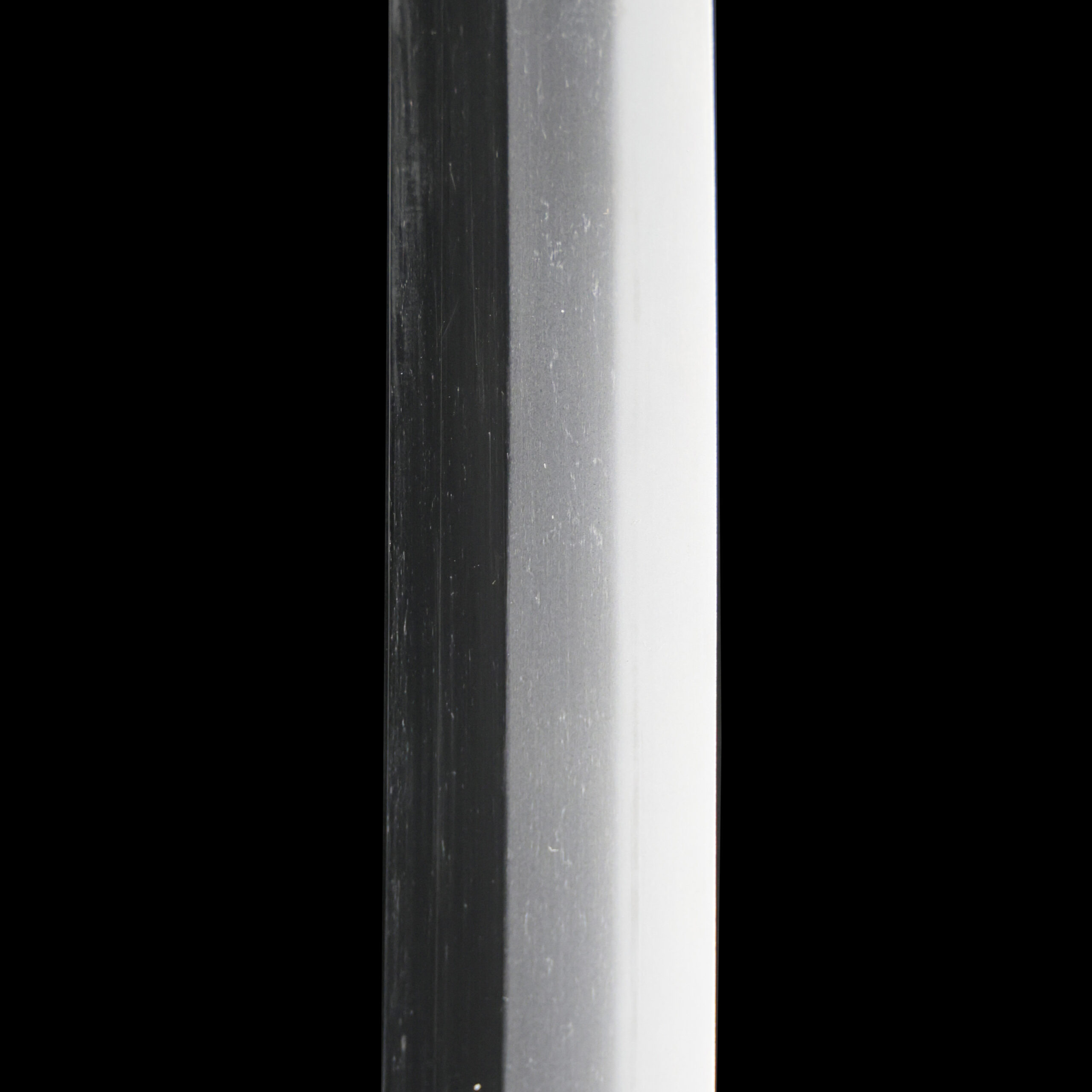
-Wakizashi
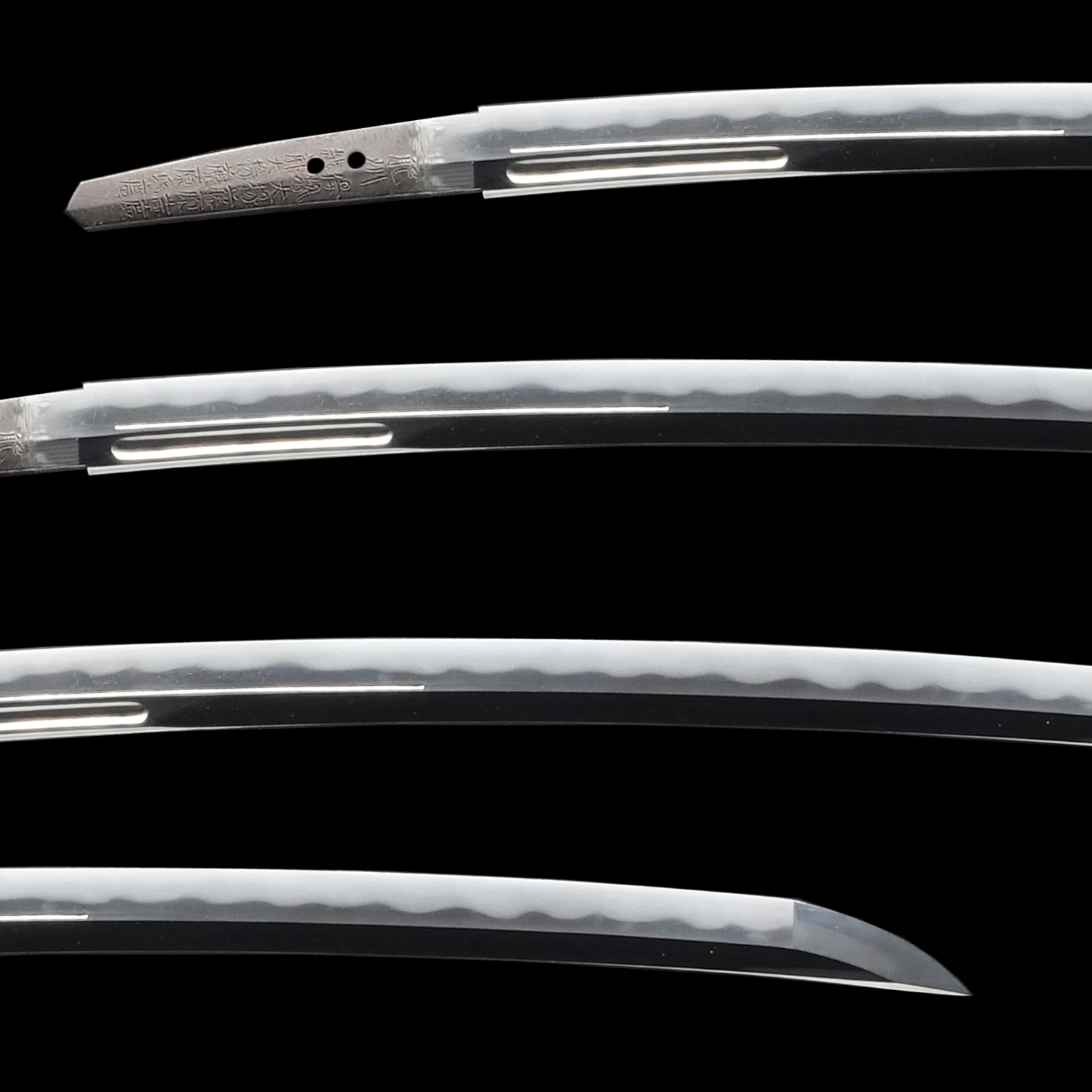
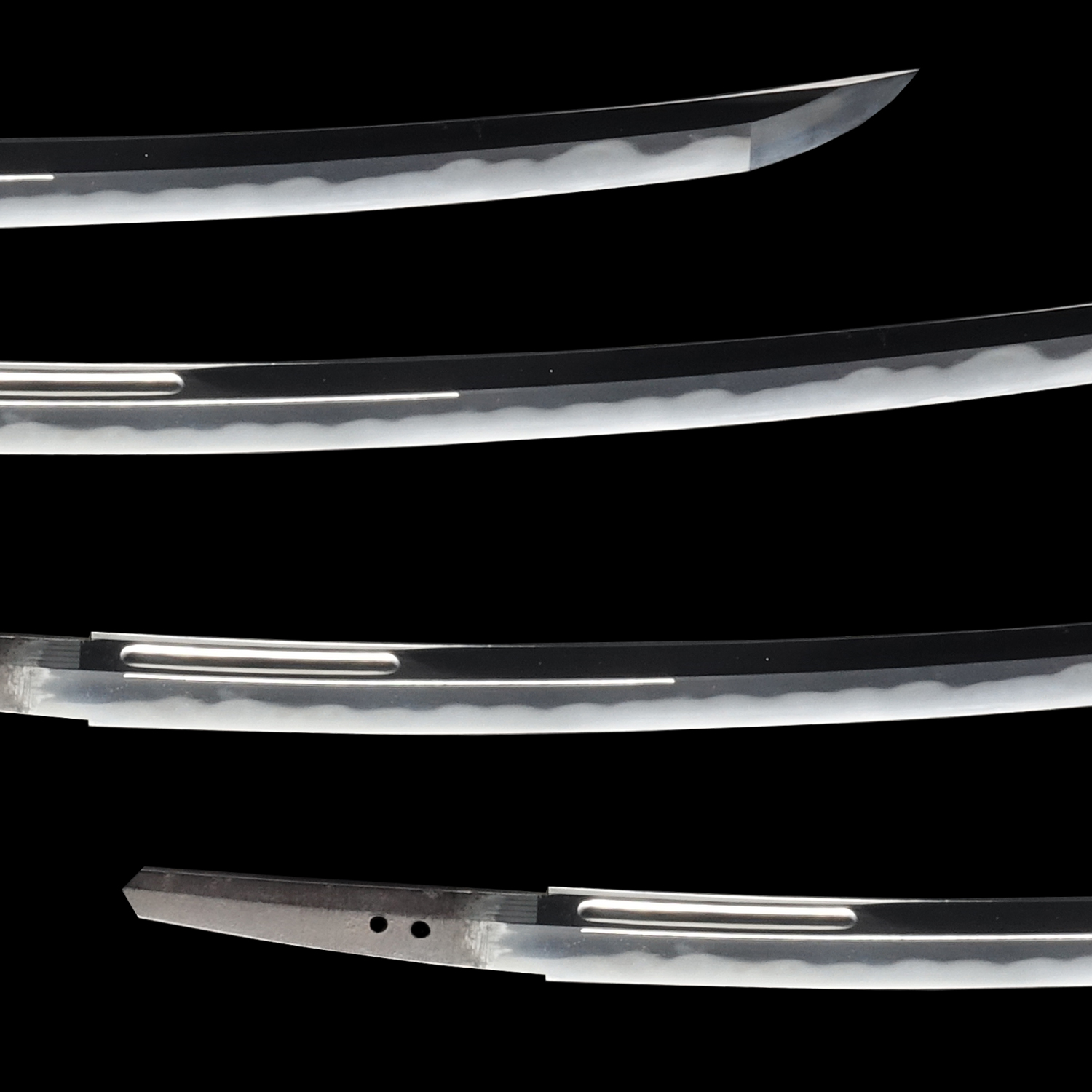
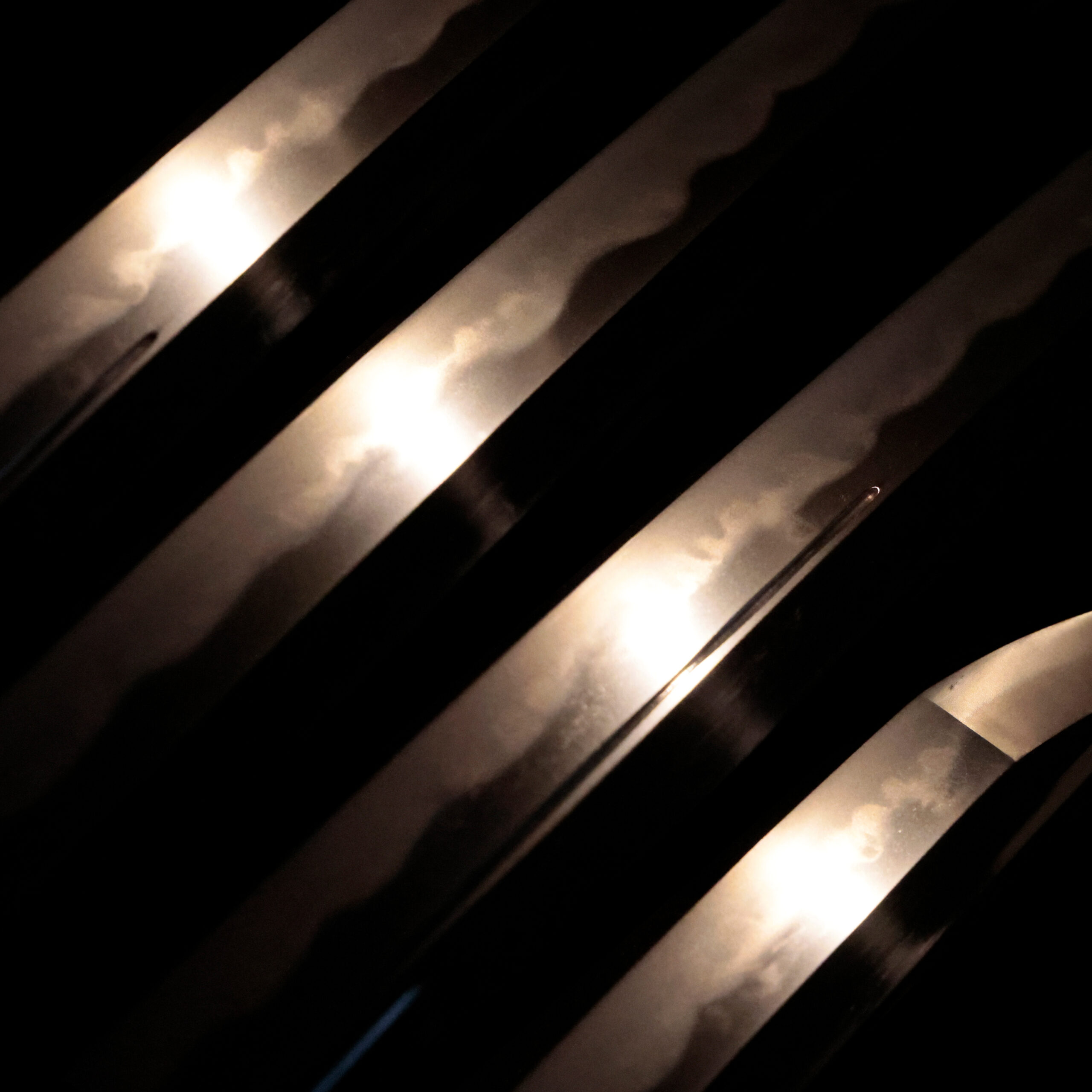
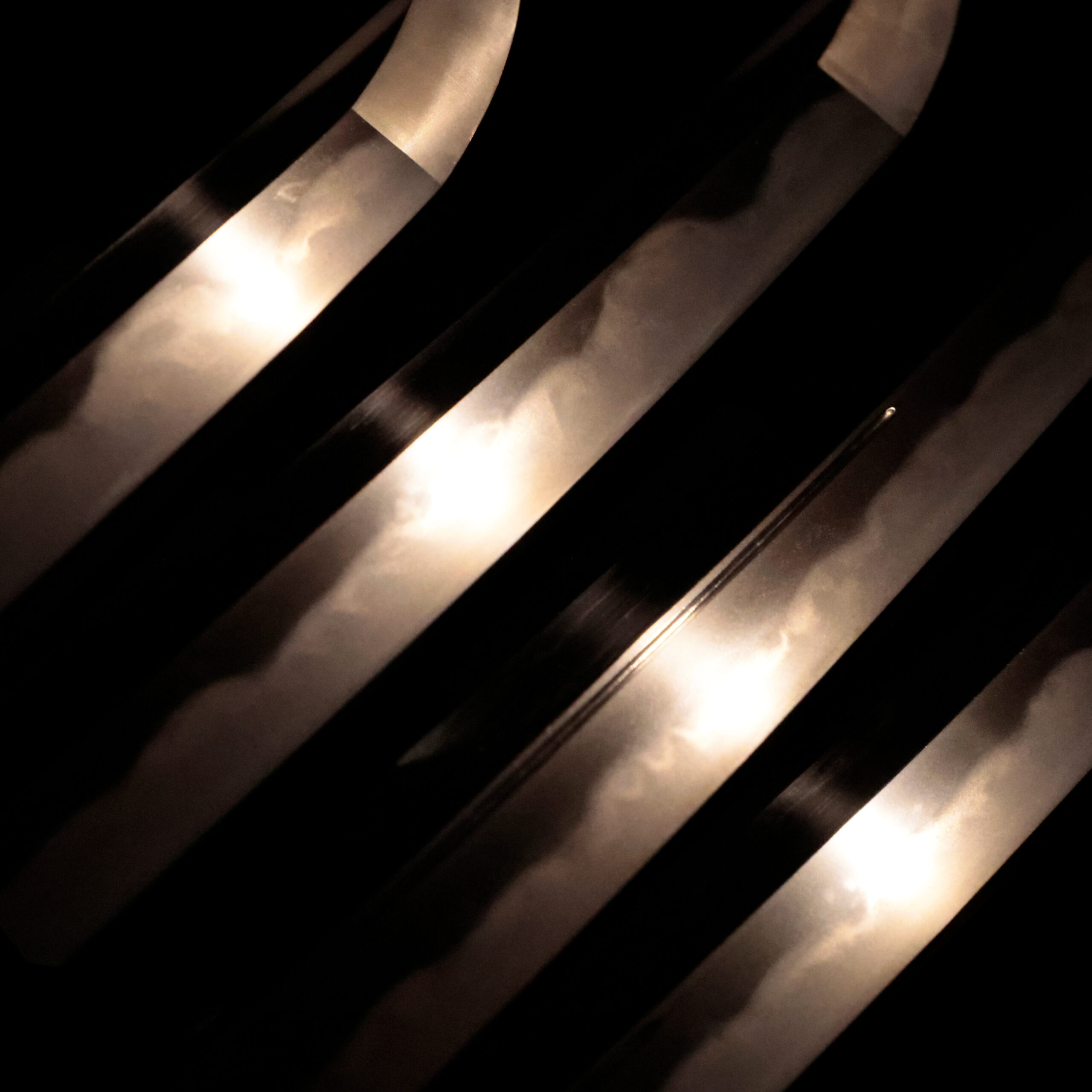
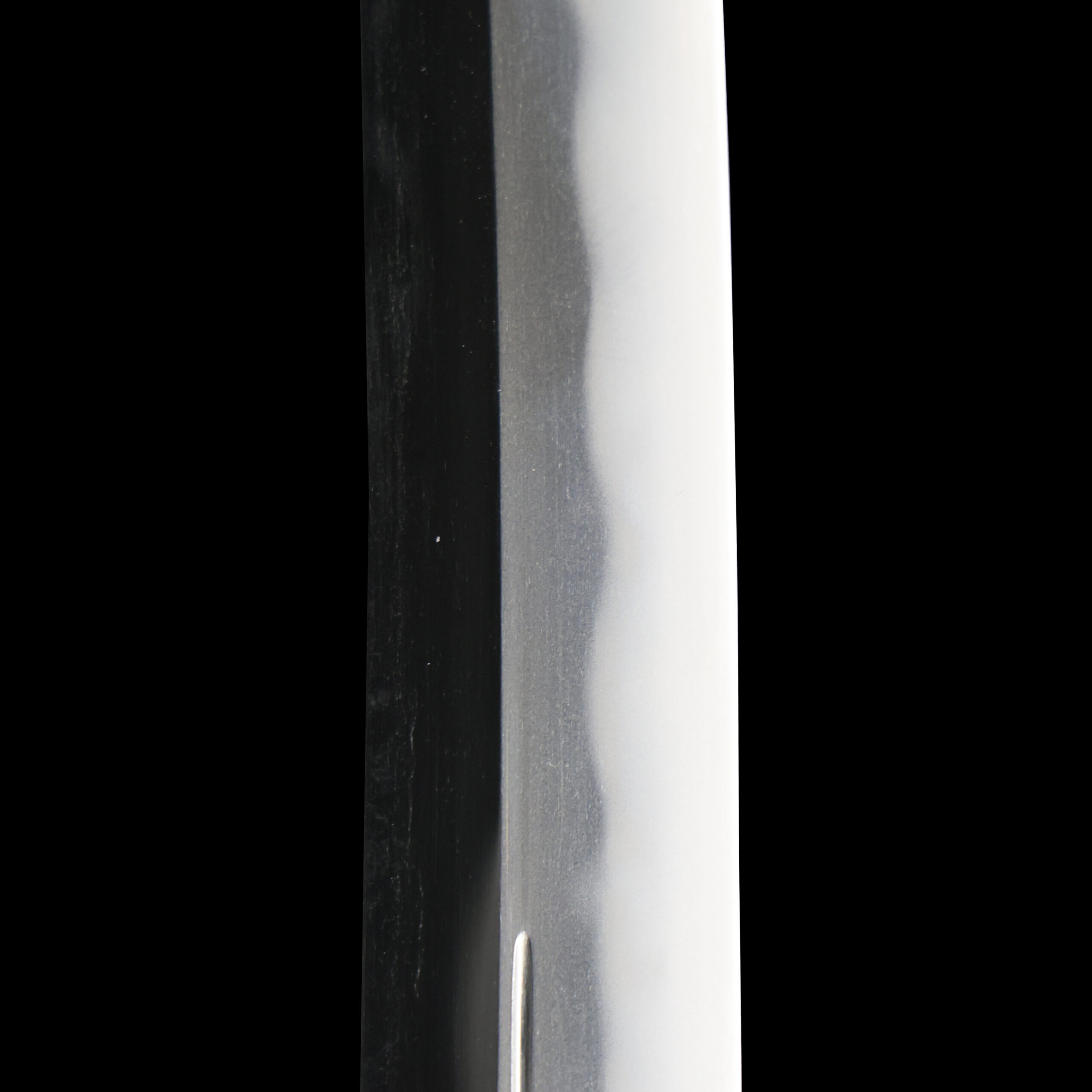
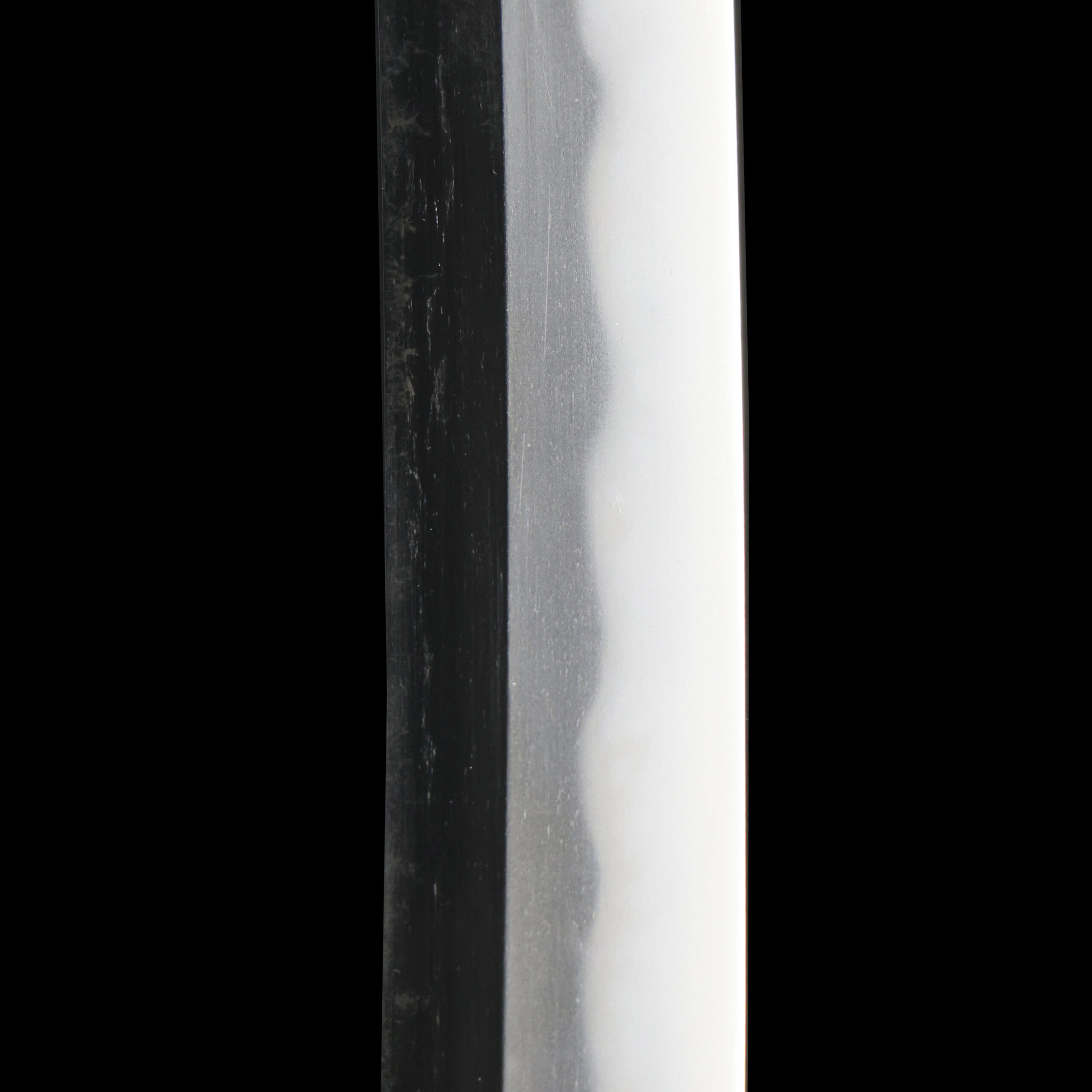
Kissaki:Kissaki is the tip of the Japanese sword.
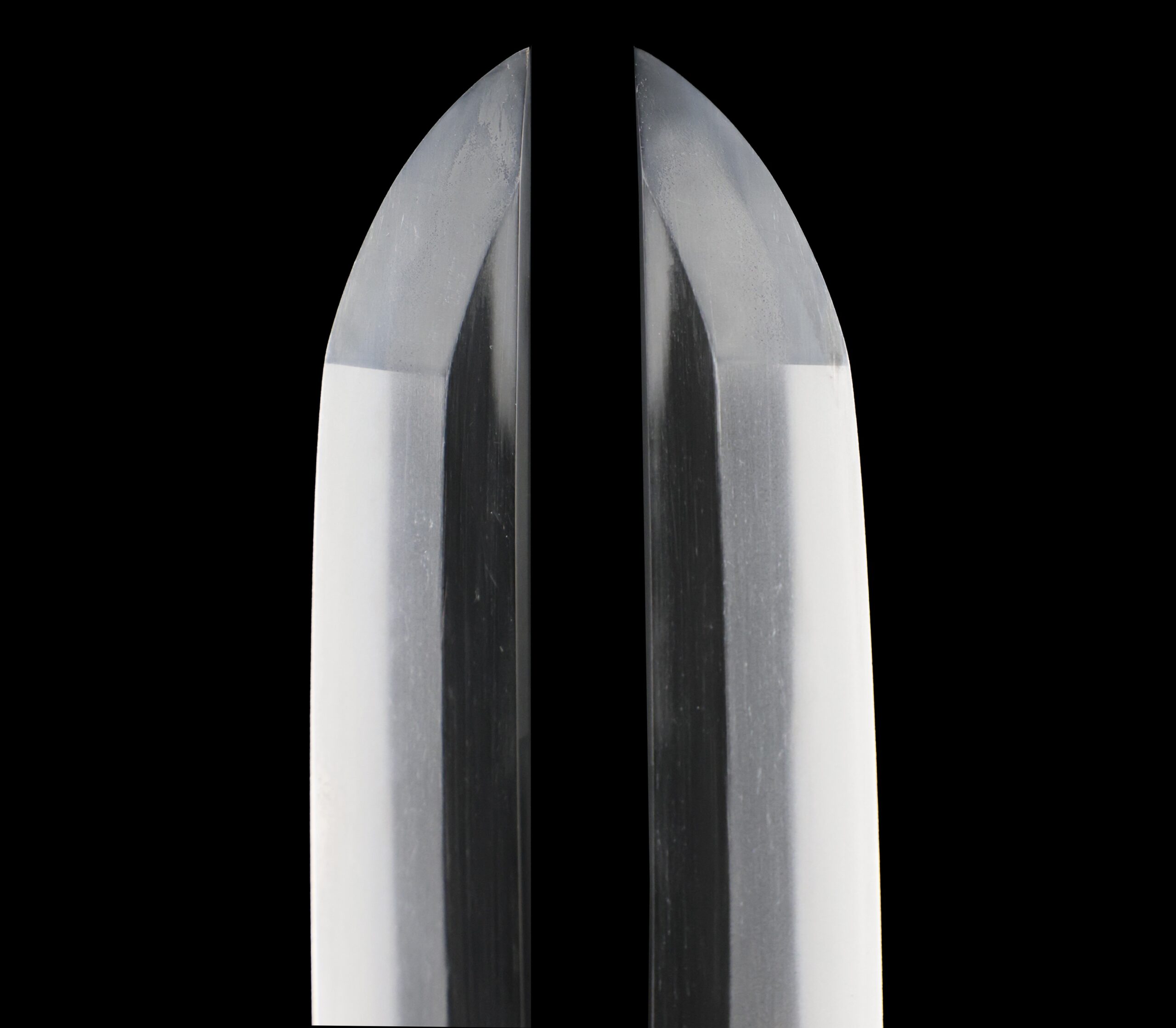
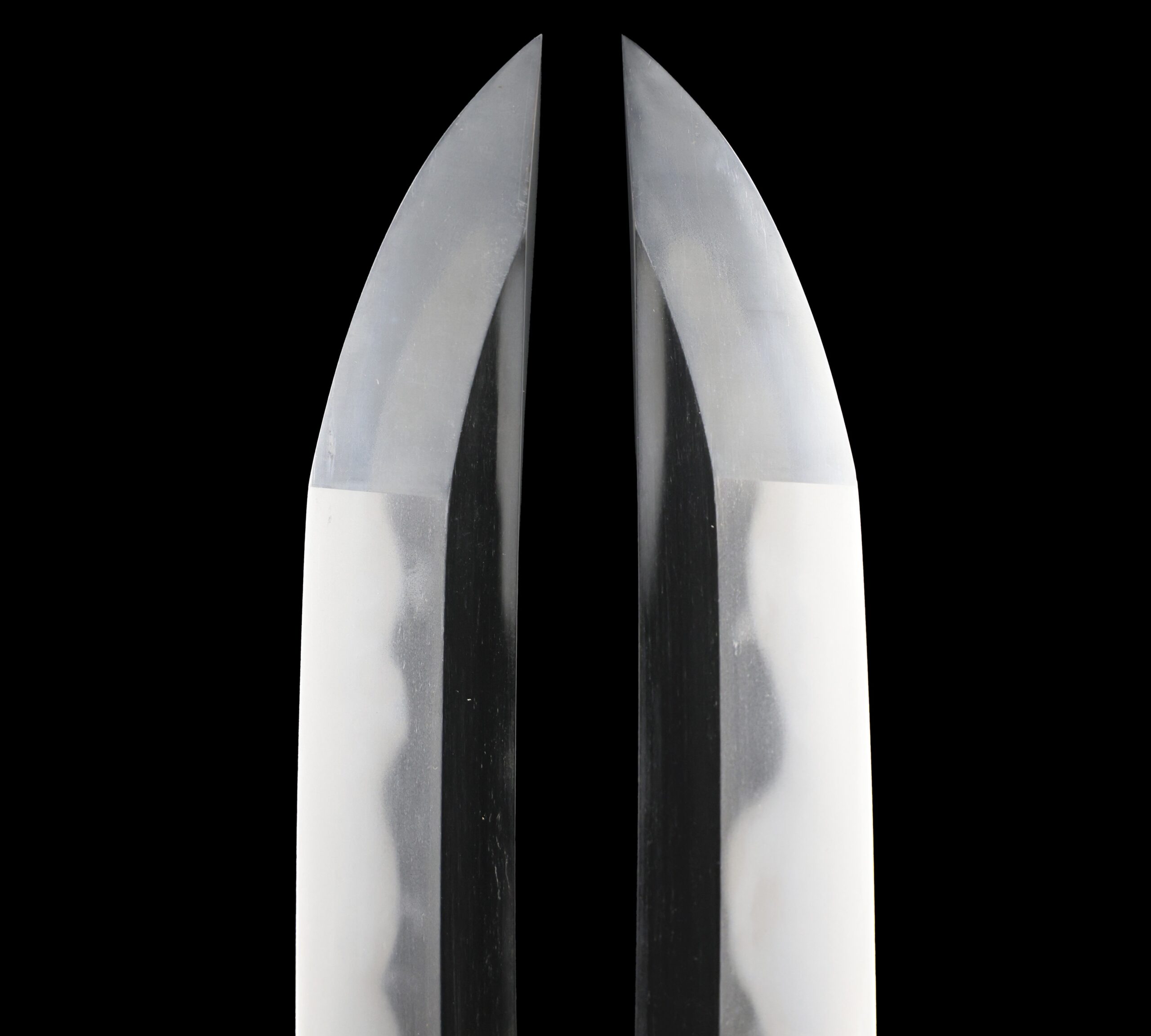
Nakago:Nakago is the tang of the Japanese sword.
Japanese swordsmiths left the black rust on the tang because it prevents red rust while the tang is in its handle. And the discoloration of the tang was created over time, and it is a great indicator for a Japanese sword specialist to estimate when the sword was forged.
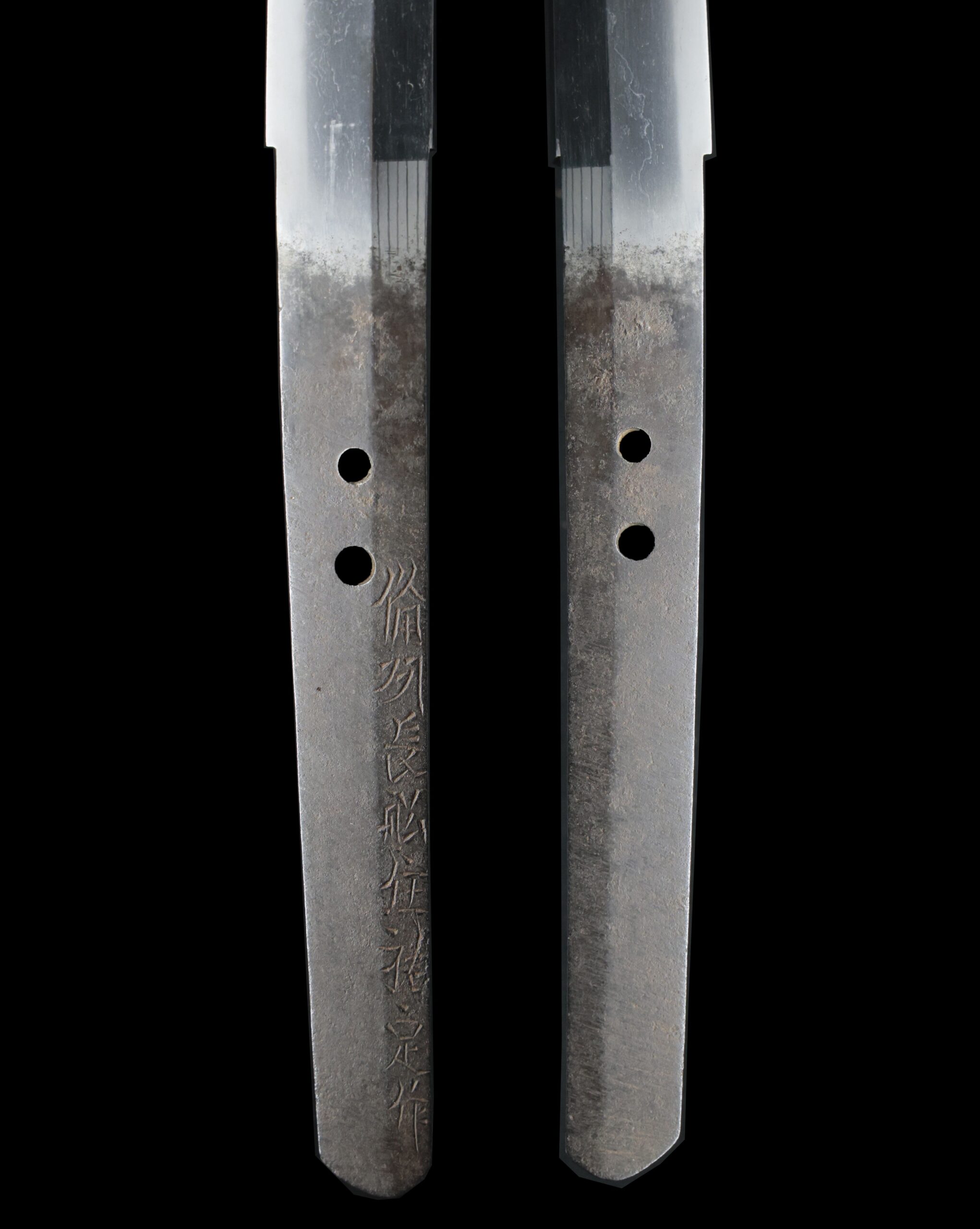
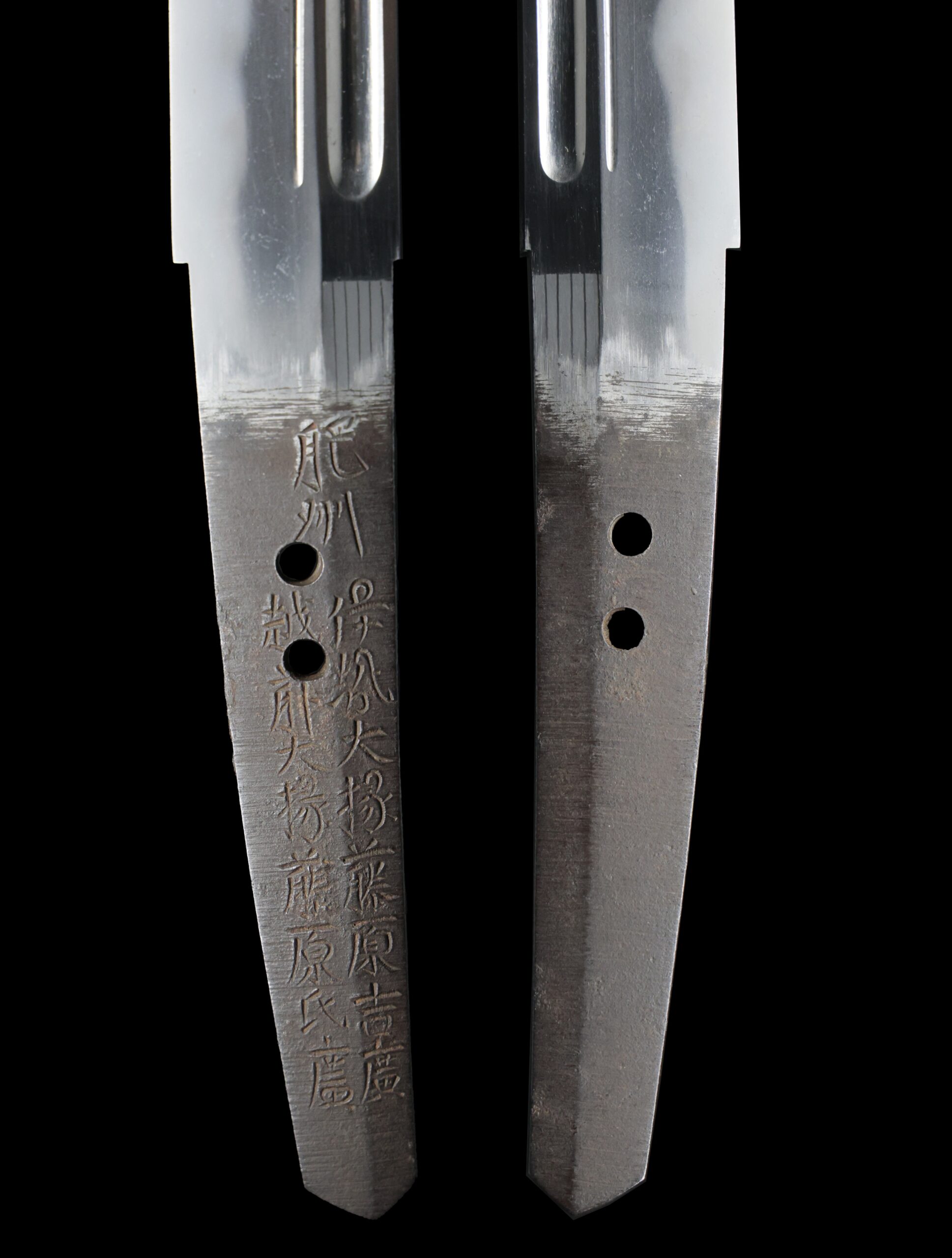
Koshirae: Koshirae is the mounting of the Japanese sword. There are several parts that consist of Koshirae such as Saya (Sabbard), Tsuka (Handle), Tsuba (Handguard).
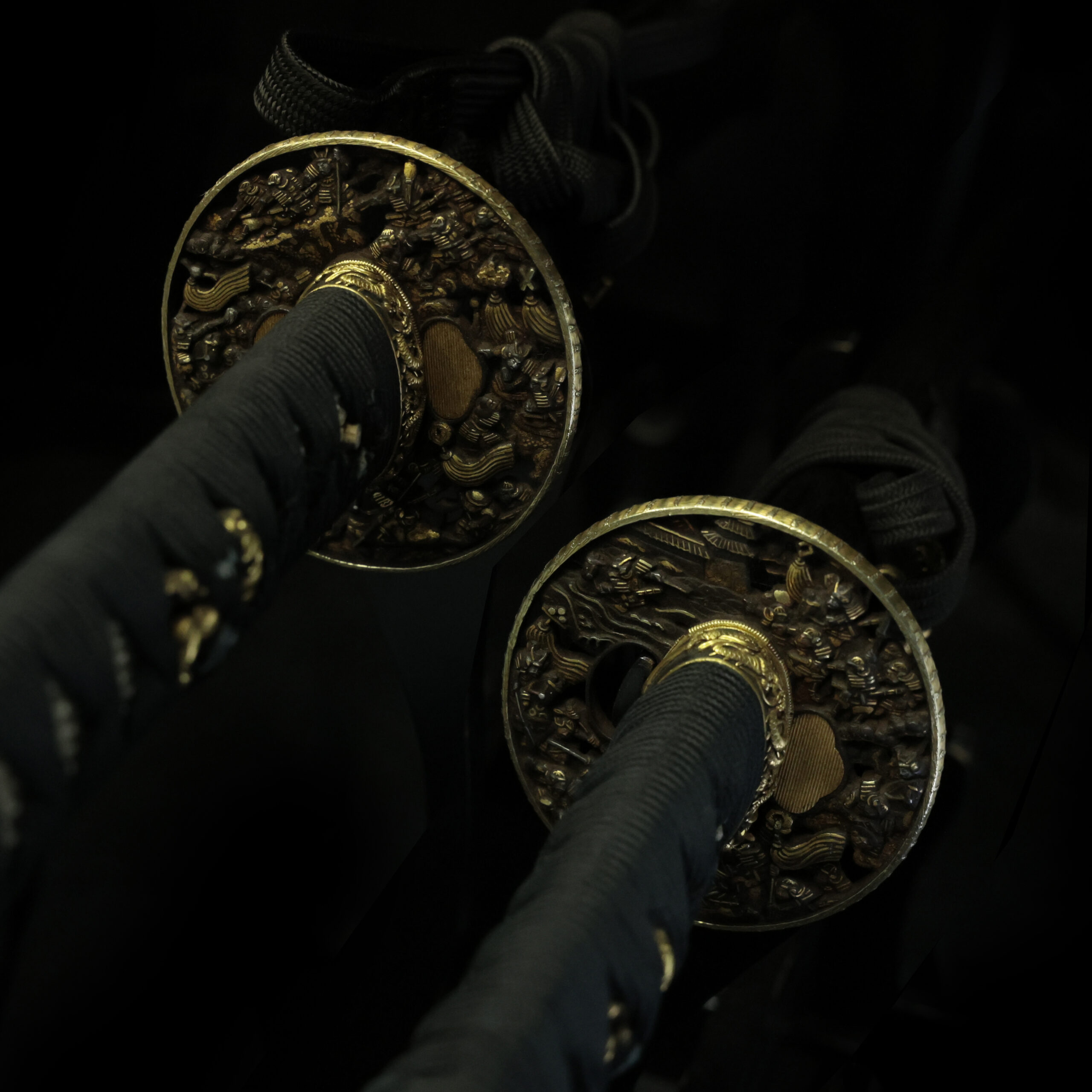
Fuchi-Kashira:A pair of matching sword fittings that cover the upper and bottom parts of its sword hilt.
The dragon depicted on this Fuchi-Kashira is known as Kurikara Ryū (倶利伽羅龍), a dragon deity considered an incarnation of Fudō Myō-ō himself. Kurikara Ryū-ō is believed to be a divine protector, enveloped in blazing flames that burn away all obstacles and evil. While dragons are traditionally seen as powerful mythical creatures, Kurikara Ryū-ō embodies the very power of Fudō Myō-ō, cutting through ignorance and purging worldly desires. The image of Fudō Myō-ō riding atop the dragon symbolizes his absolute control over chaotic forces, guiding them toward justice and enlightenment.
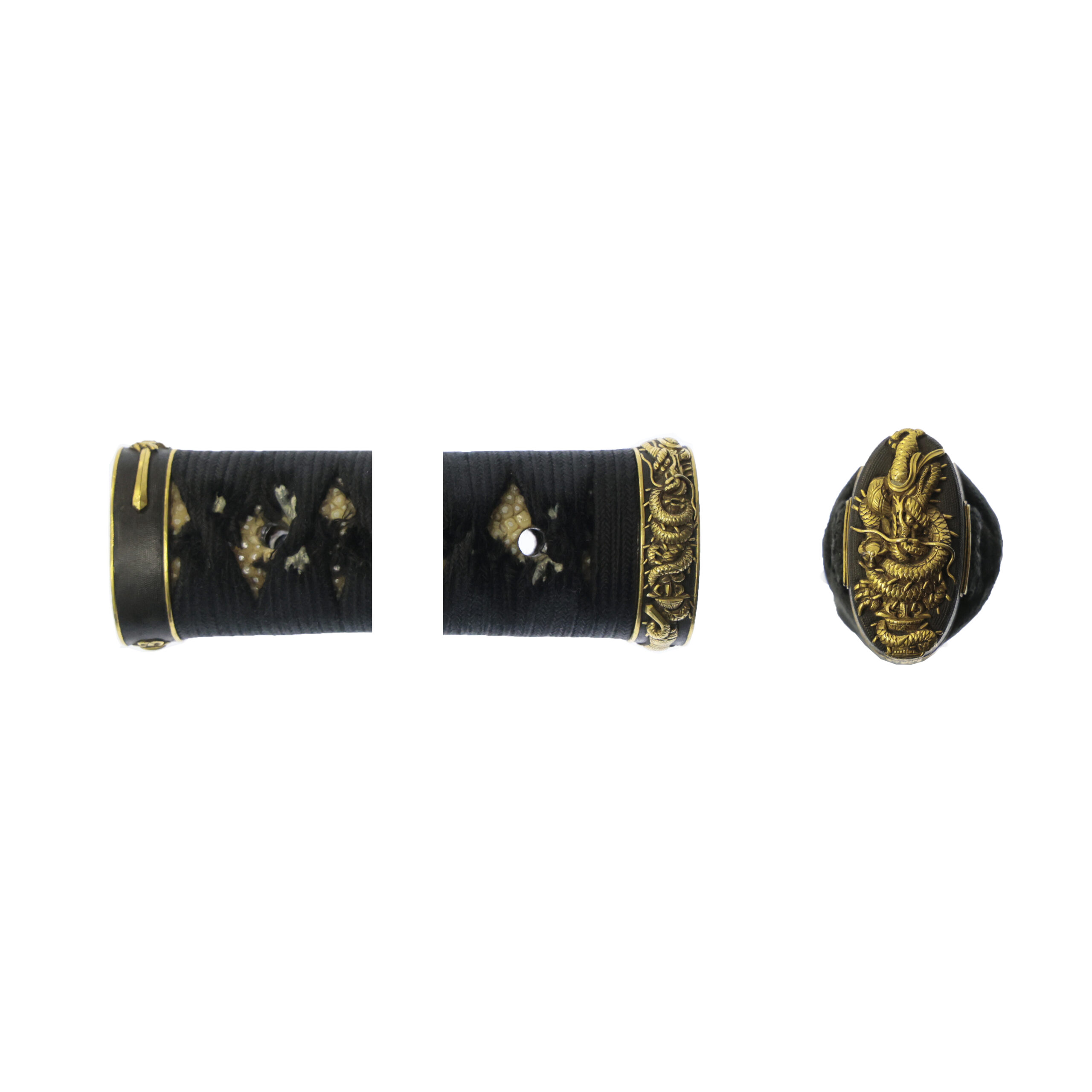
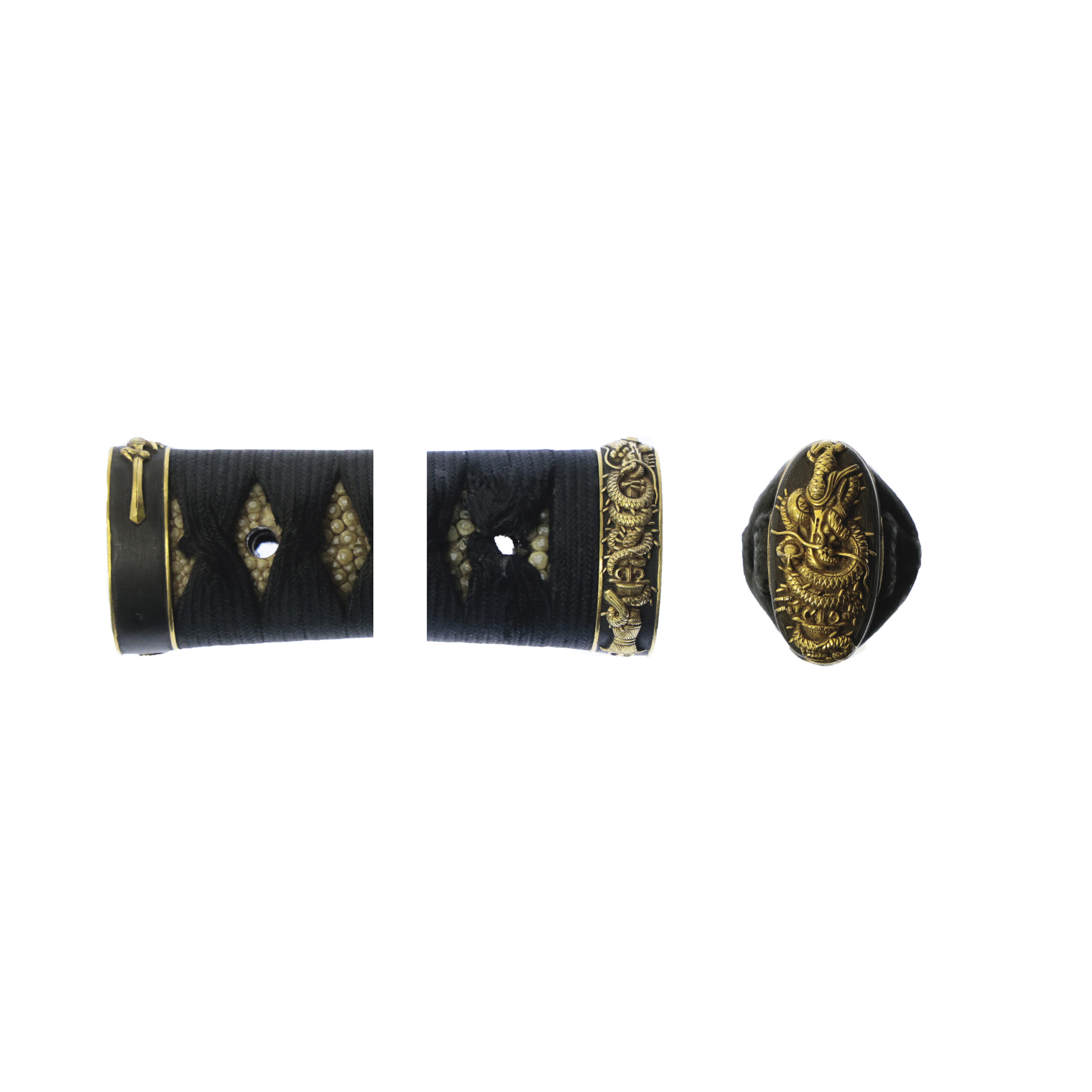
Tsuka and Menuki:Tsuka is the handle of the Japanese sword and Menuki is its decoration.
The theme of the Menuki is Karajishi (唐獅子, lion). The Shishi (獅子) means a lion in Japanese, and the Karajishi is a lion brought from the continent to Japan in the Toh period (唐, Tang dynasty, 618-907). The Karajishi typically has curly hair for its head, neck, body, and tail, as seen on this work. In Buddhism, the Karajishi is regarded as a symbol of wisdom, and Monju Bosatu (文殊菩薩, Manjushri Bodhisattva) rides lions. According to a theory, the Karajishi is the origin of Komainu (狛犬, stone guardian dogs that exorcize evil spirits). It shows this animal motif has been familiar to Japanese people since ancient times.
*Please note that this Tsuka shows signs of long-term use, and the wrapping cord is worn. As a result, some fibers may come off and stick to your hands.
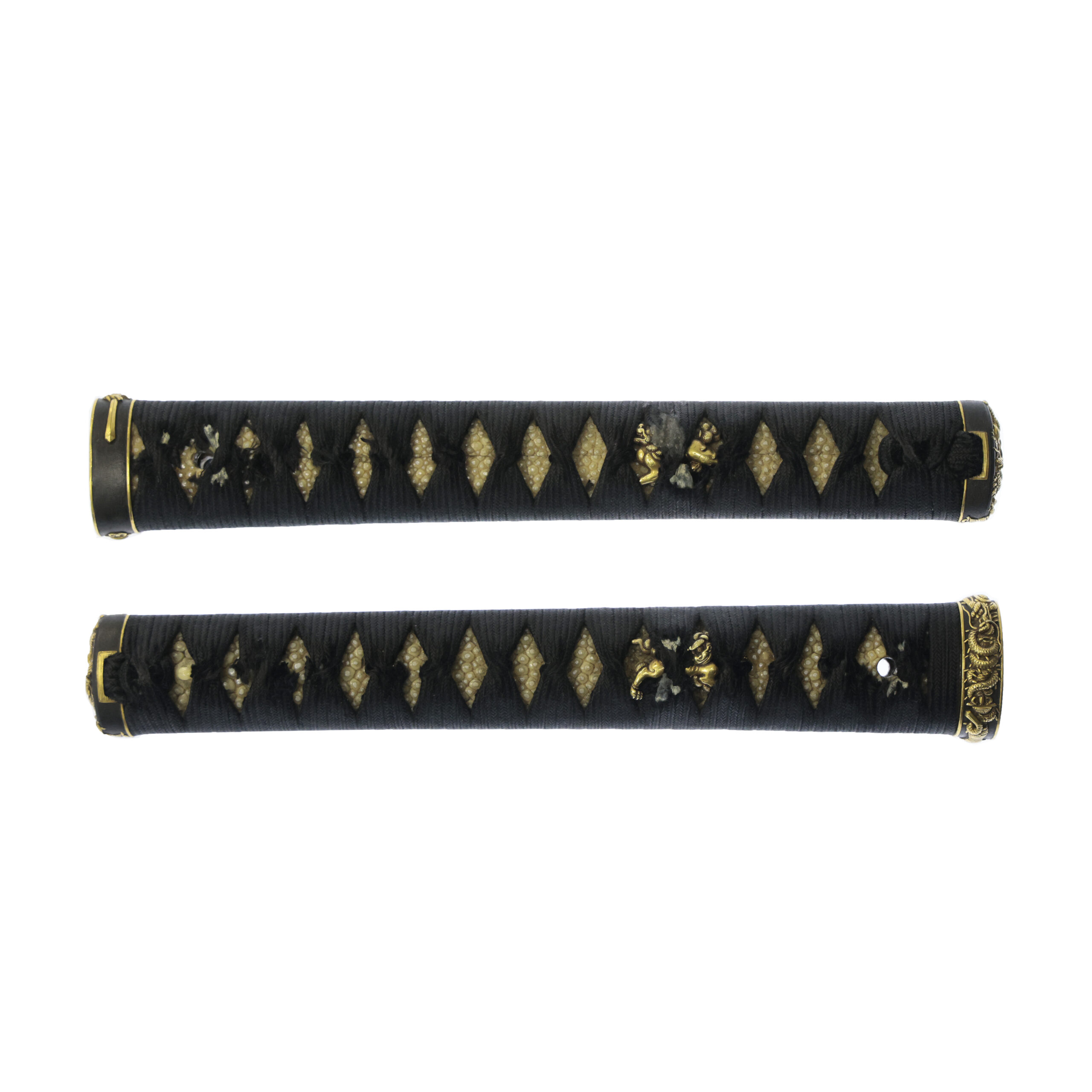
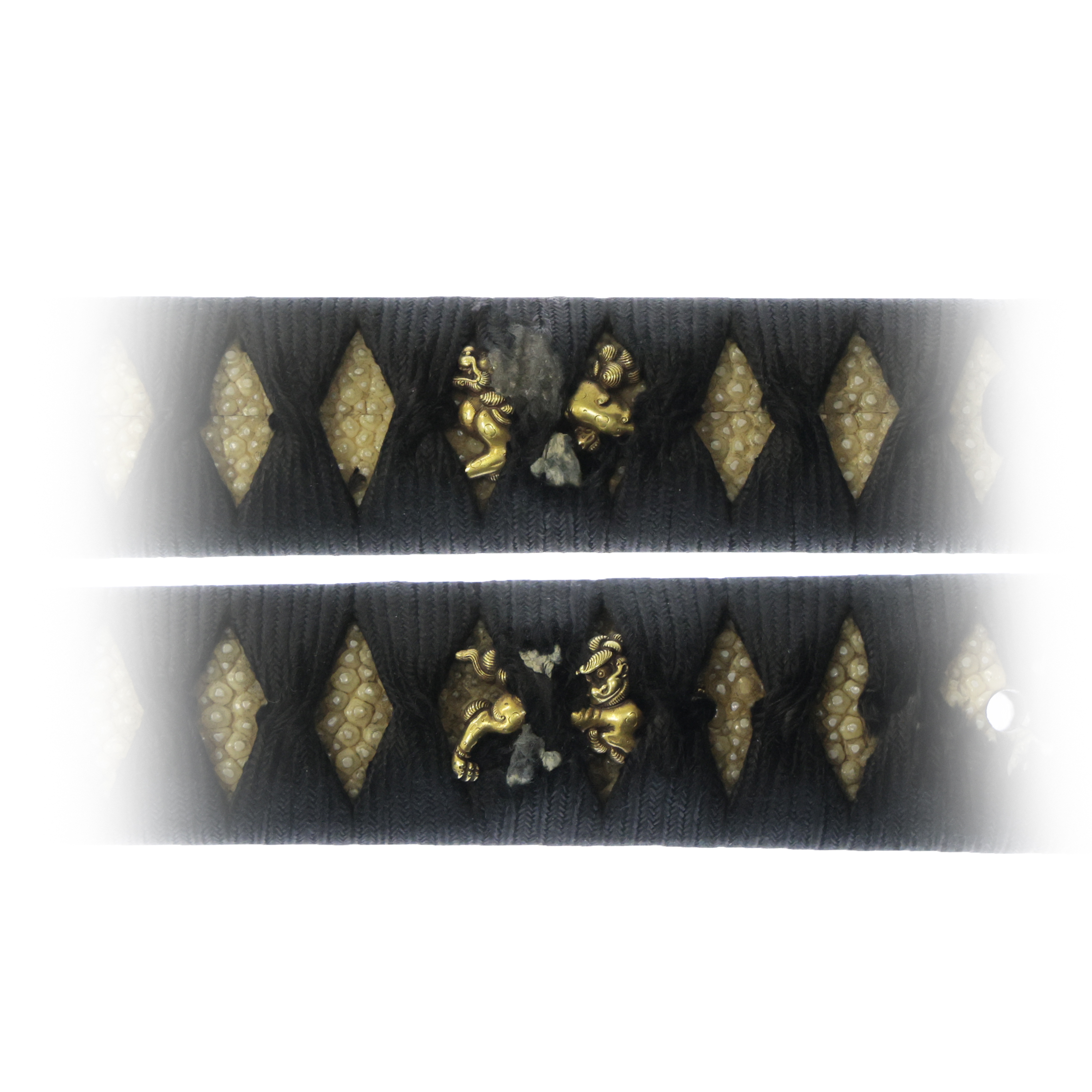


Tsuba and Habaki:Tsuba is the handguard for the Japanese Sword and Habaki is the equipment to make the blade not touch its scabbard inside. It prevents the blade from getting rusty and chipped.
This Tsuba is a round iron sword guard featuring raised carvings and delicate openwork in selected areas. The rim is inlaid with gold, reflecting the height of traditional craftsmanship and elaborate decorative techniques.
The design, known as Kassen-zu (合戦図, “battle scene design”), vividly portrays Samurais on horseback engaged in fierce combat. The detailed yet dynamic carvings convey a strong sense of movement and realism, capturing the intensity of the battlefield. It is a highly impressive piece that exemplifies both artistic expression and martial spirit.
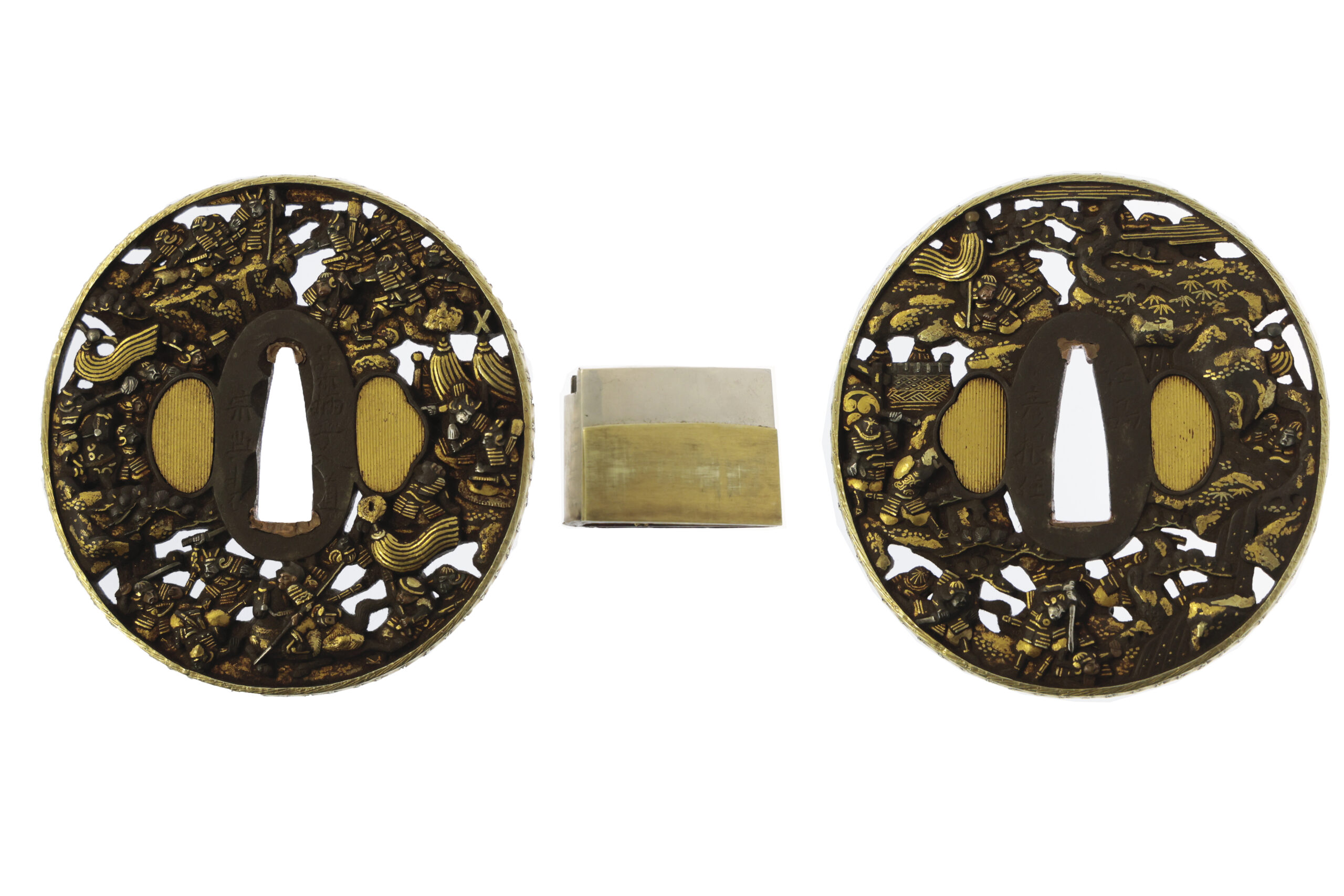
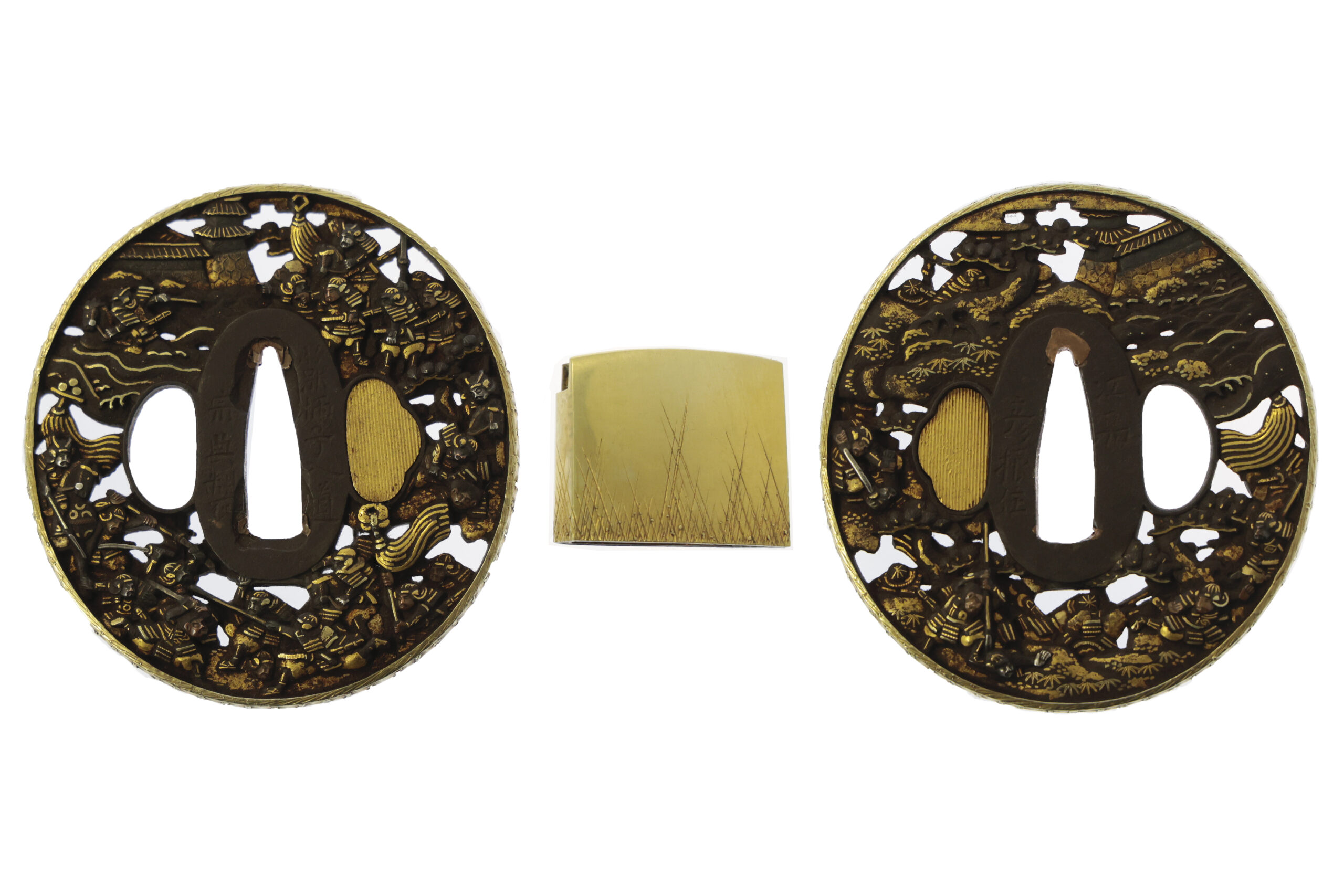
Saya: Saya is the scabbard for the Japanese sword.
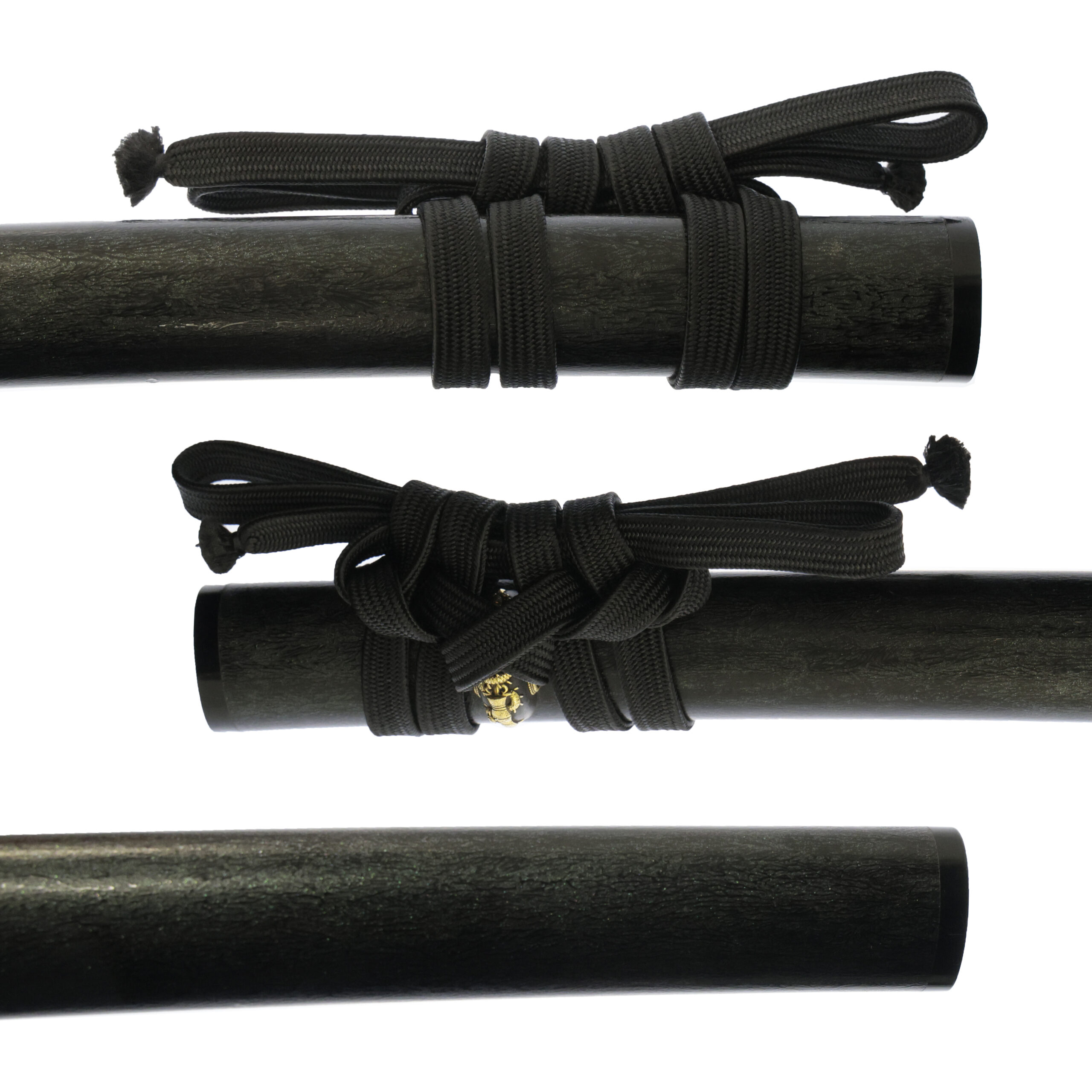
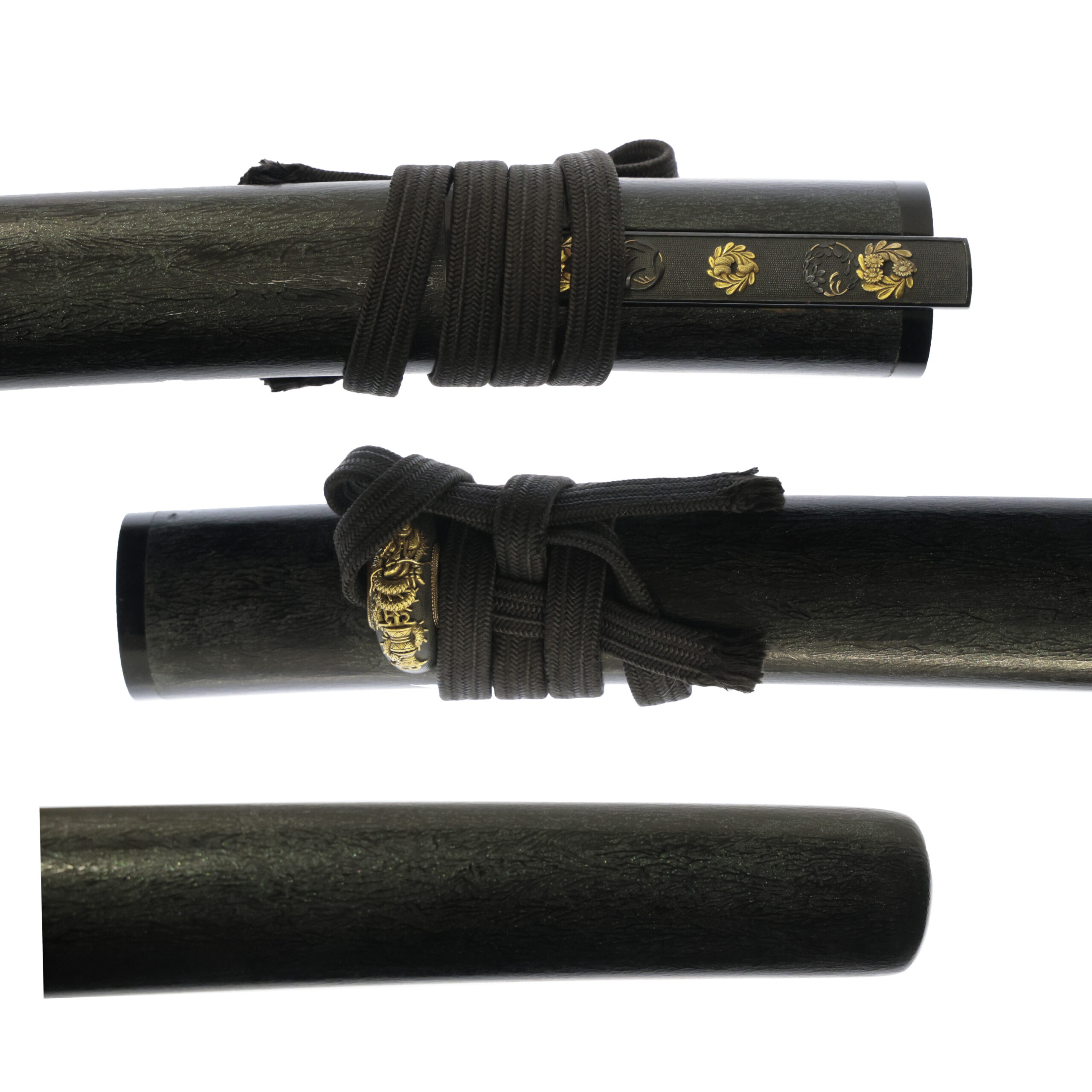
Authentication Paper:NBTHK Kicho Certificate for the Katana (No. 62049) & Tokubetsu Kicho Certificate for the Wakizashi (No. 62048) & Koshirae
NBTHK, also known as Nihon Bijutsu Touken Hozon Kyokai (the Society for the Preservation of the Japan Art Sword), is one of the oldest Japanese sword appraising organizations in modern-day Japan. They authenticated these two blades on February 18th in the 37th year of Showa (1962). They appraised Katana as a Kicho Touken and Wakizashi & Koshirae as a Tokubetsu Kicho Token, the blade worth preserving for Japanese society. The purchaser will receive these original certificates as well. We can also translate what is written into English and make a PDF file for your record if you request.
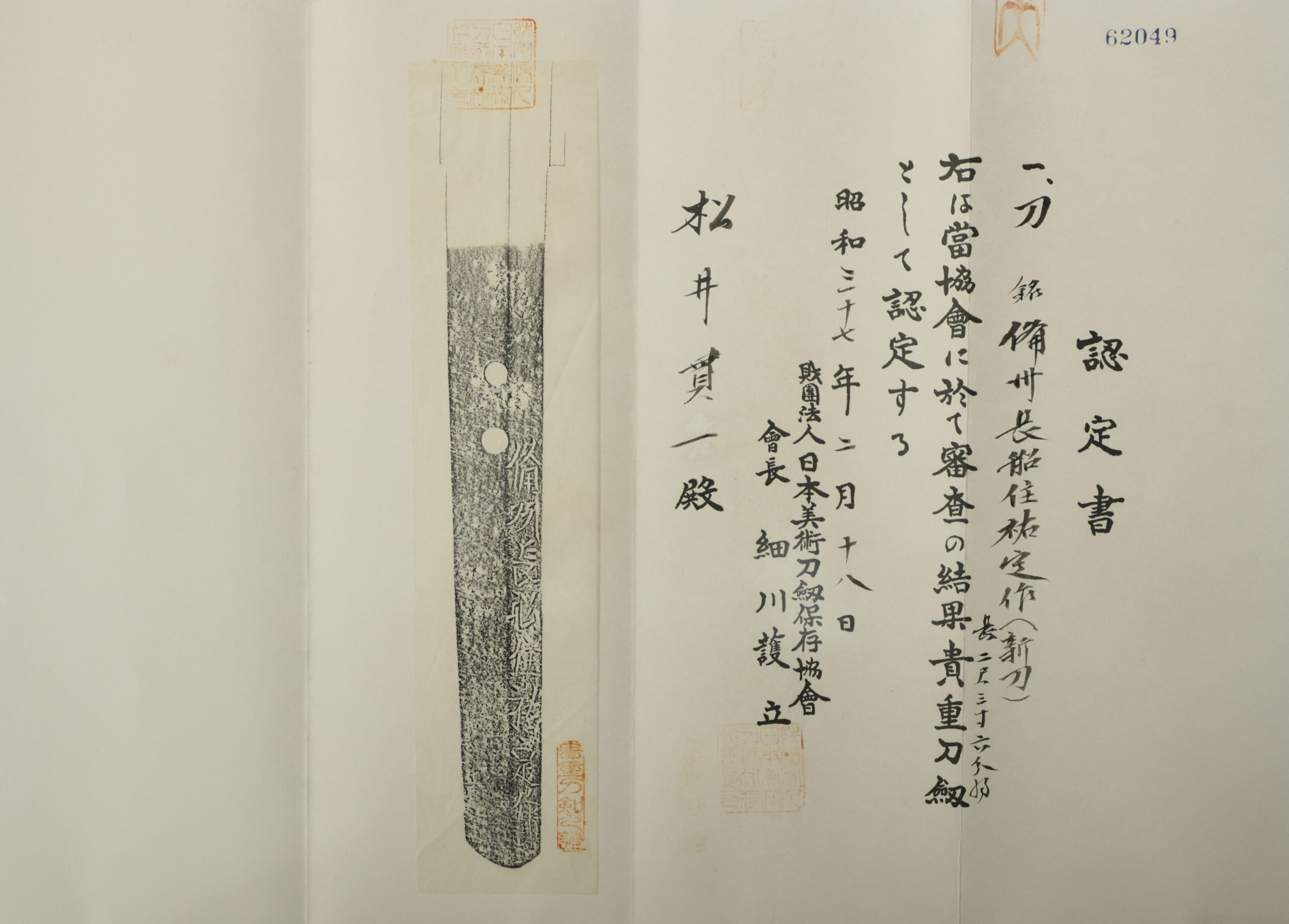
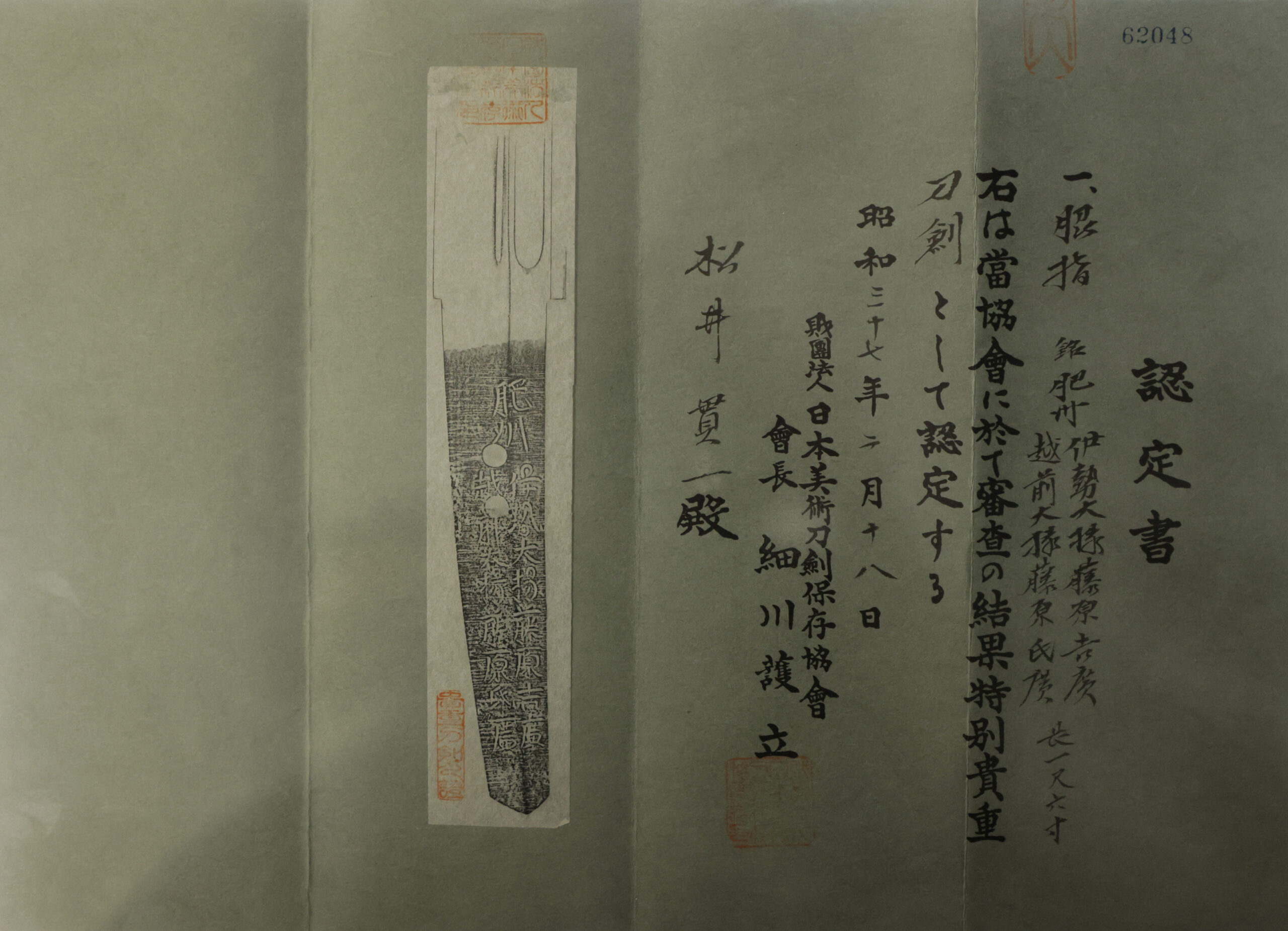
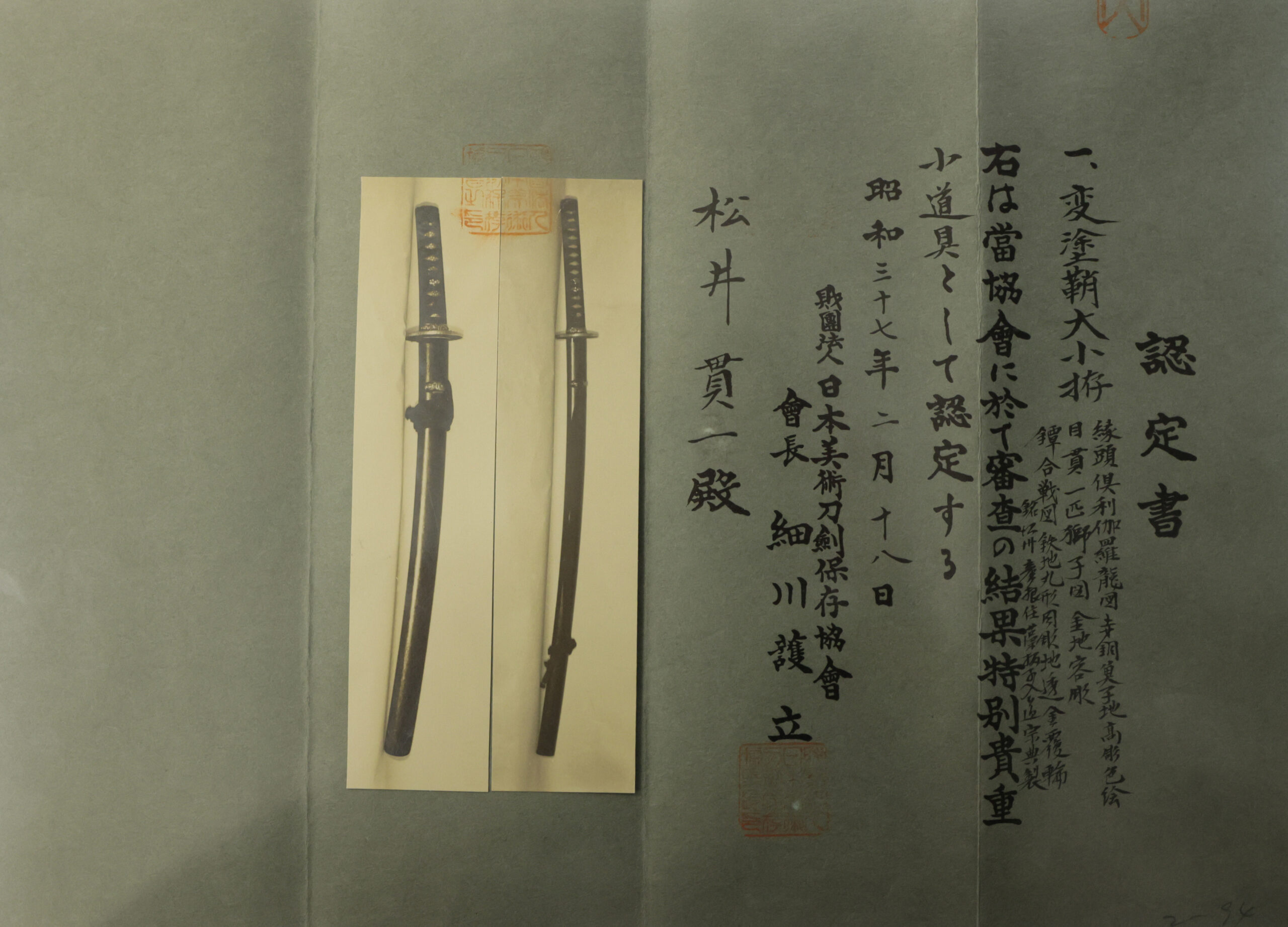
Registration Number : Gifu 19272 – Gifu 19273
The Board of Education in Gifu prefecture issued a registration paper for this Katana blade and Wakizashi blade. It is called Jyu Hou Token Rui Torokusho (銃砲刀剣類登録証). Bunkacho (The Agency for Cultural Affairs) acknowledges a Japanese sword with this paper as a work of art.
The sword needs to be traditionally hand-forged and made of Tamahagane carbon steel to be registered in the system. With this paper, its owner in Japan can legally own an authentic Japanese sword. Based on this registration number, we will apply for its export permit.
This paper will need to be returned to the board of education when the sword is being shipped abroad, but you can receive a copy of it. An English translation of this registration paper is available on request.
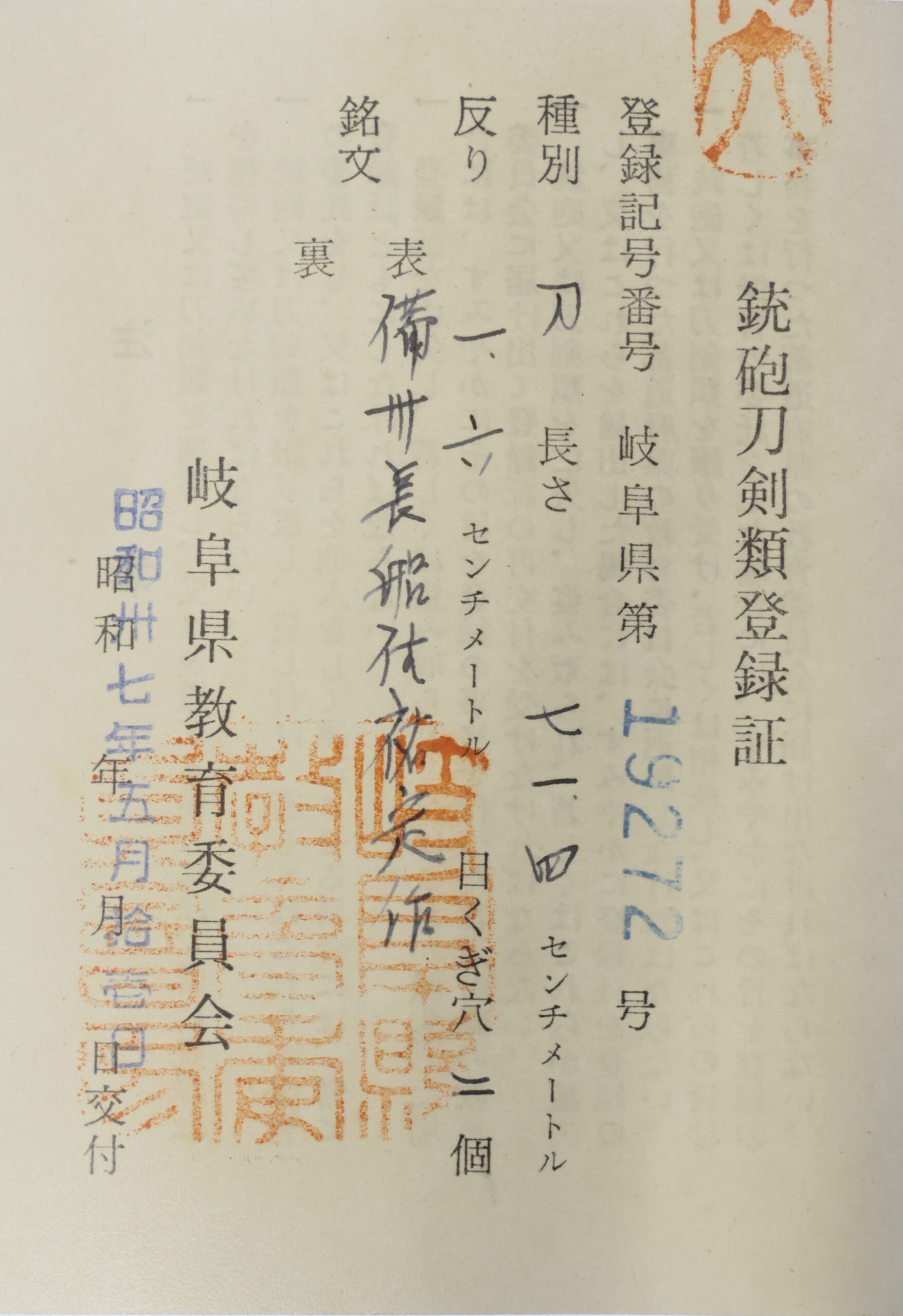
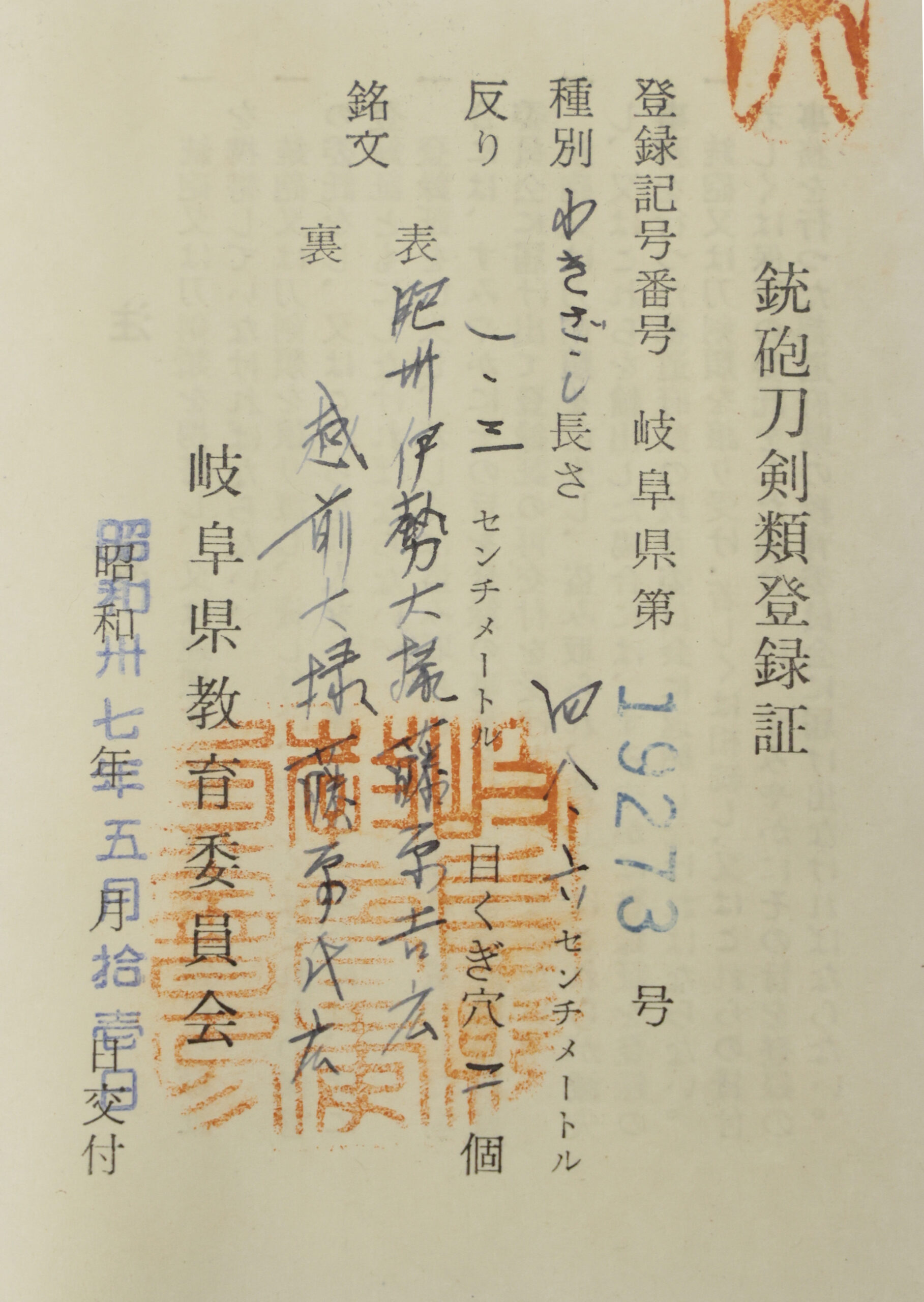
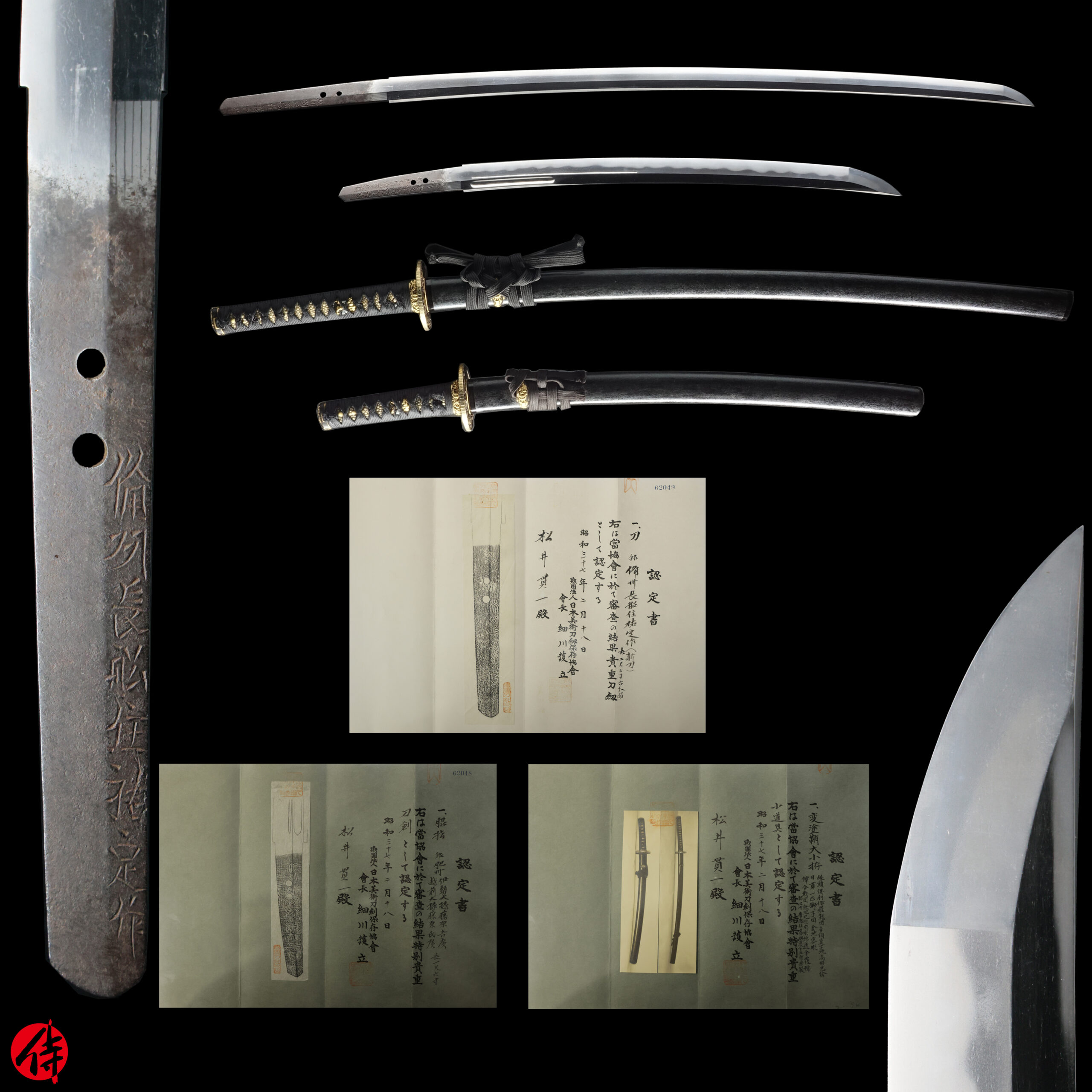
—————————————————————–
【About us】
Samurai Museum is located in Tokyo, Japan, exhibiting antique artifacts related to the Samurai history. Samurai Museum Shop is the place for those who are interested in Japanese culture and craftsmanship. We deal with antique Samurai swords/armor, traditional crafts made in Japan and so on.
【Japanese Sword& Export Process】
The Japanese swords we deal with are hand-forged edged swords made in Japan. It was made from the traditional carbon steel called TAMAHAGANE(玉鋼). Samurai Museum is familiar with the proper legal procedure for an antique/ authentic Japanese sword to be exported from Japan. We have sent more than 1000 Japanese swords for the past few years (~2025) to amazing owners who appreciate its historical value.
Each Japanese sword is registered under the Agency for Cultural Affairs and the Board of Education in Japan. They issue a registration paper for each Japanese sword for its owner in Japan to legally possess it. The Japanese sword with its registration paper means it was traditionally hand-forged in Japan.
To legally export the sword from Japan to other countries, we will have to apply for its permit to the Agency for Cultural Affairs(Bunkacho) and return the original registration paper to the Board of Education. It normally takes around 2-4 weeks to receive this permit after submitting required documents. And we would like you to expect at least 1-1.5 months for your order to arrive at your given address after you ordered. For more detailed info, please click here.
It is allowed for residents in Japan to own authentic Japanese swords without a special license as long as they come with registration papers. Please feel free to contact us if you are a resident of Japan, whether temporarily or permanently. We will also assist you when you leave Japan and need to obtain the export permit.
【Payment Method】
We accept payment through Stripe (Credit card), PayPal, Apple Pay or ChromePay, all of which are secure payment methods. Also, you don’t need to make an account on Stripe for the checkout. If you prefer other payment method, please contact us. After confirming your payment, we will apply for an export permit. You may either pay in JPY, USD, AUD, CAD,EUR CHF or GBP. The price is set in Japanese Yen. Prices in other currencies are automatically calculated based on the latest exchange rate.

* If the amount is above 1 million JPY, Stripe or wire transfer will be the only options for payment.
【Shipping】
We have shipped authentic Japanese swords to the USA, Canada, Mexico, Germany , Belgium, France, Finland, Hong Kong, Australia. If you don’t live in these countries and like to order, please contact us first before making a purchase. We offer Free International Shipping as long as we can send antique Japanese swords by EMS.
We normally ship by EMS (Express Mail Service) provided by Japan Post. We will send you a tracking number for your order as soon as we hand it to the post office. We will put 100 % insurance on the shipping document without any extra charge. Based on the total amount, there might be a duty tax or other fee for you to pay, depending on the countries. We use package cushioning to protect the item and put it in a PVC pipe, which is one of the most secure packages because of its durability.
It will normally takes 5-14 days for the item to arrive at your given address after we dispatch it. Time of delivery is estimated as accurately as possible by the carrier but does not take into account any delays beyond our control such as by inclement weather, post office holiday seasons.
* If you live in Australia and like to purchase an authentic Japanese sword, please click here to know the detail.
* If you live in the UK and like to purchase an authentic Japanese sword, please contact us first and click here to know the detail.

【Review】
Here is one of the reviews we received from a customer who purchased an authentic Japanese sword from us. For more reviews, please click here.
“My experience overall with the whole process was wonderful. I had many questions about the history and process to purchase these treasures. All my questions were answered very timely and complete. The staff is very knowledgeable and very well versed if any questions do arise.”
【How to make sure the condition】
Please keep in mind that what you are going to purchase is an antique item. We uploaded high resolution photos for you to check its condition thoroughly. If you like to see more photos with different angles, please feel free to contact us. We will be happy to send them to you so that you can make informed decision. It is essential for us to know that you are happy with your choice of a sword. and we are prepared to use the best of our ability to serve you.
【How To Contact Us】
Please contact us through email, Facebook Messenger or Live Chat if you have any questions. You can find each icon on the right side of the website. Please click one of them to reach us. We will reply to you within 1-2 business days.
【The Art of Nihonto (Japanese Sword)】
Samurai’s history is a profound, eloquent legacy of ancient Japanese warriors in which millions of people worldwide are being fascinated. If you like to find out the art of Nihonto, please click here.
【A Guide to Japanese Sword Maintenance】
After acquiring an genuine Japanese sword, it is also important to know how to take good care of it. Here is the special video for you. Mr. Paul Martin, Japanese sword expert, shows you how to give proper maintenance to your sword. By mastering how to clean the Japanese sword, its aesthetic beauty will last forever.
When you purchase a Japanese sword from us, you can get a Free Japanese sword maintenance kit. It comes with four tools(Choji Oil, Uchiko Whetstone Powder, Peg remover, Oil Applicator). By watching the video instruction above , you can enjoy learning how to maintain your Japanese sword while appreciating it. If you have any difficulty assembling the sword or cleaning the blade, you can feel free to contact us.
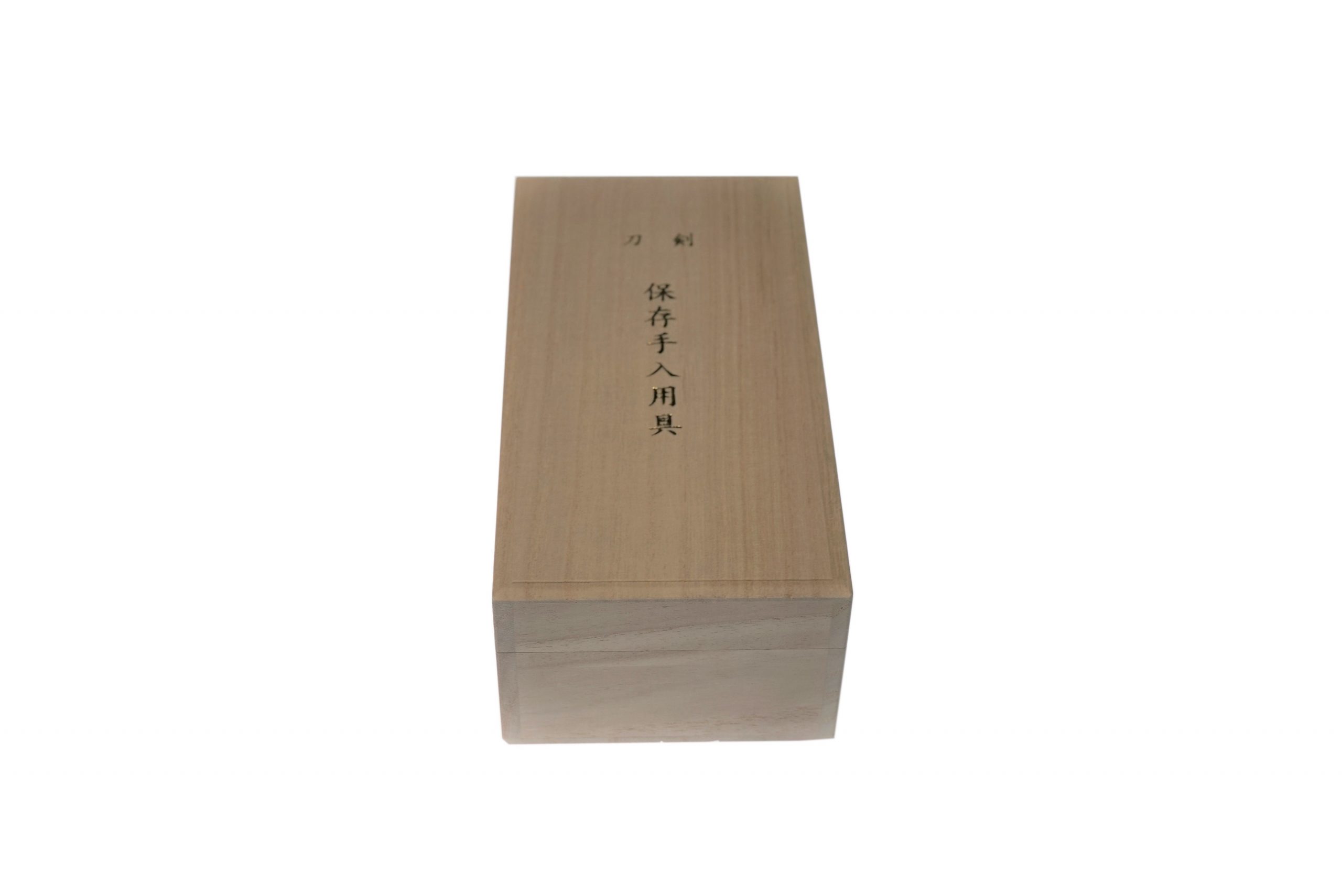
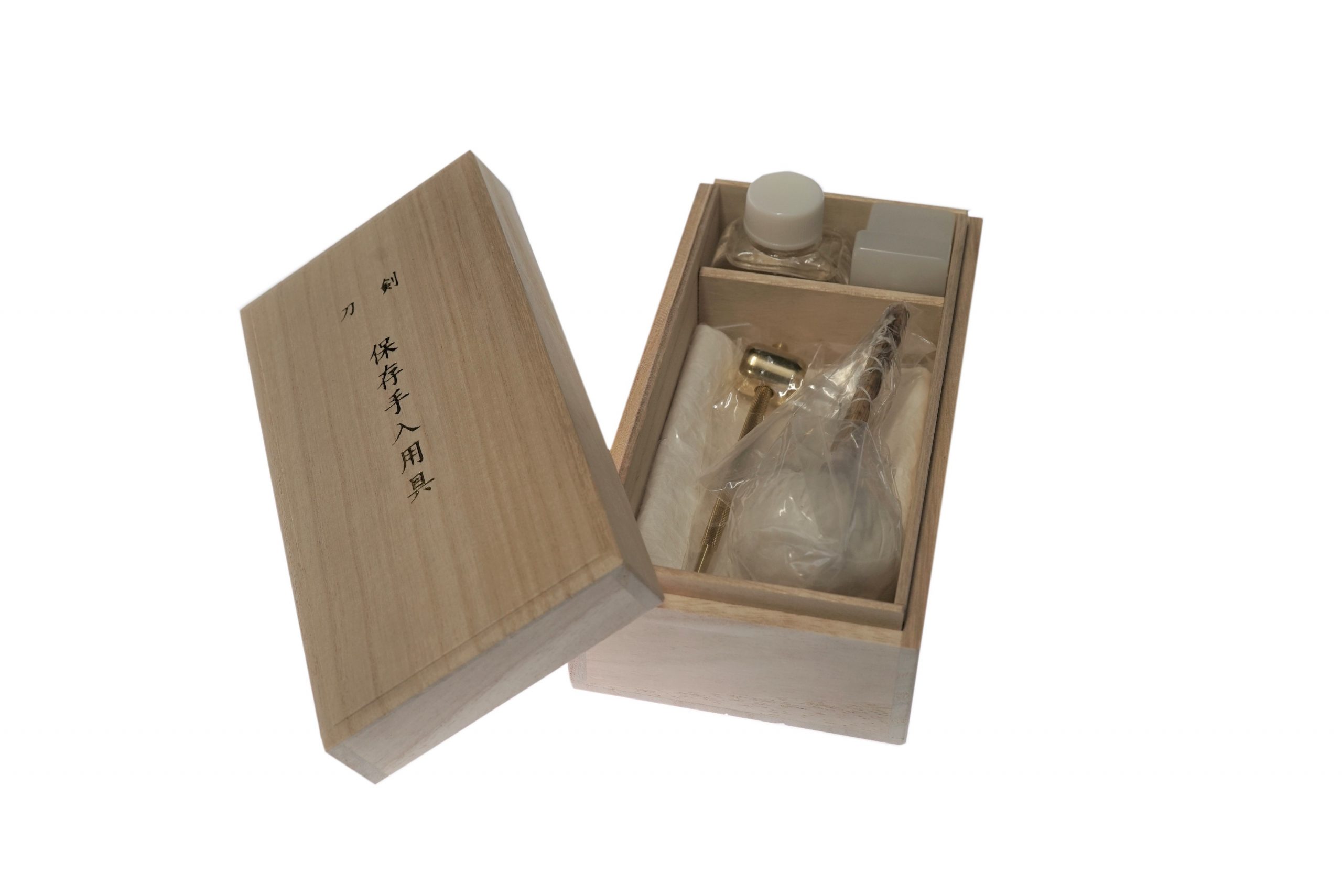
MORE ANTIQUE JAPANESE SWORD FOR SALE
SWORDS WITHOUT CERTIFICATES FOR SALE
LEARN JAPANESE SWORD TERMINOLOGY
Thank you for reading all the information on the page. If you have any difficulty choosing the right Japanese sword for you, we will be more than happy to help you find the one that speaks to you the most. Please feel free to contact us.
